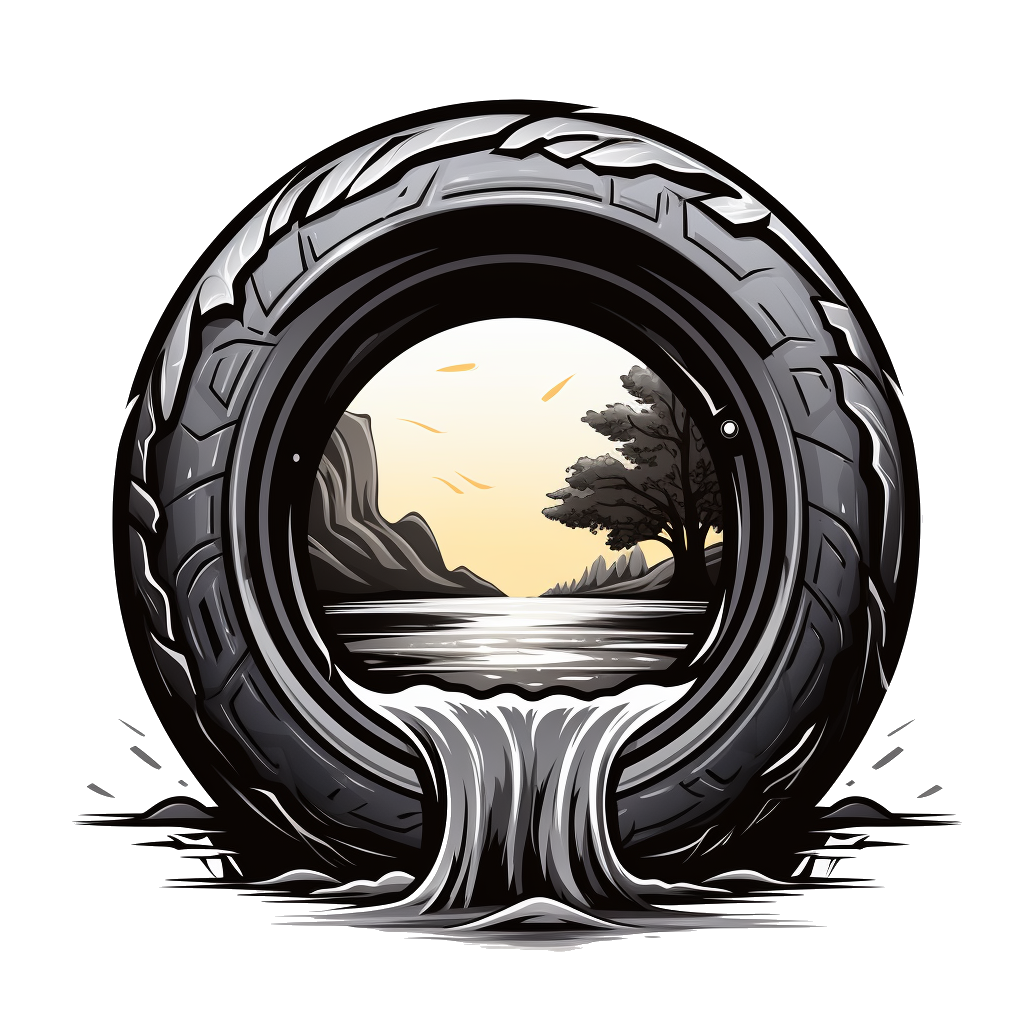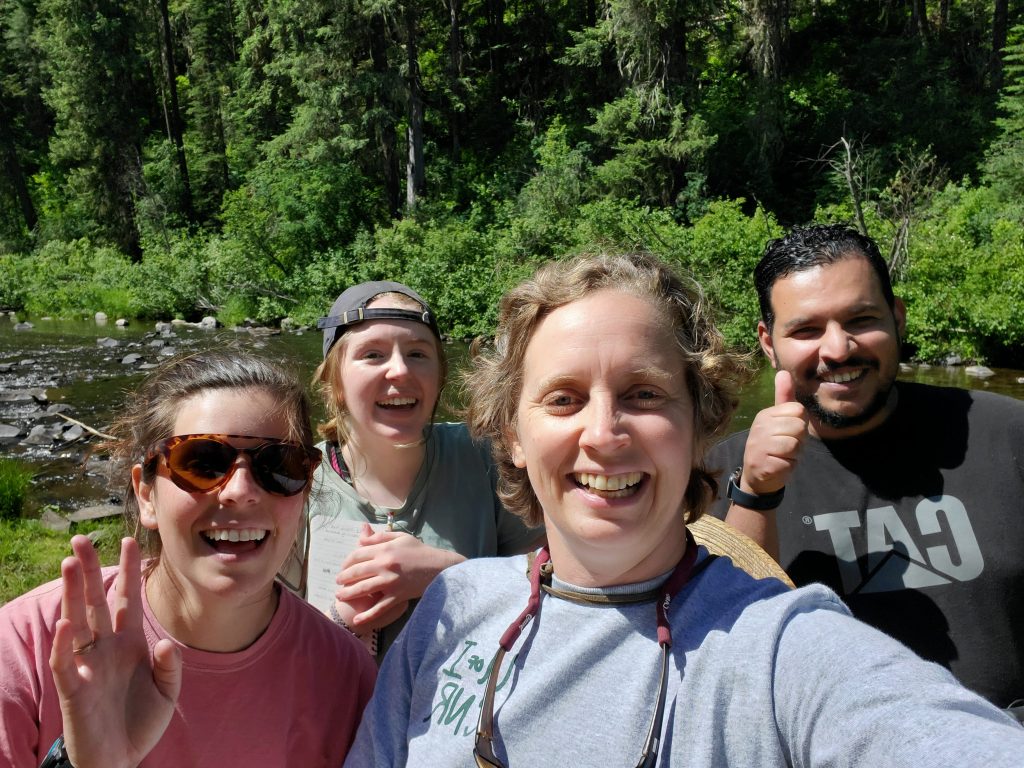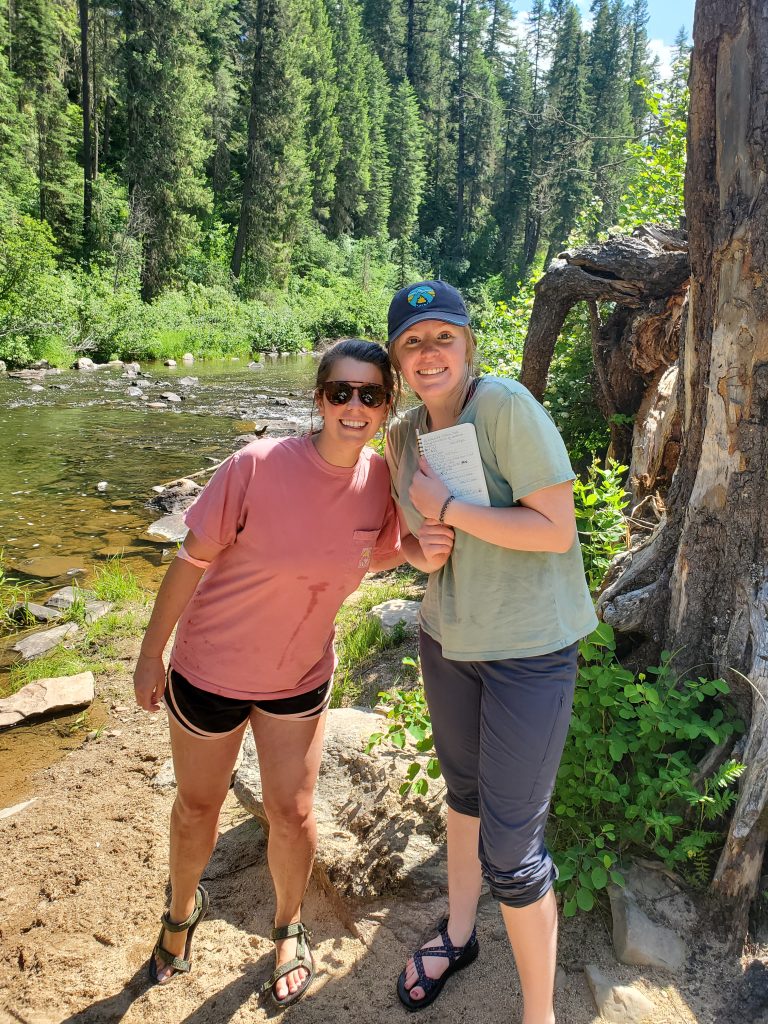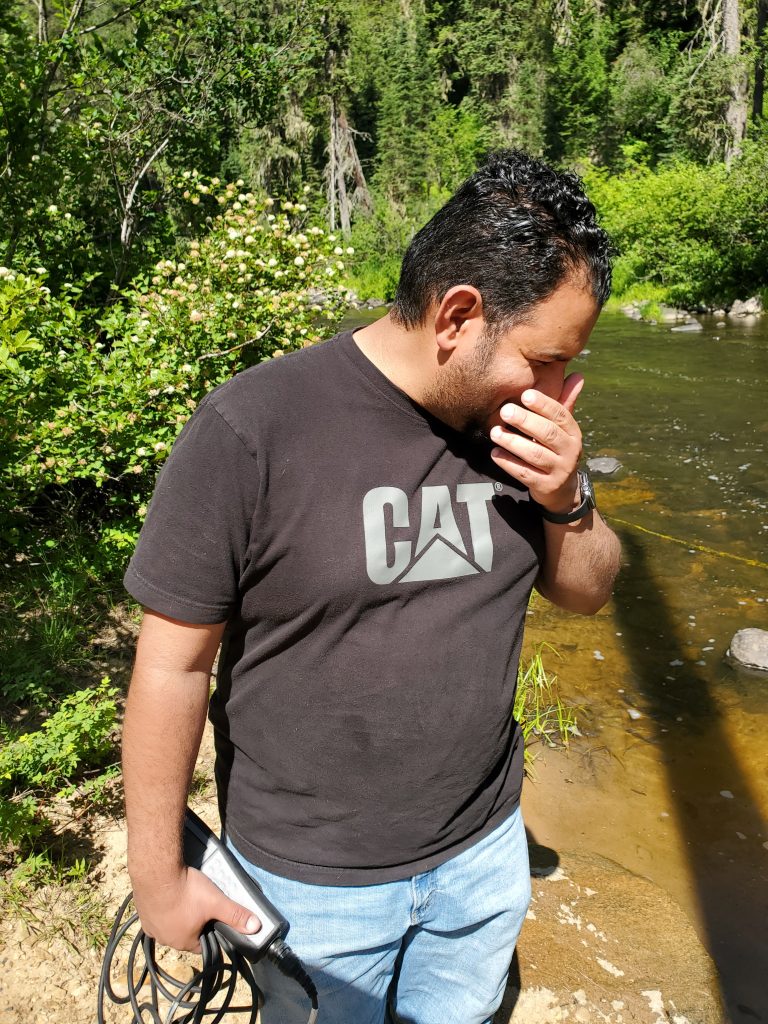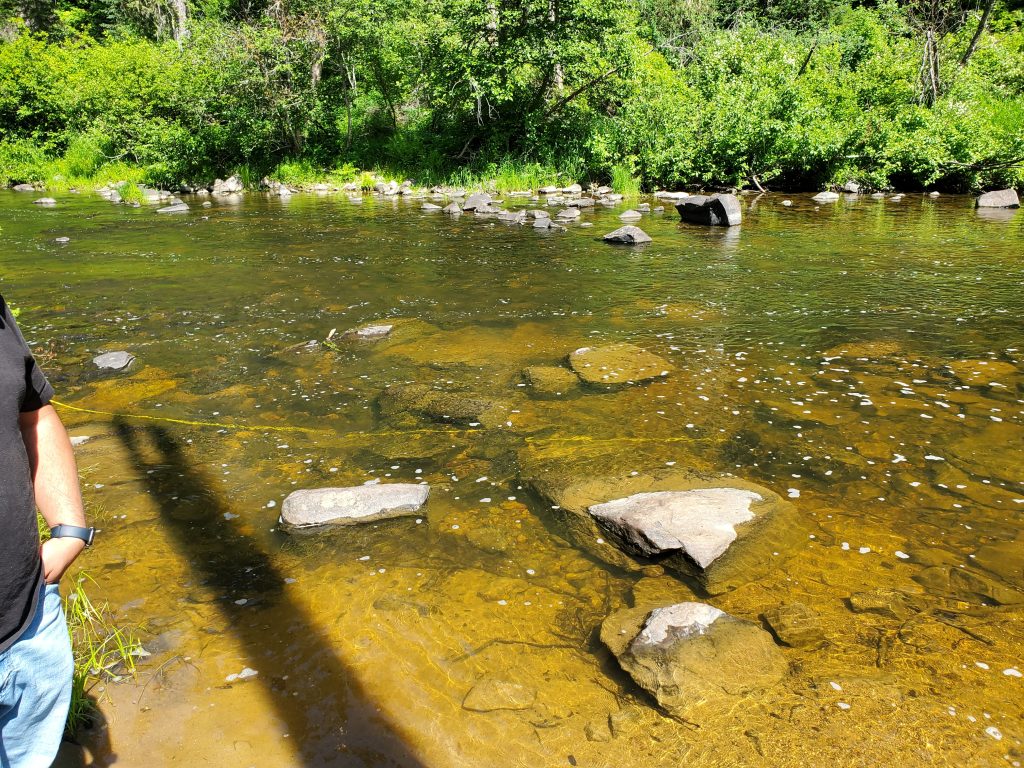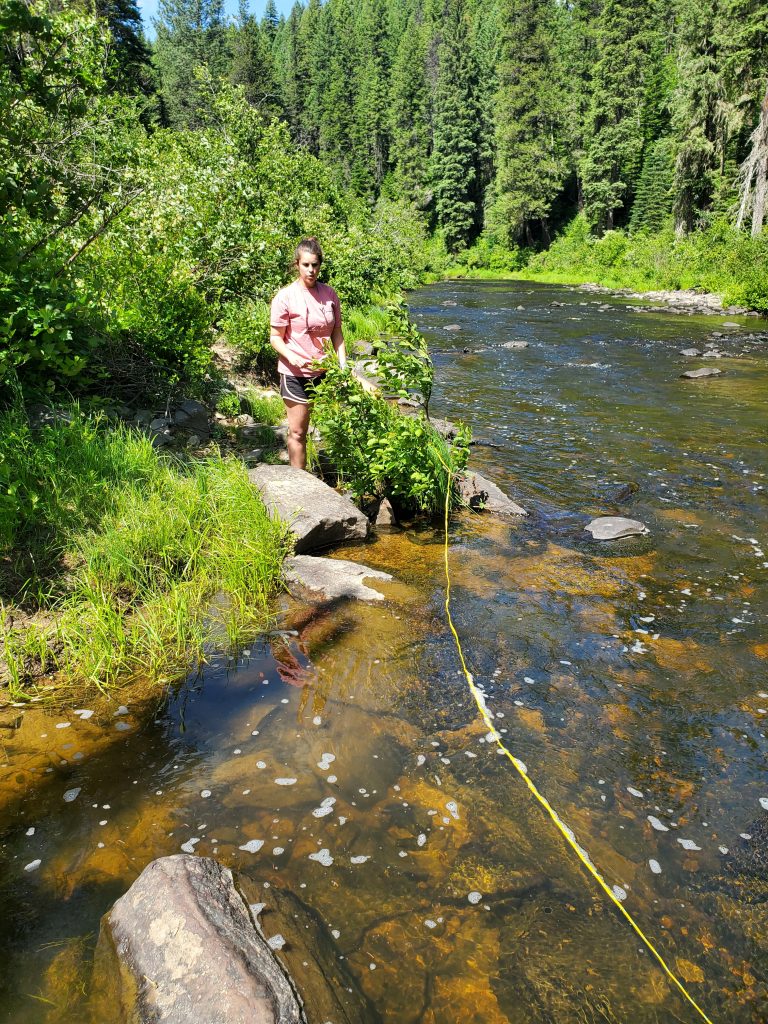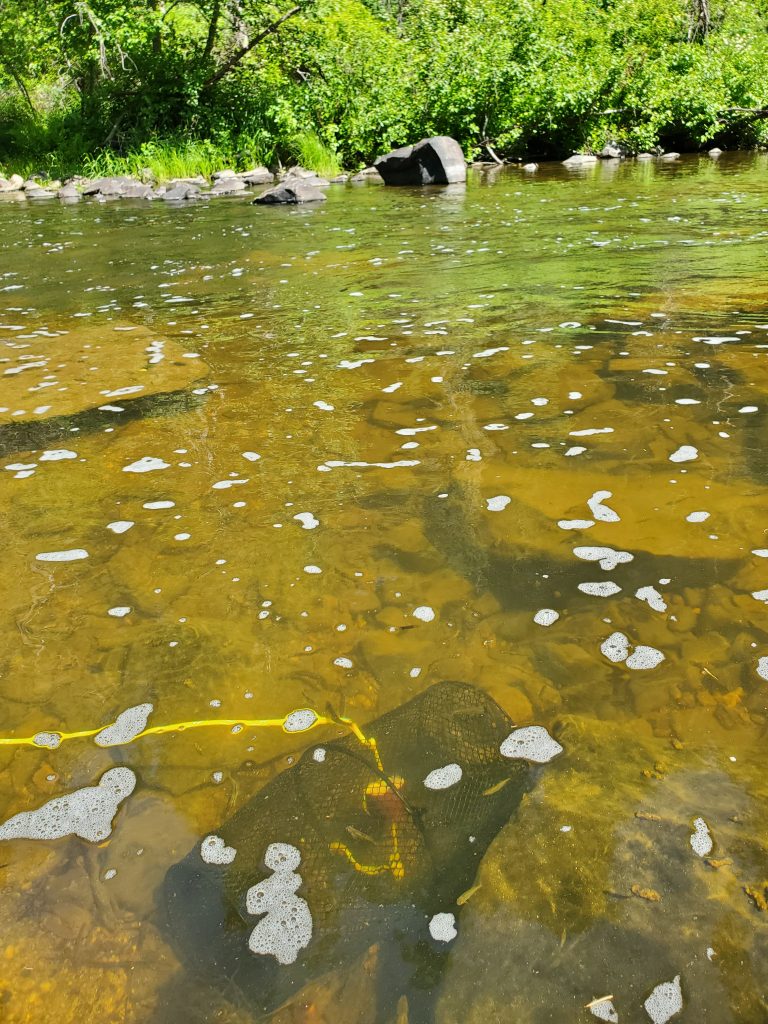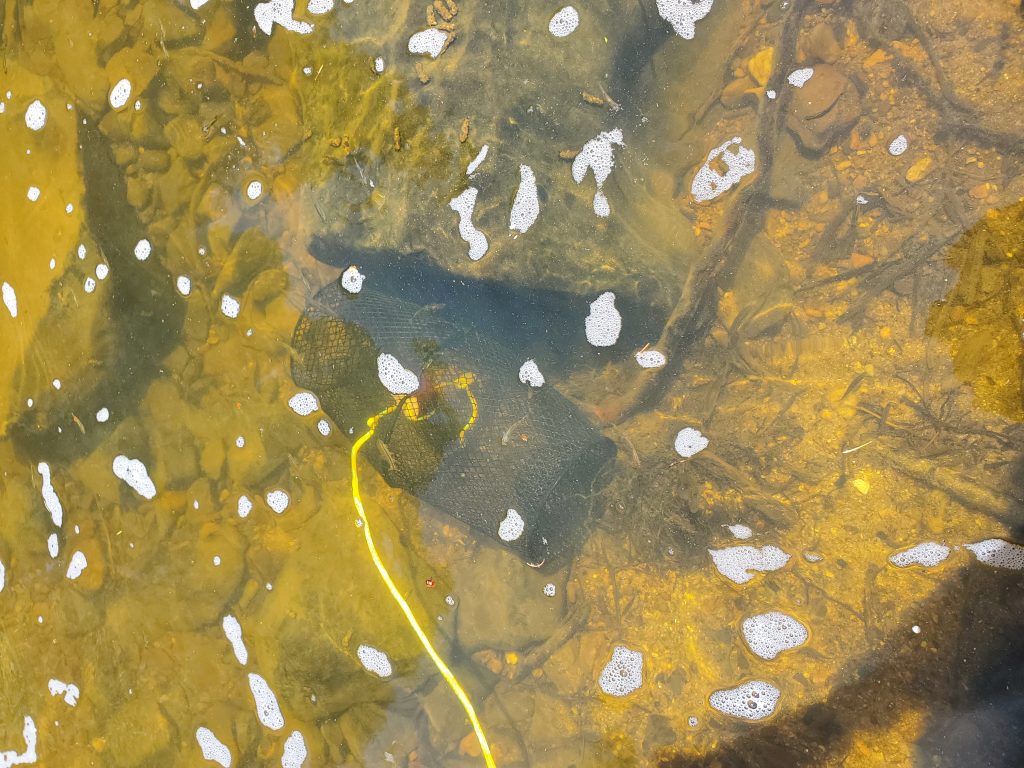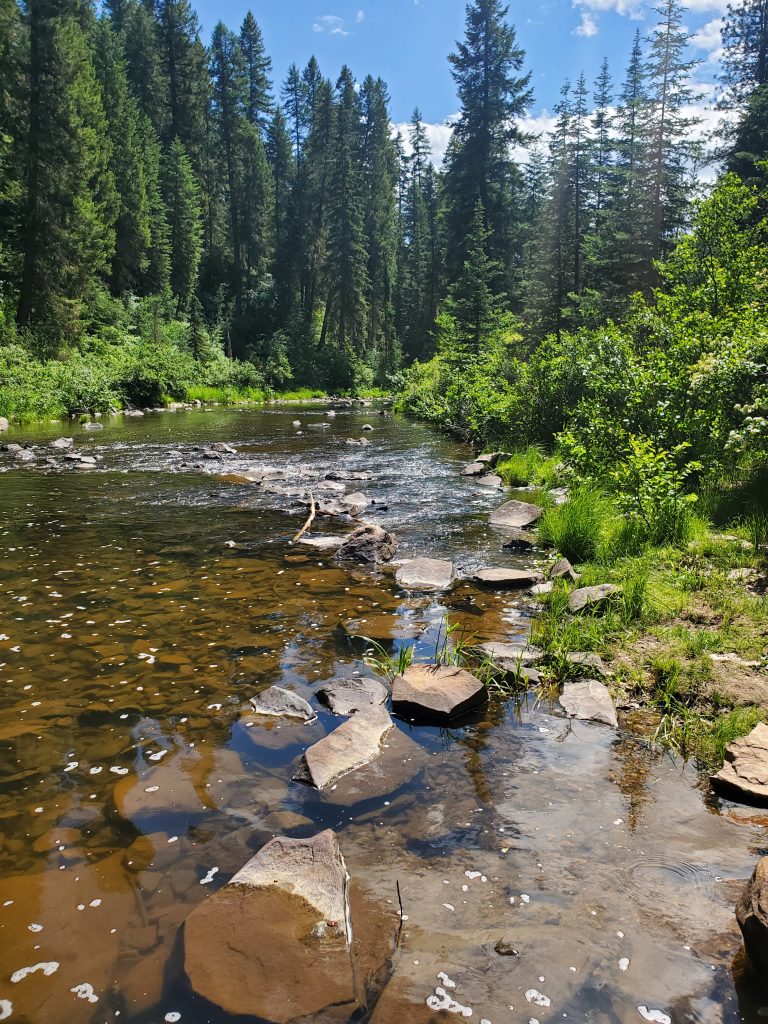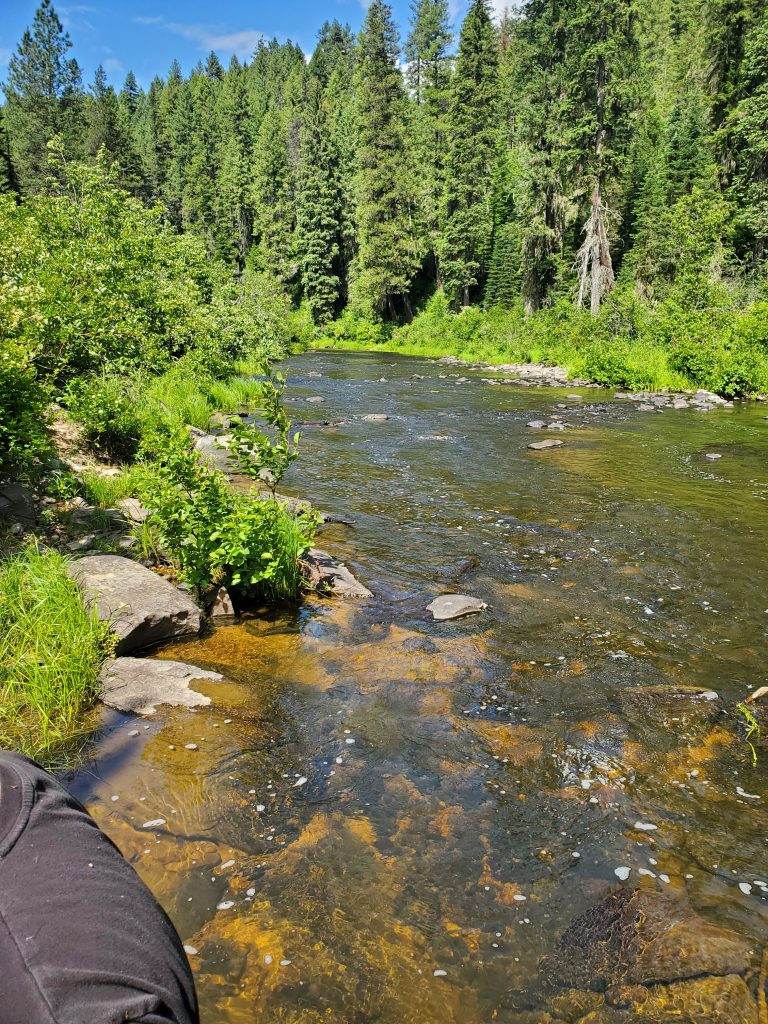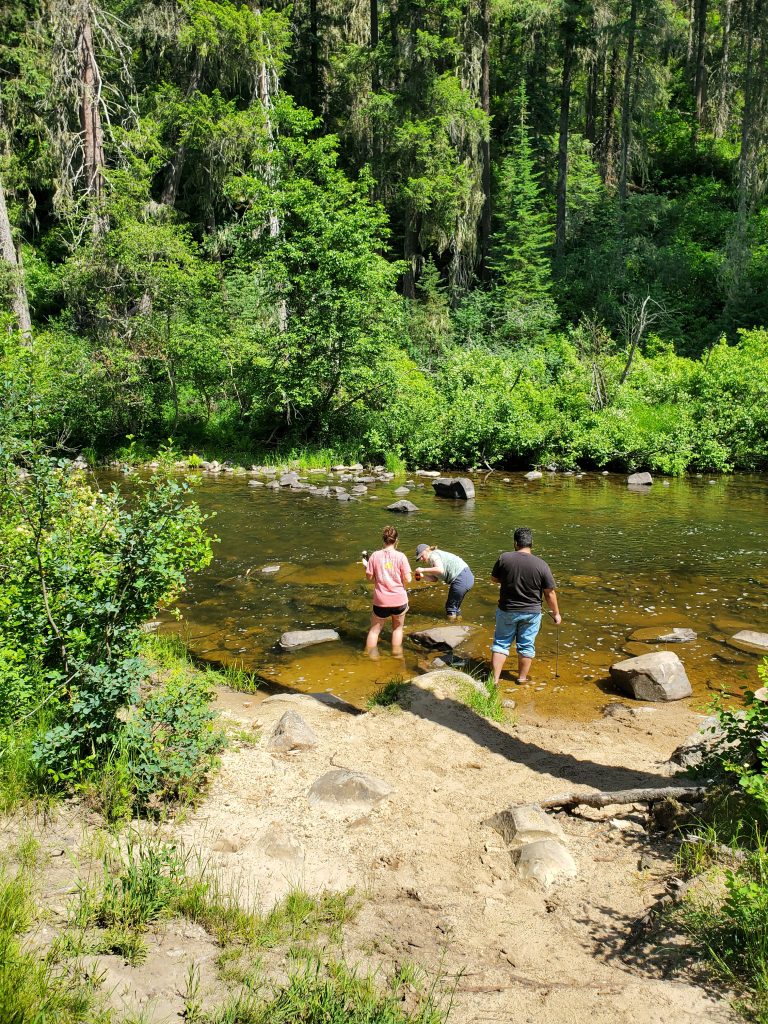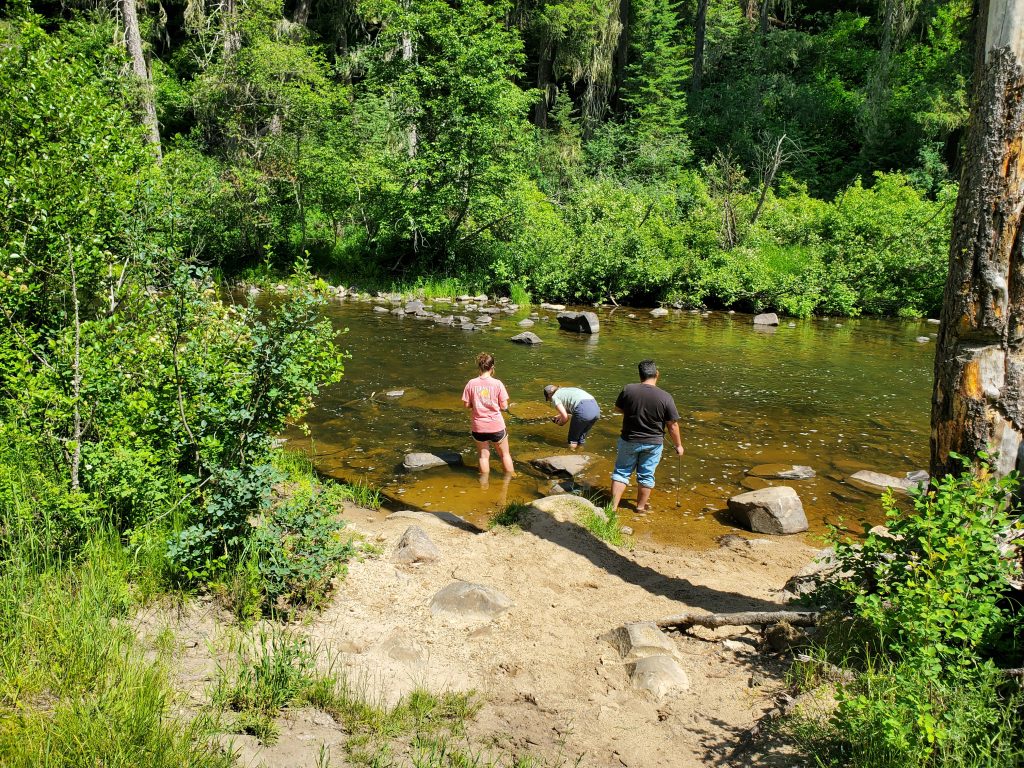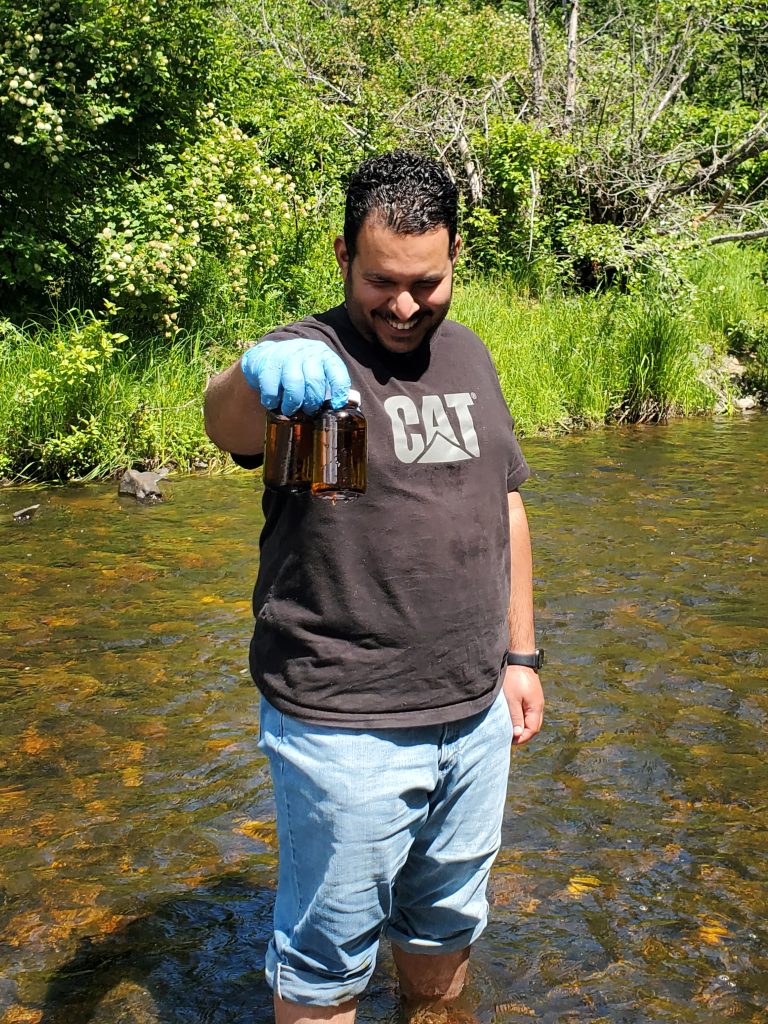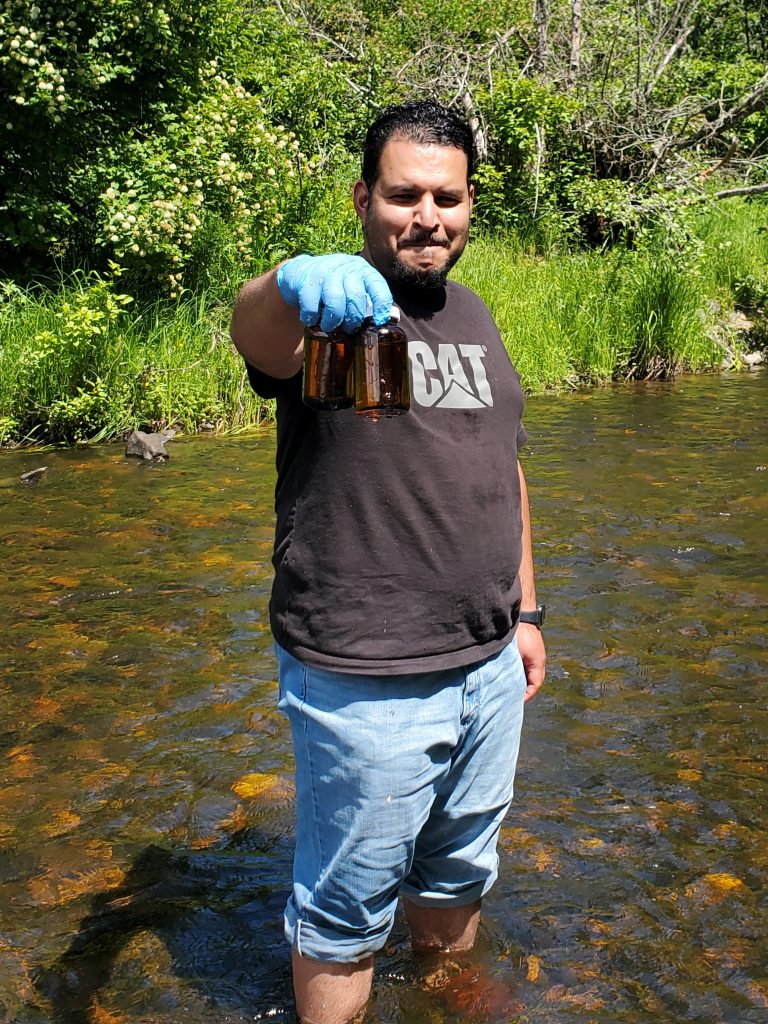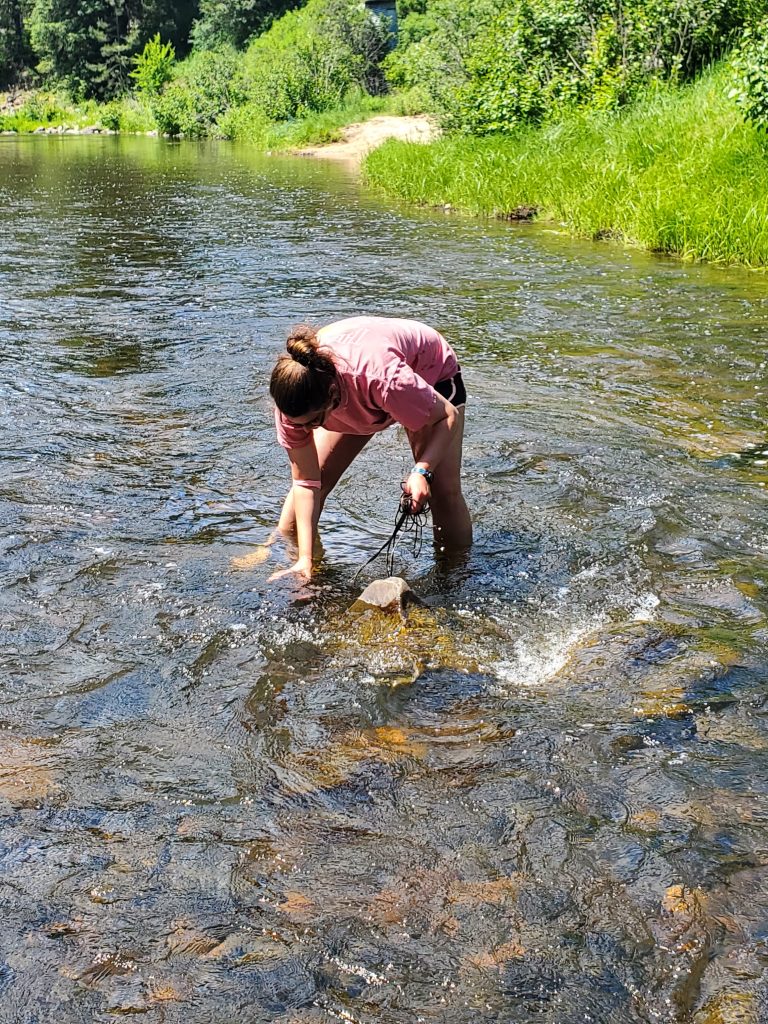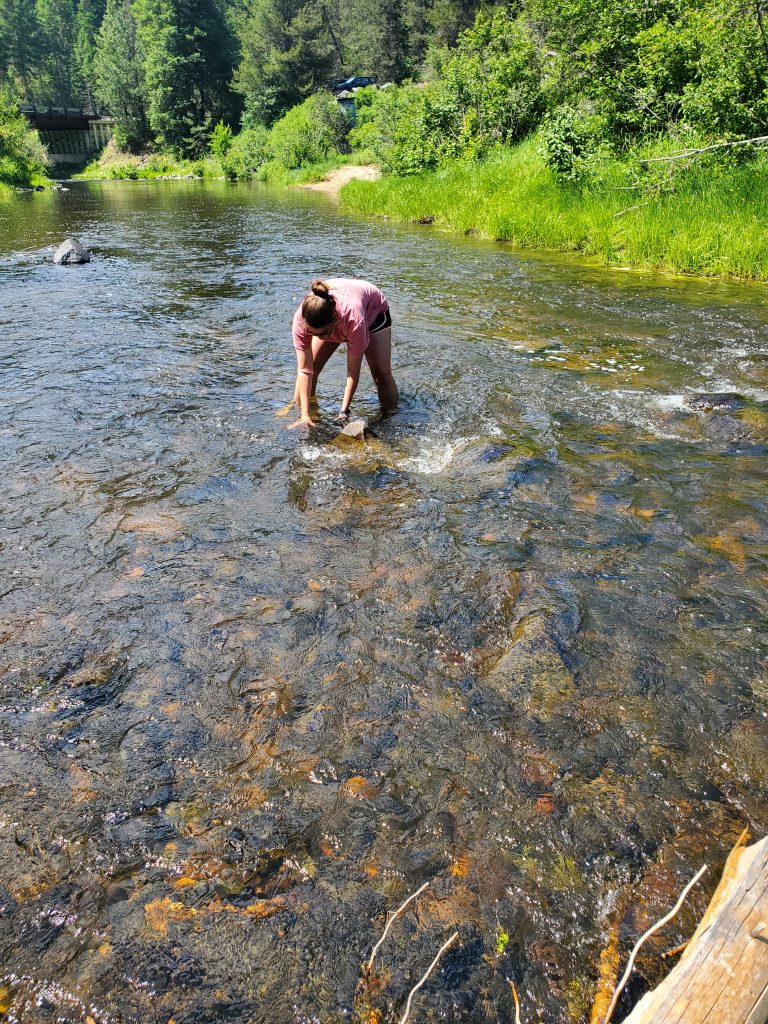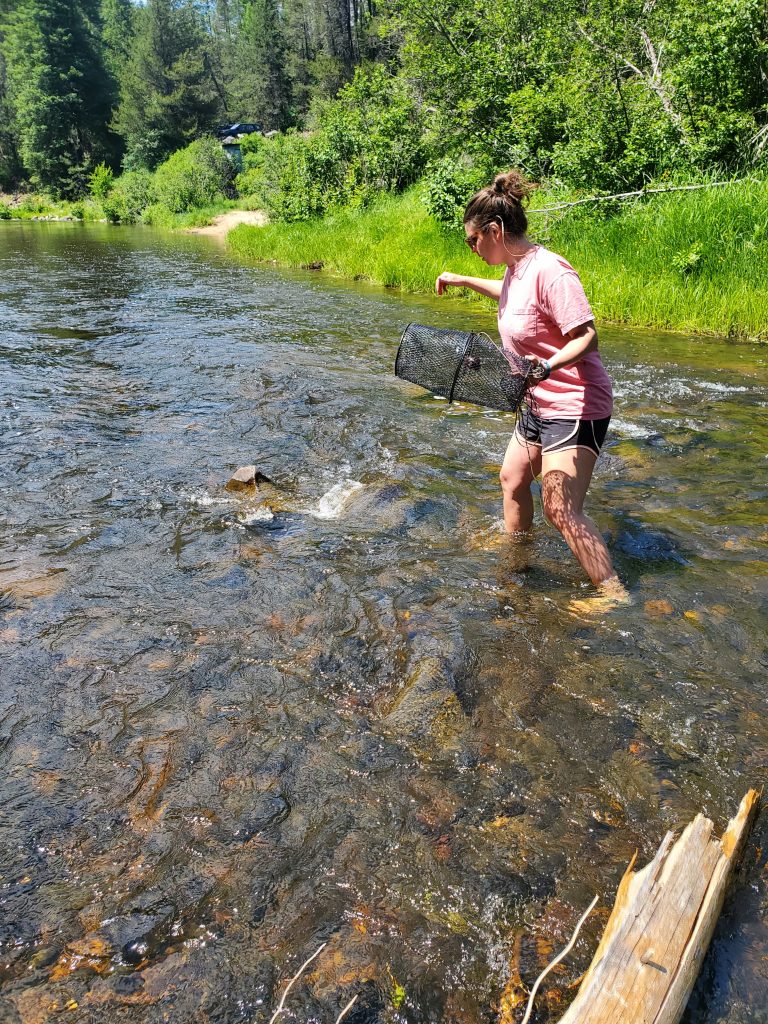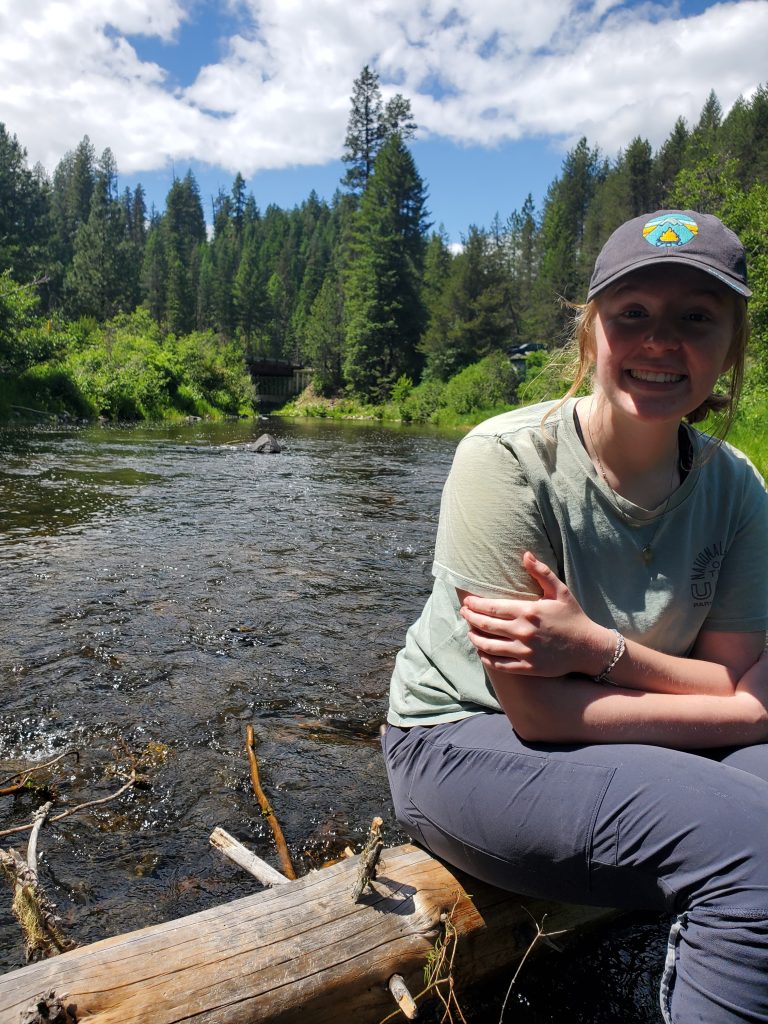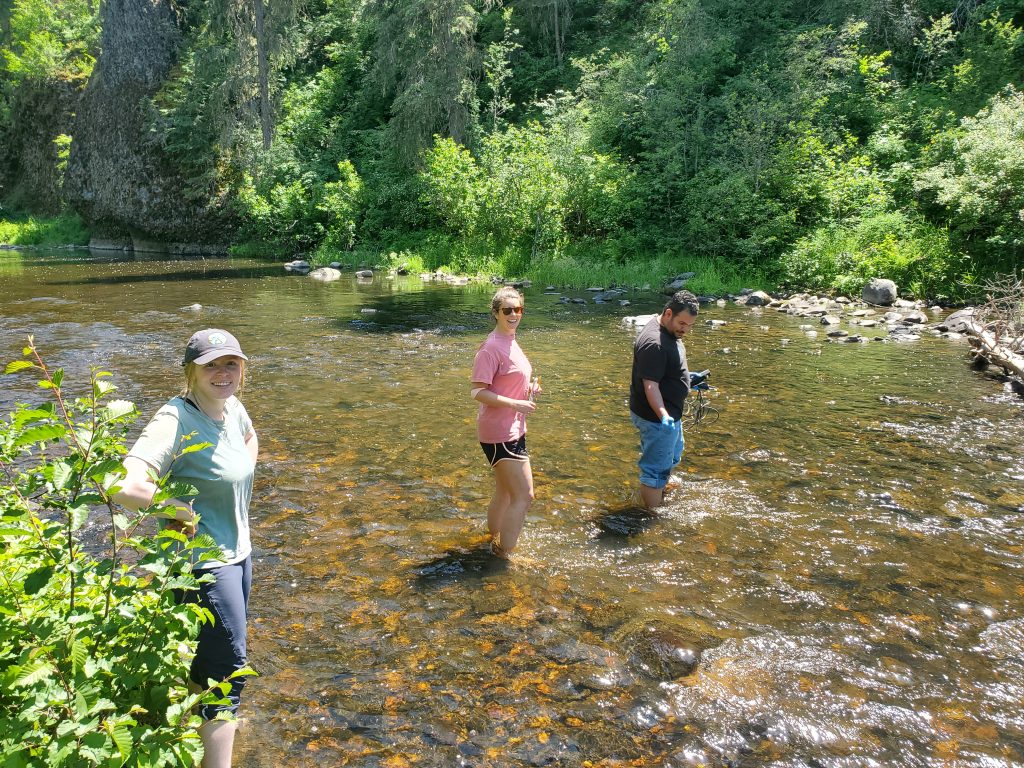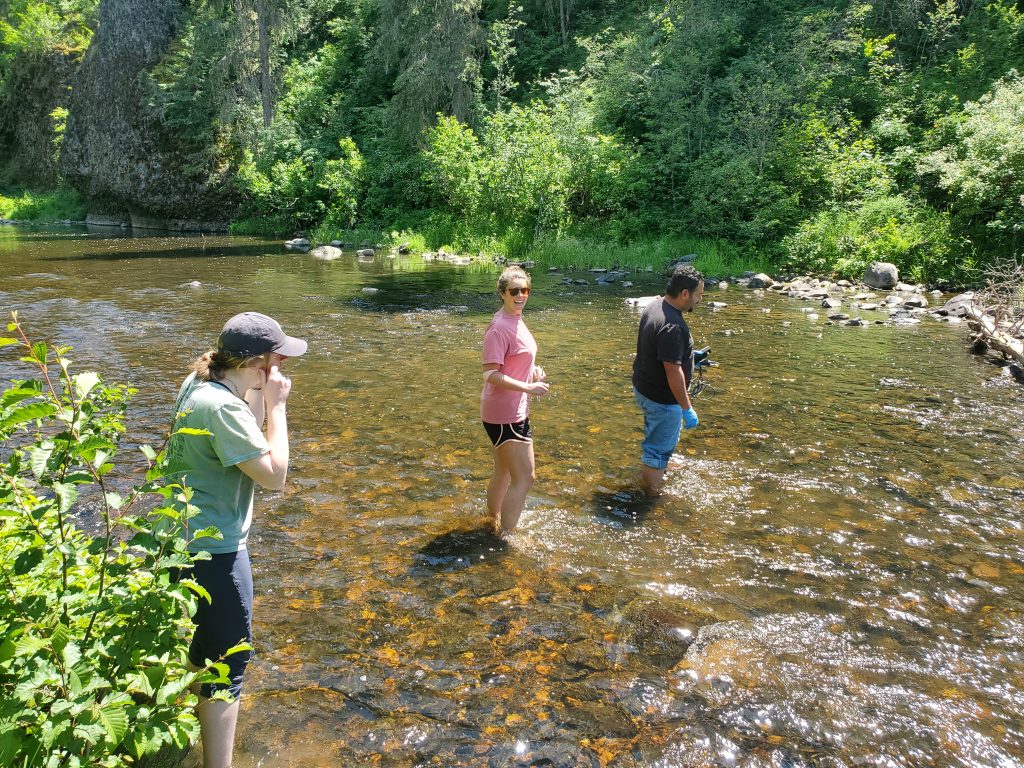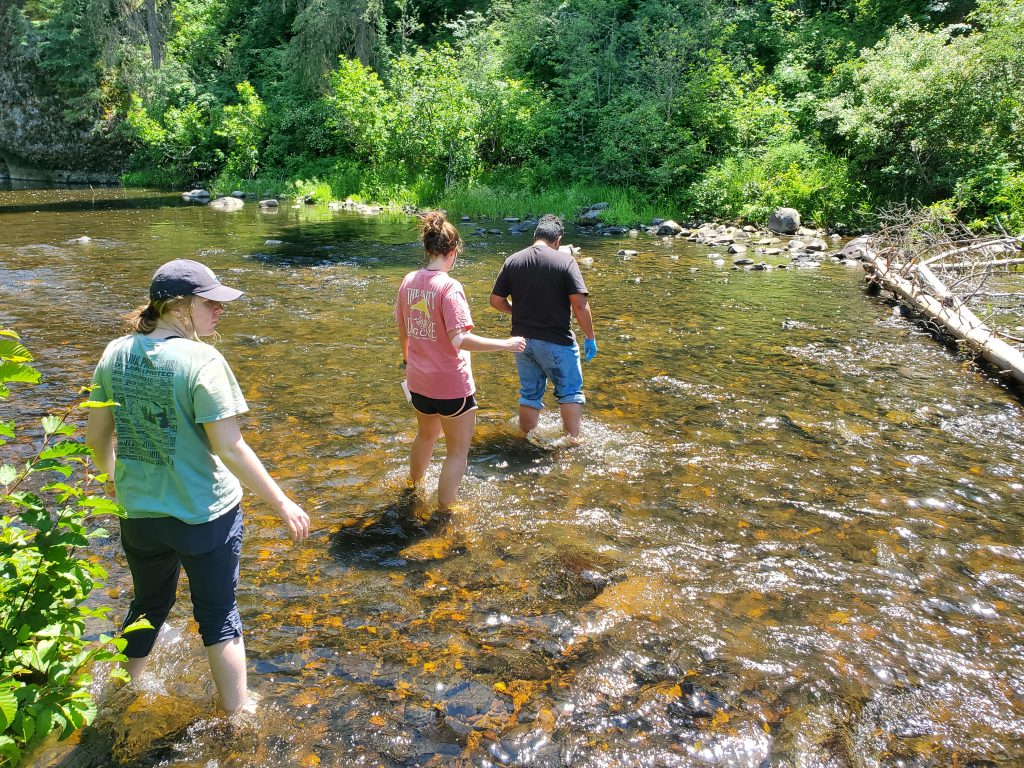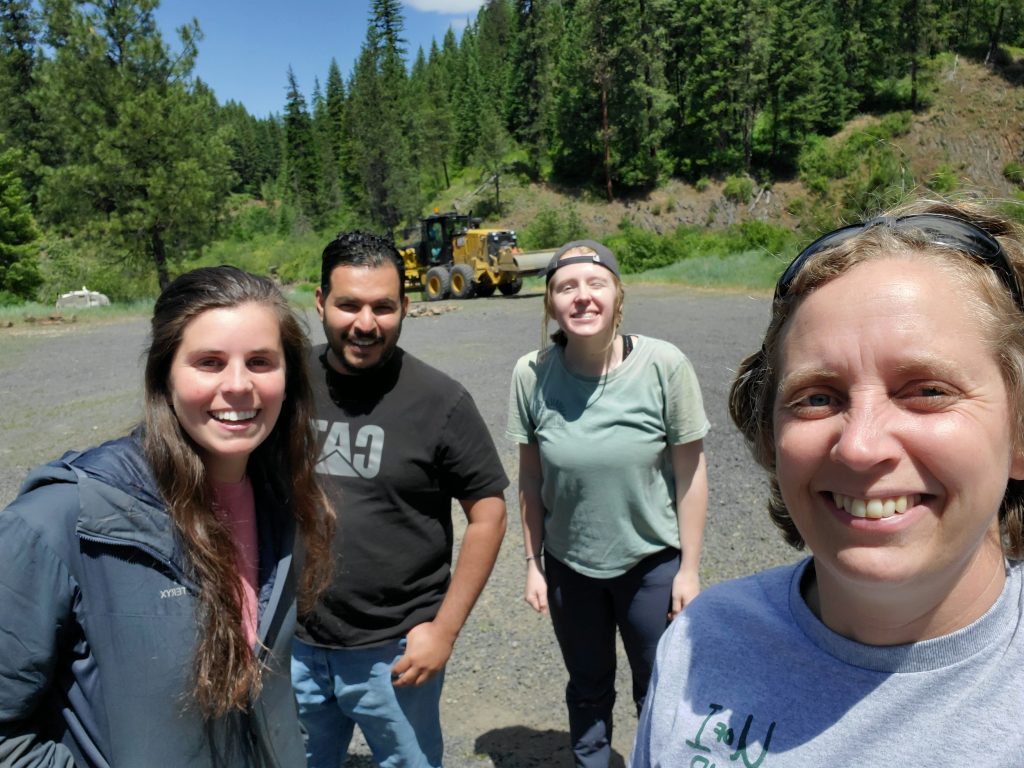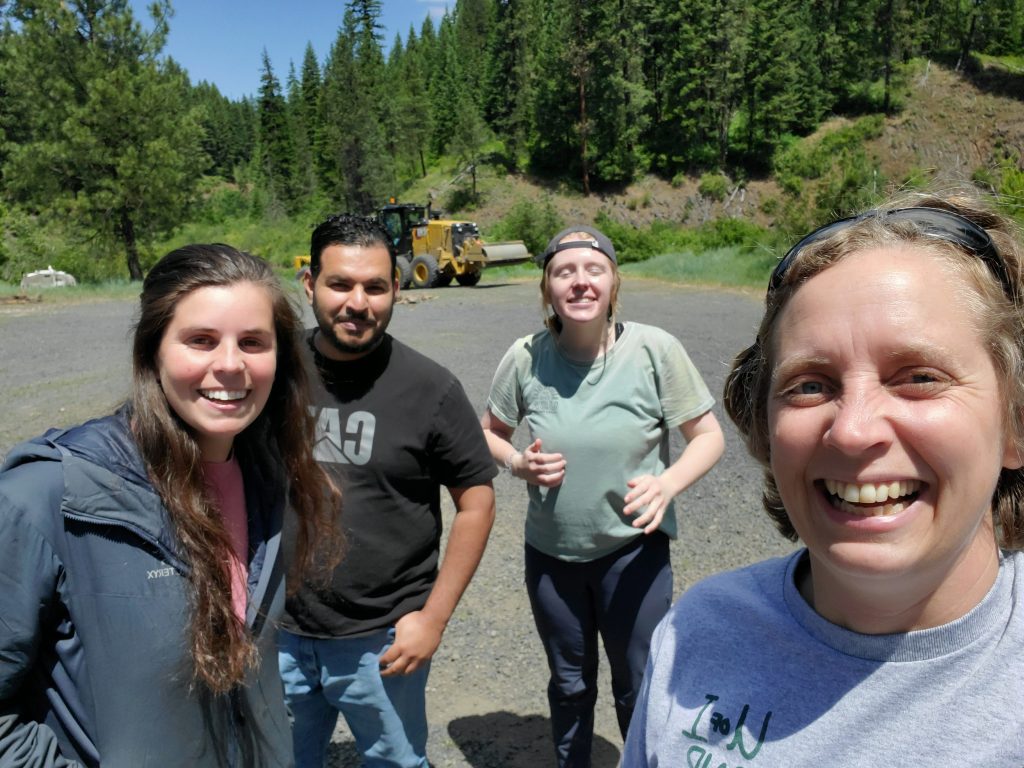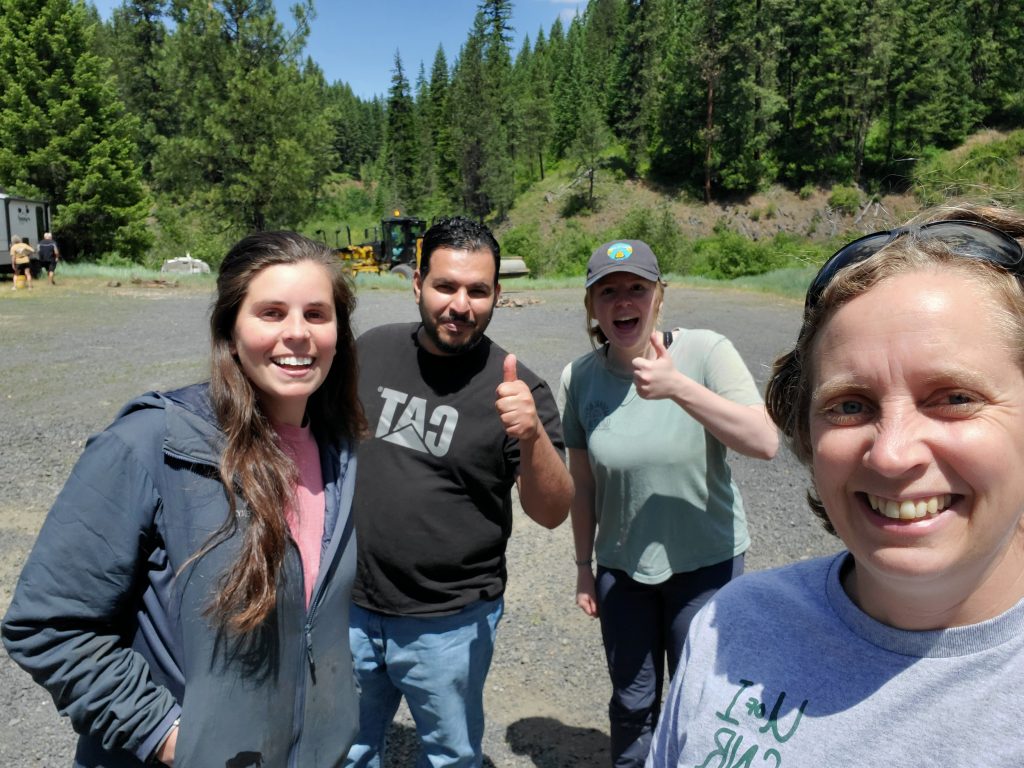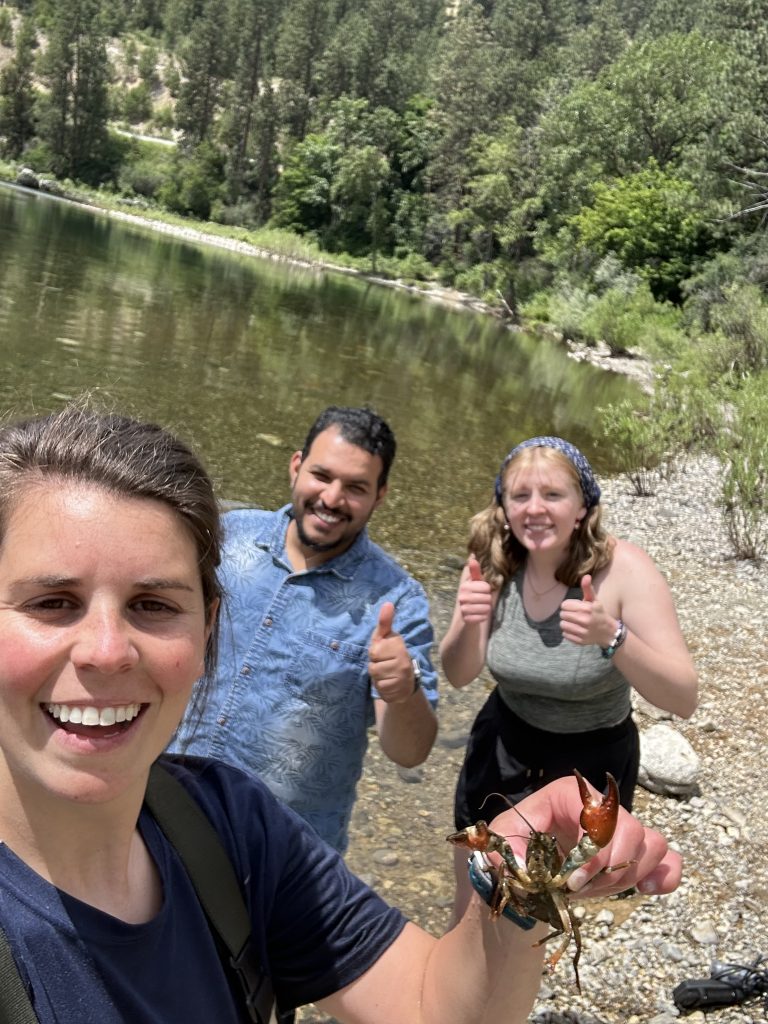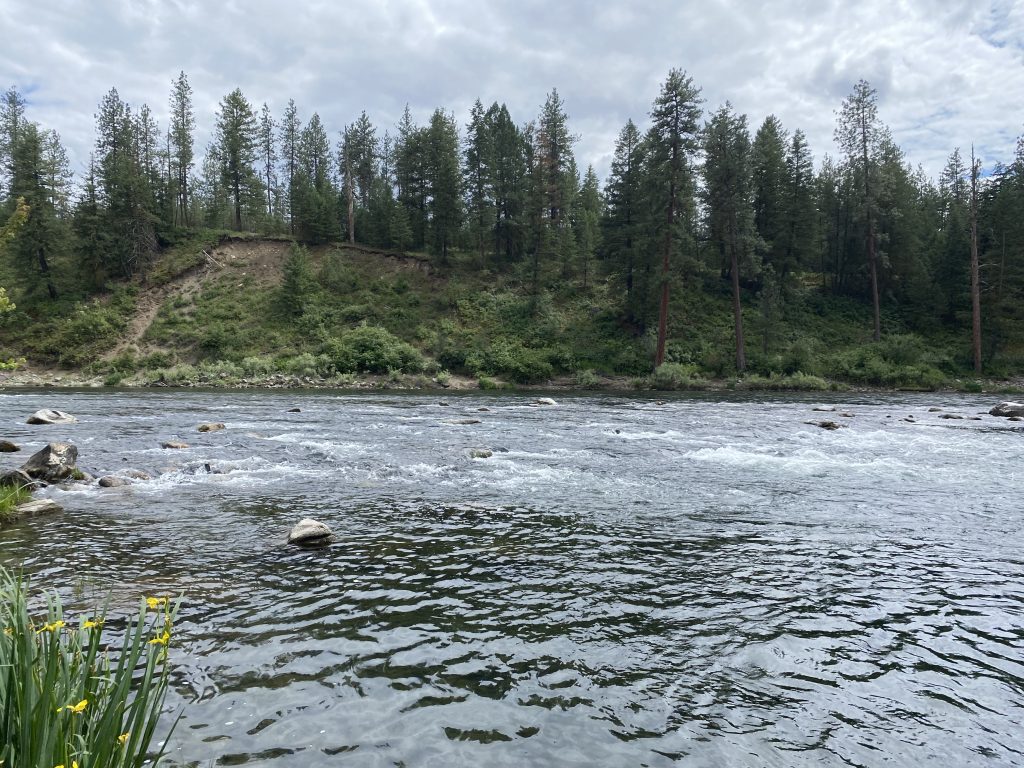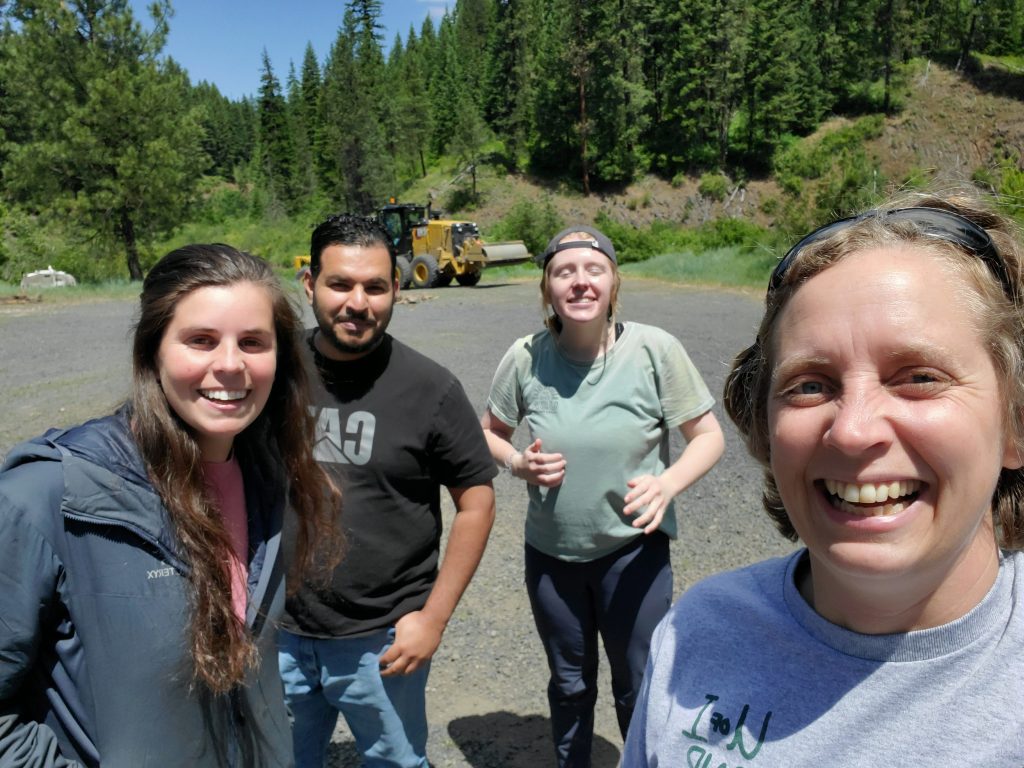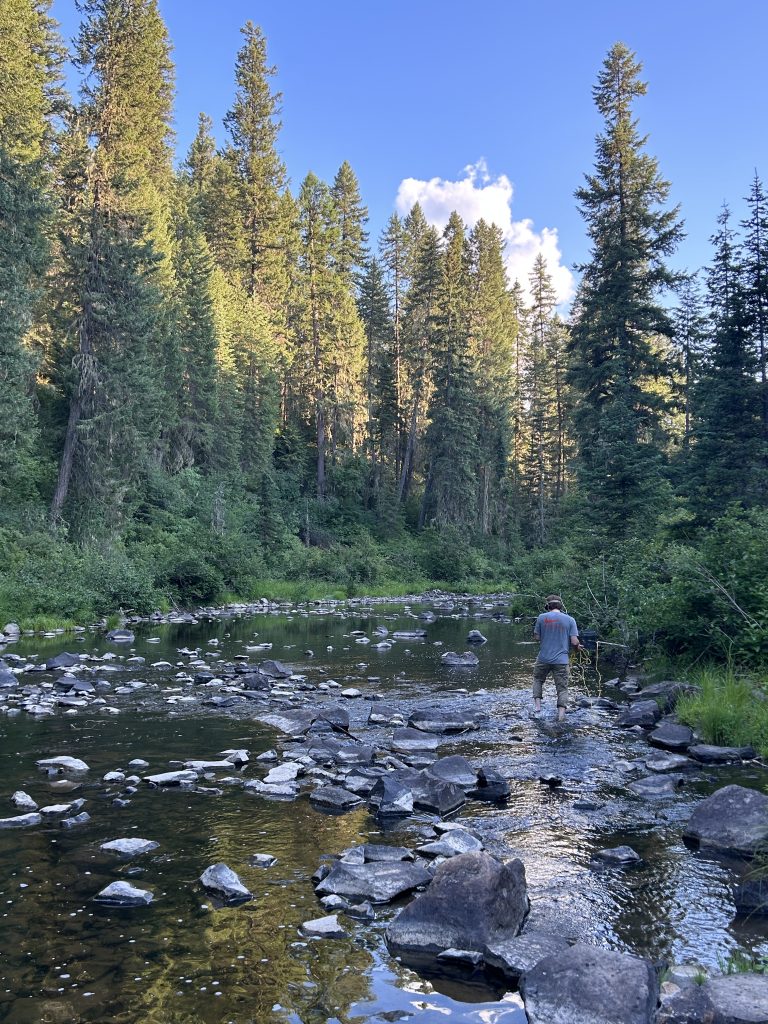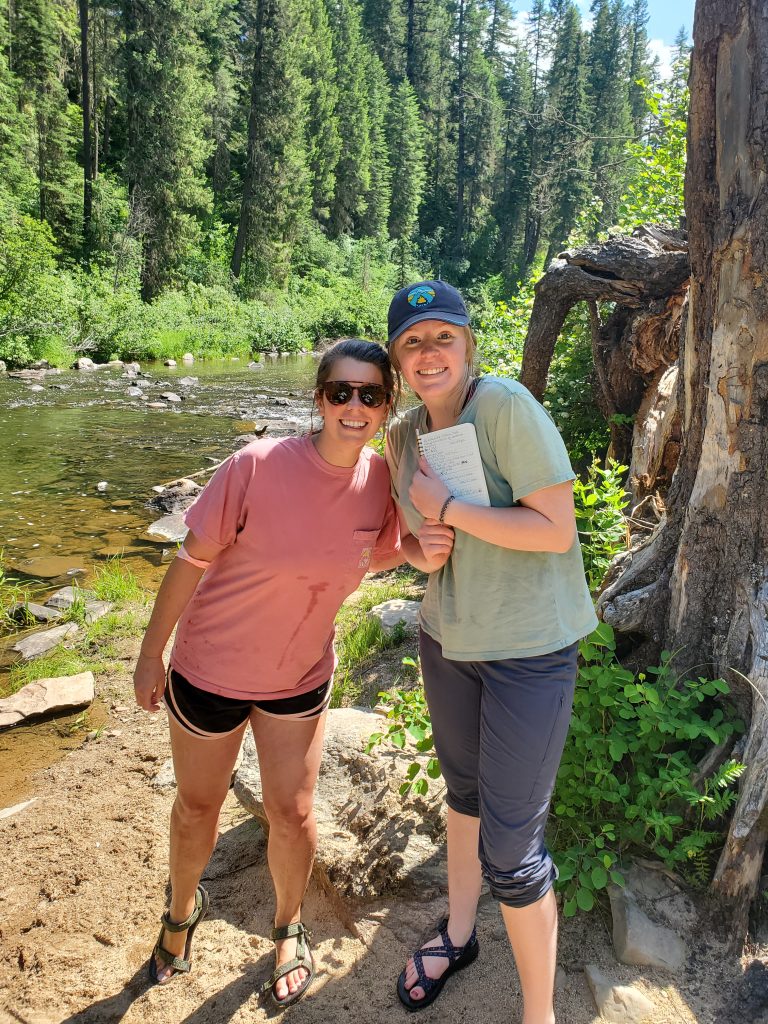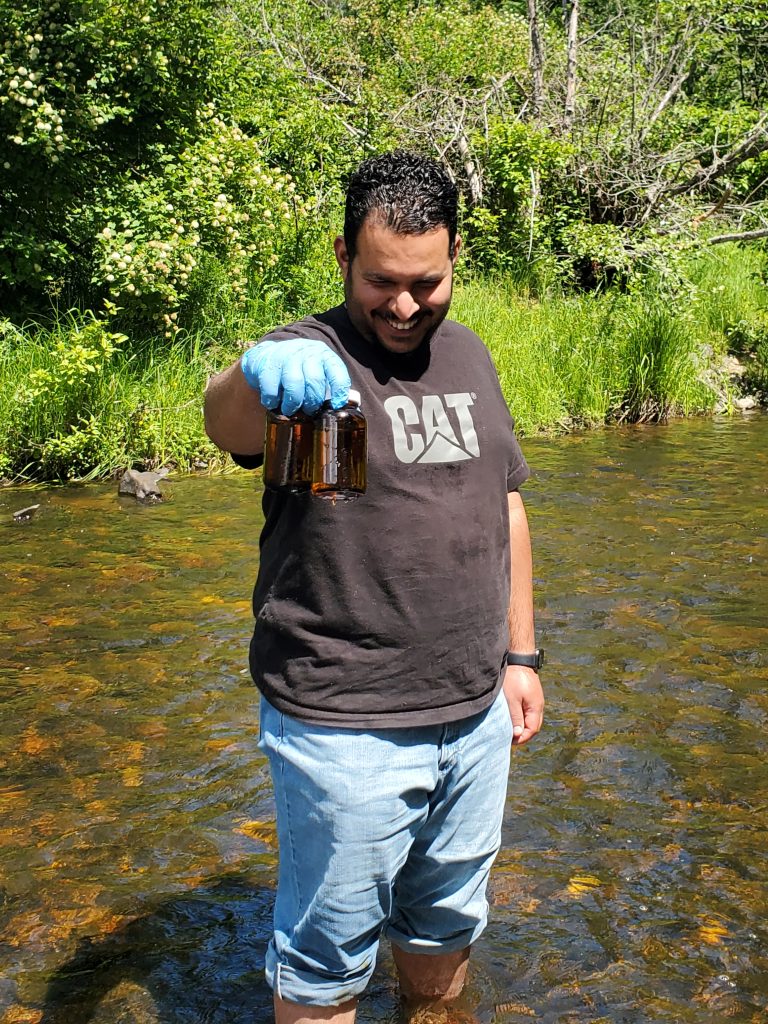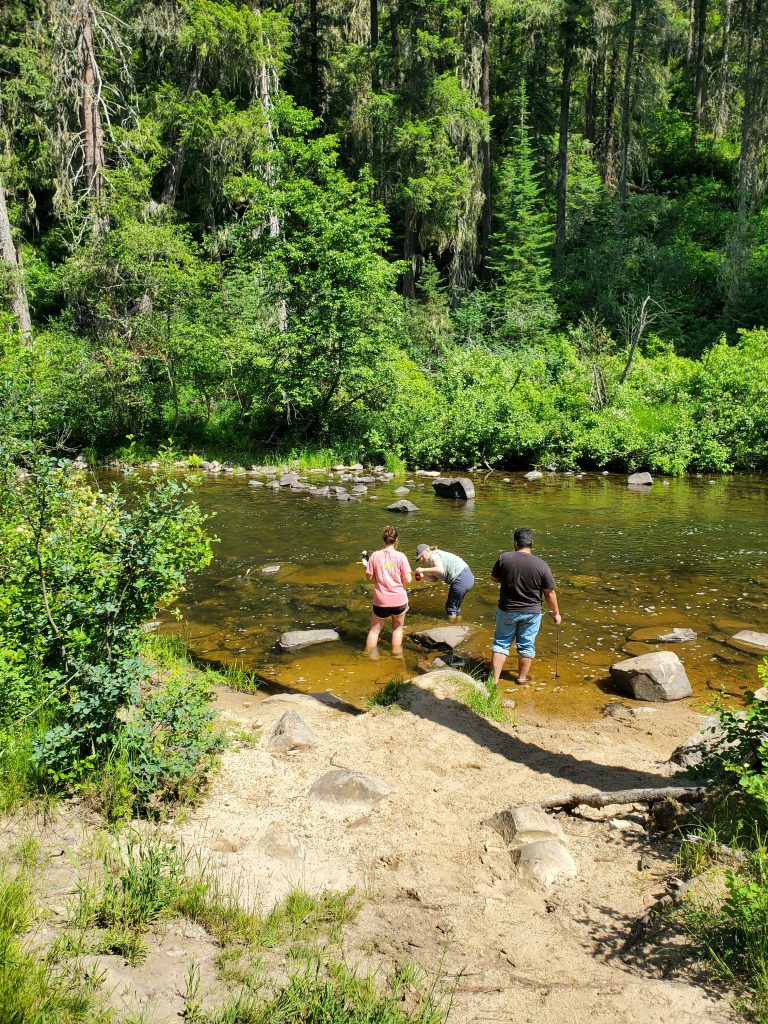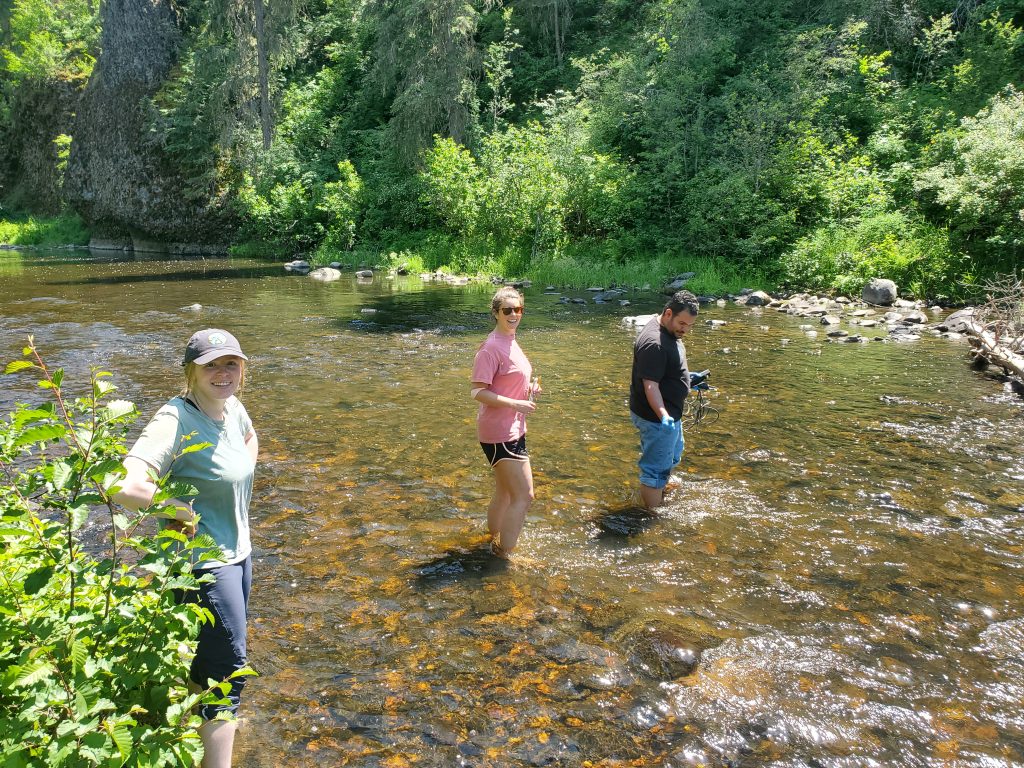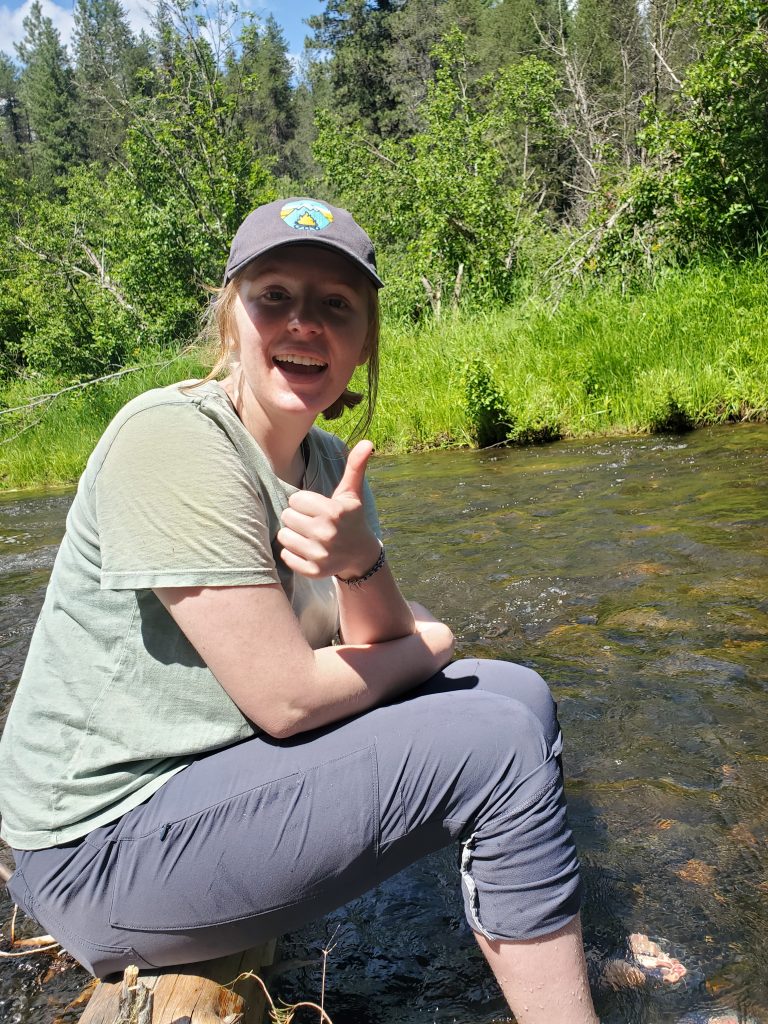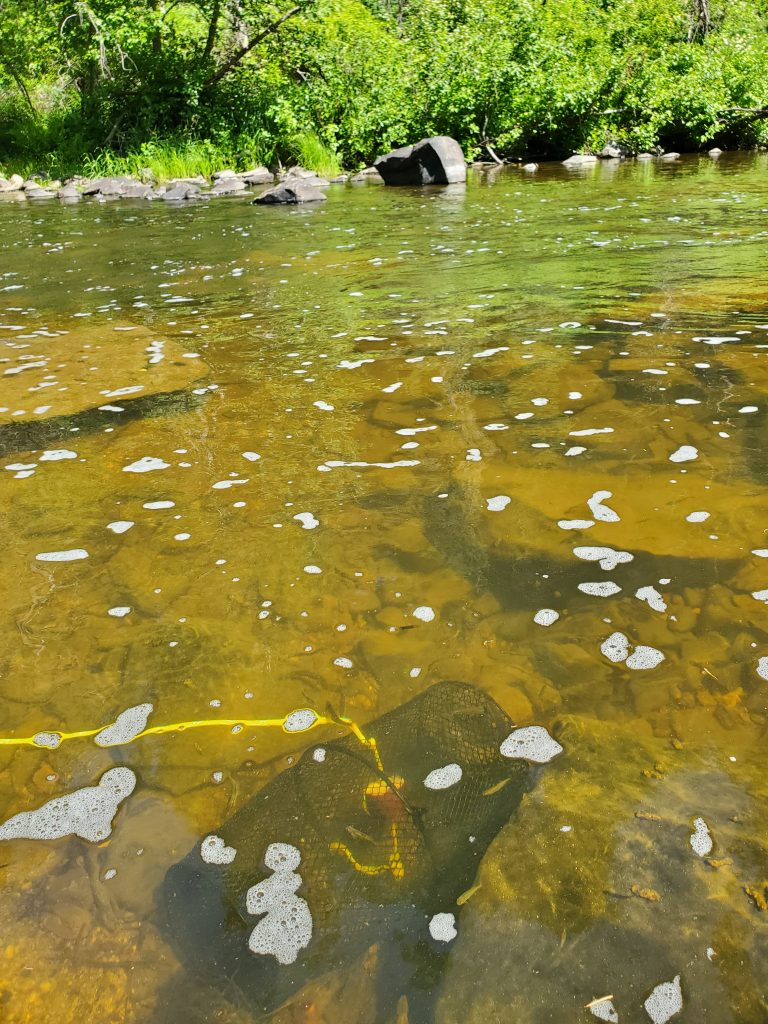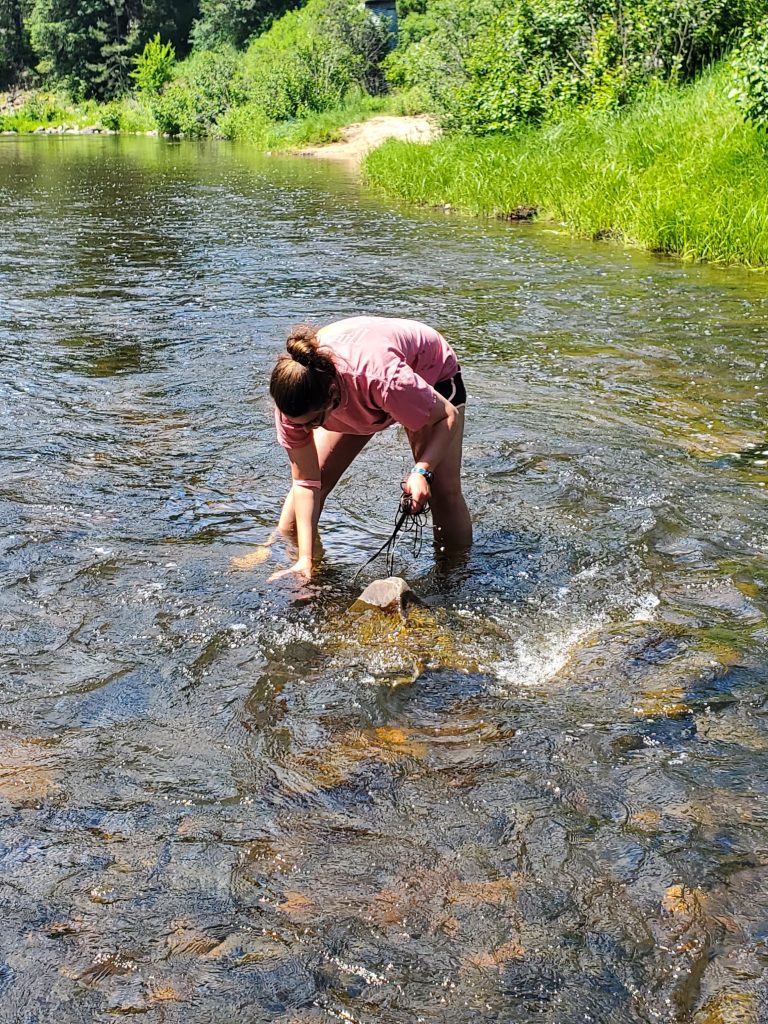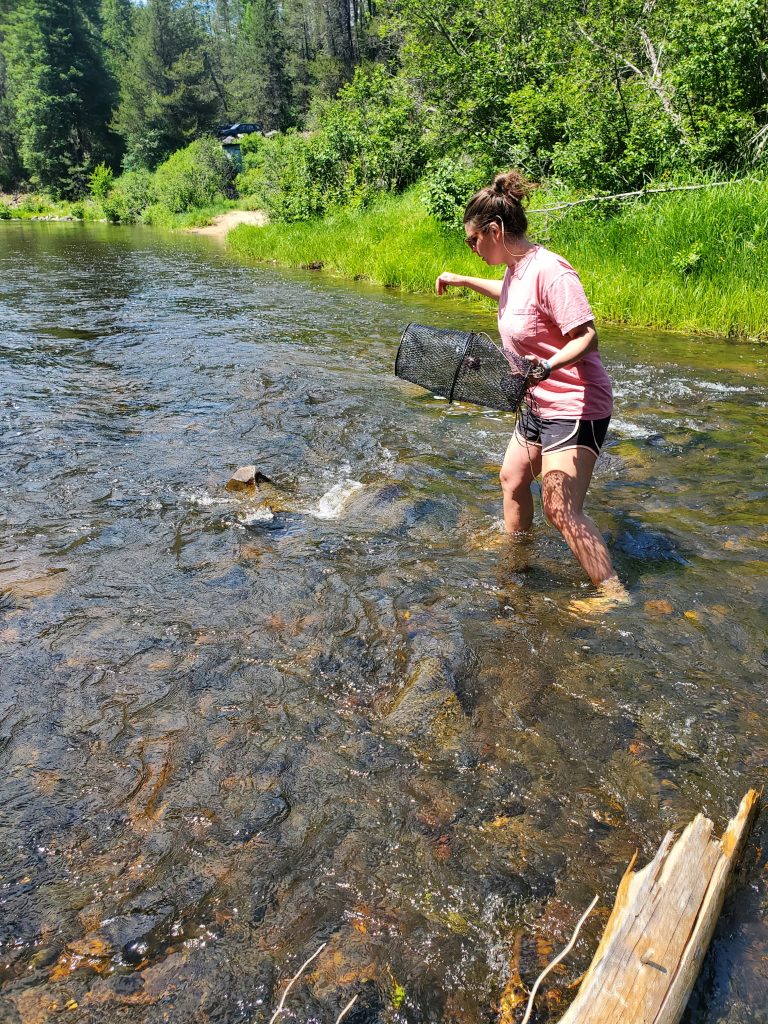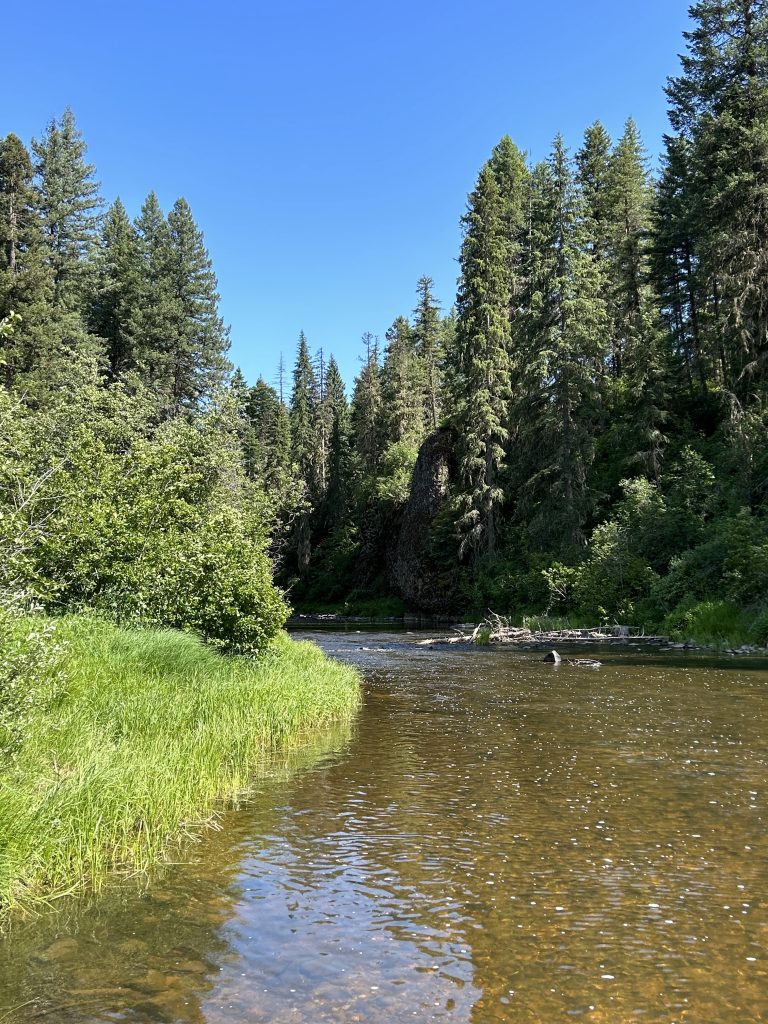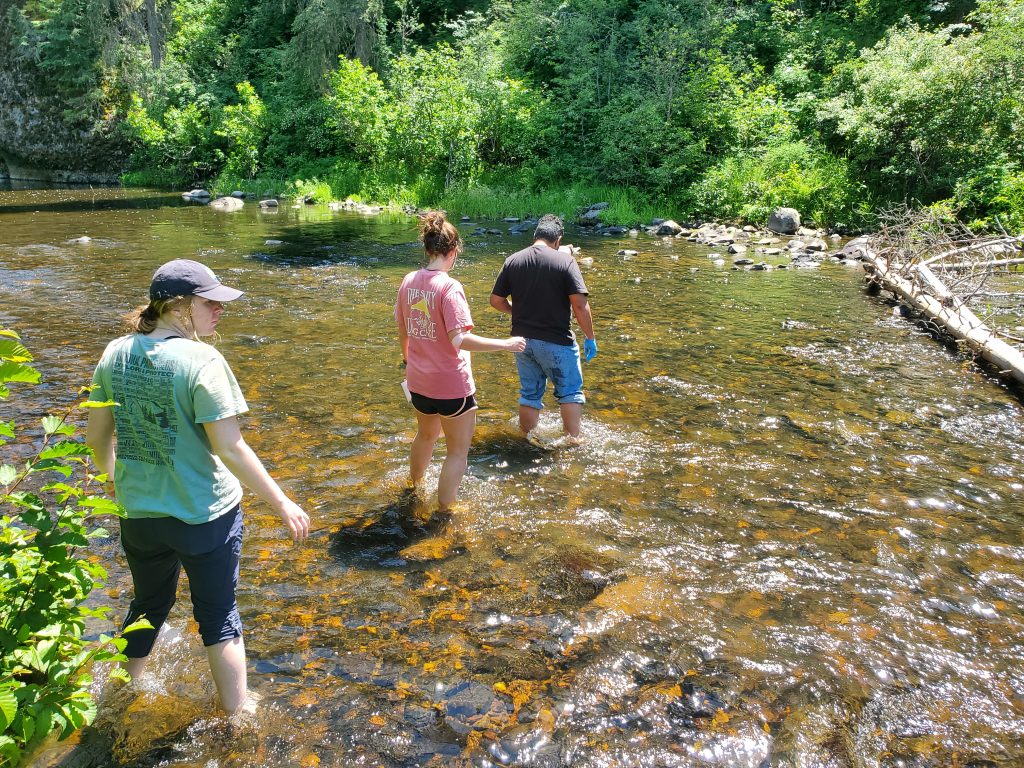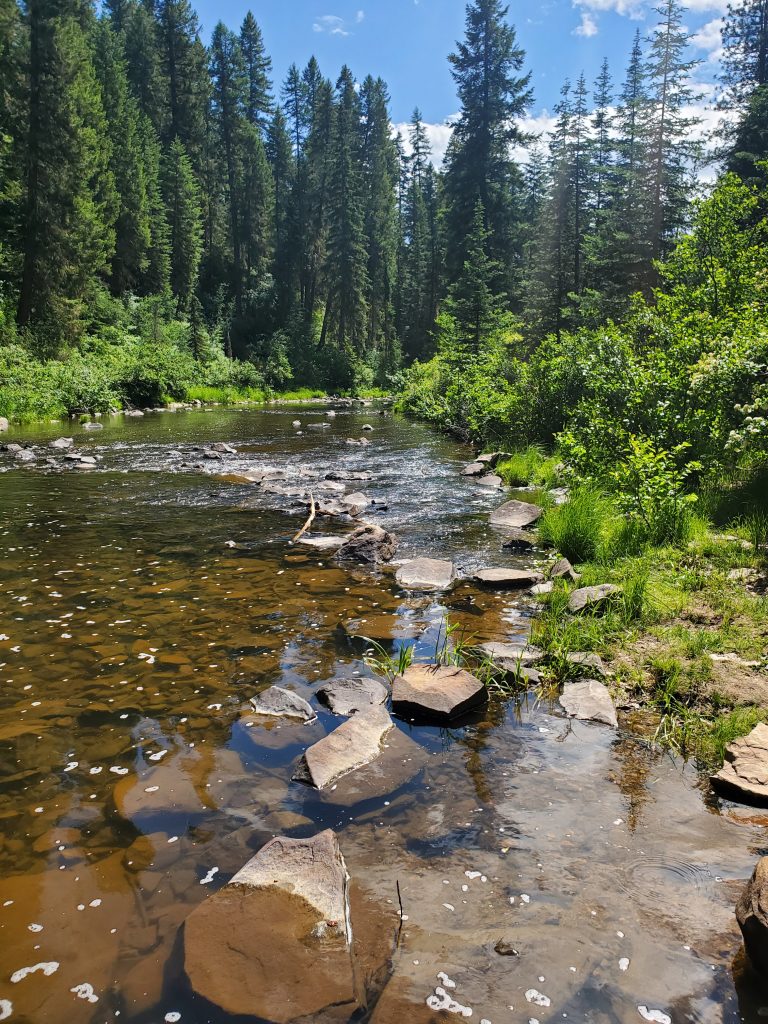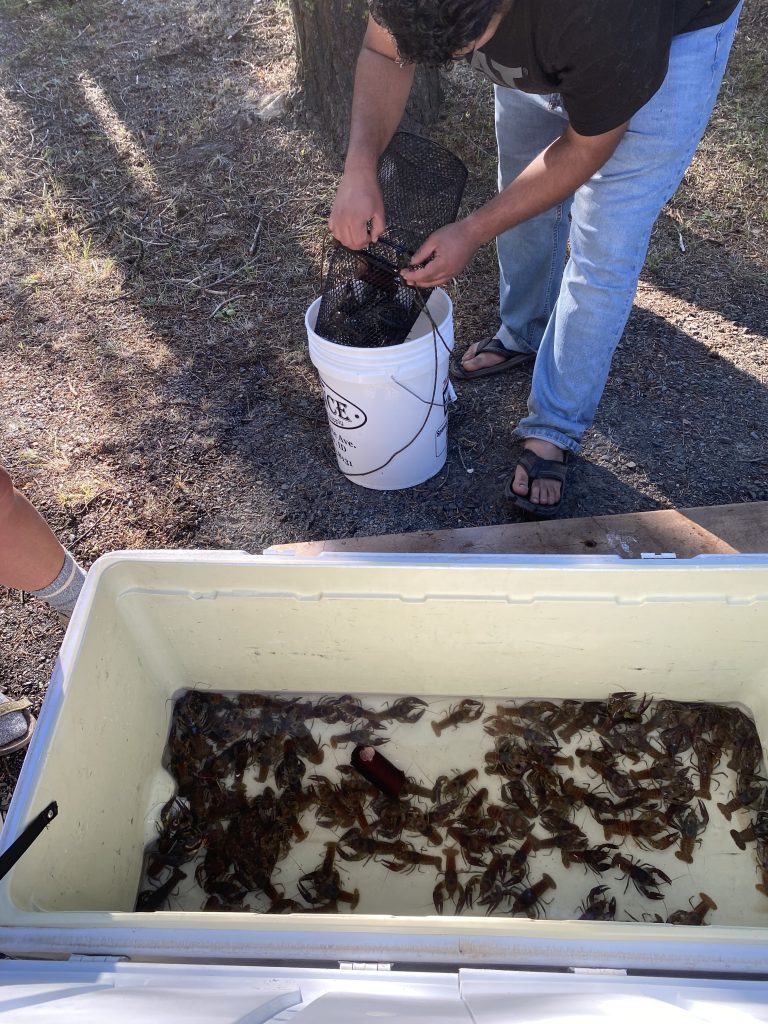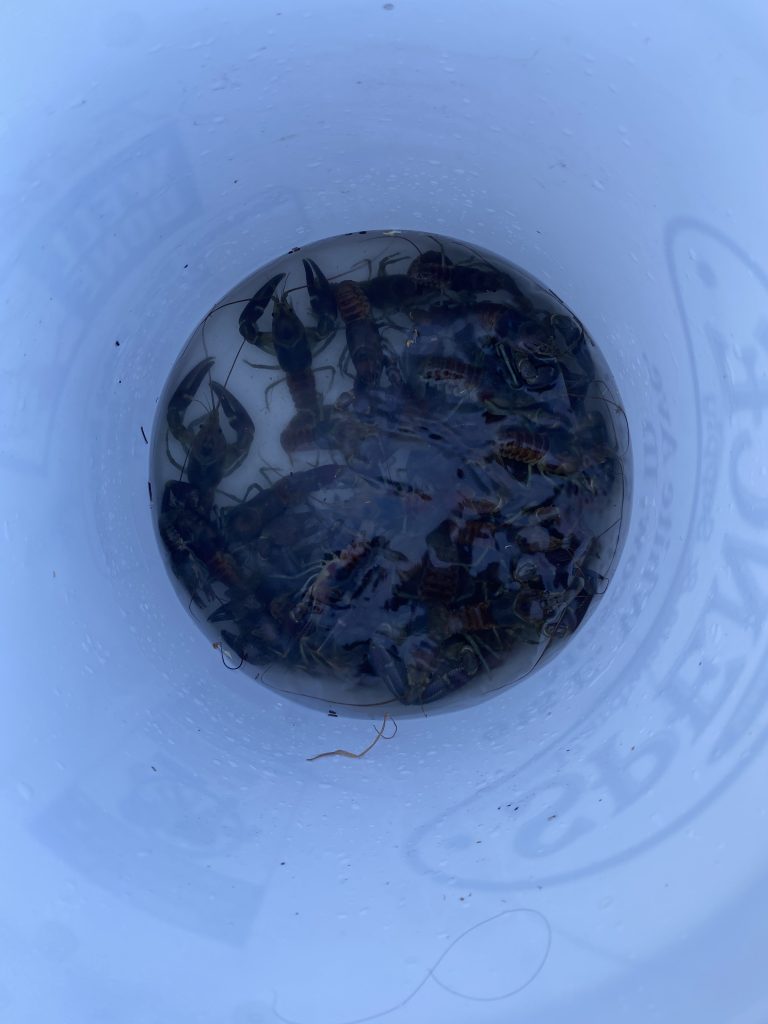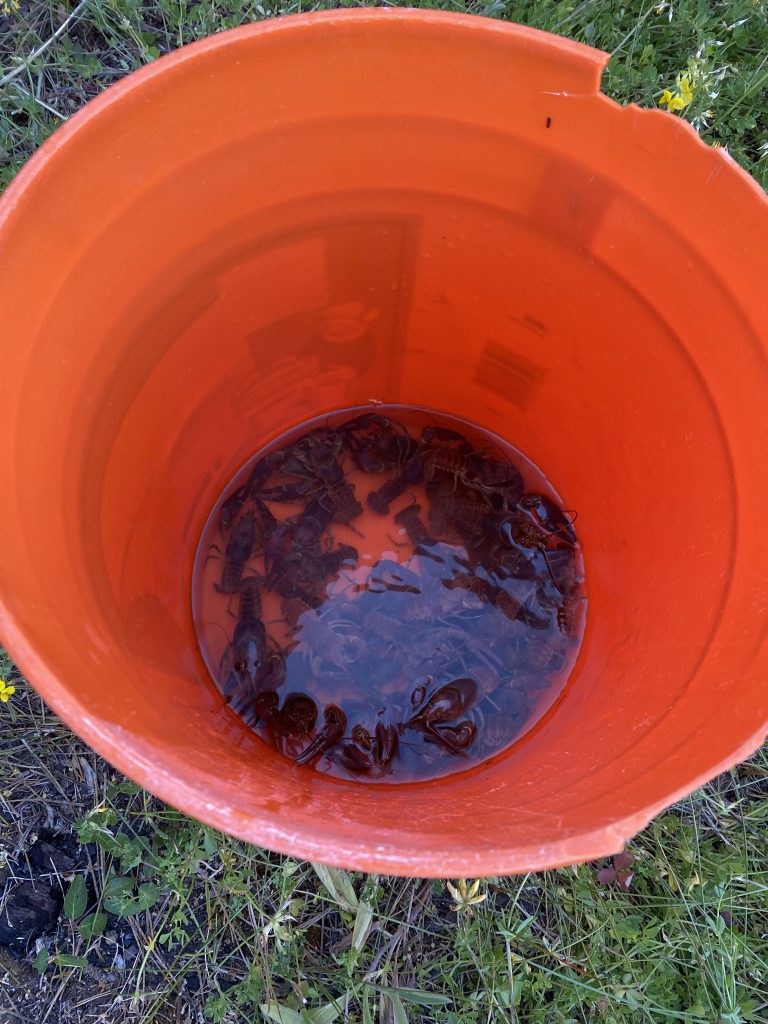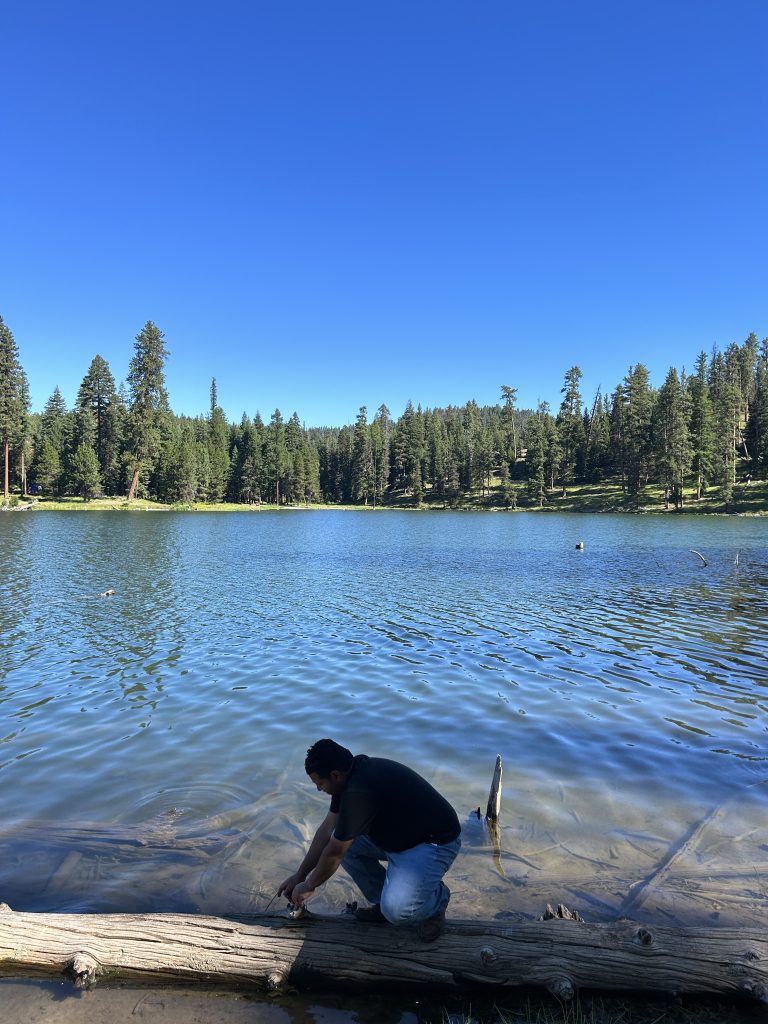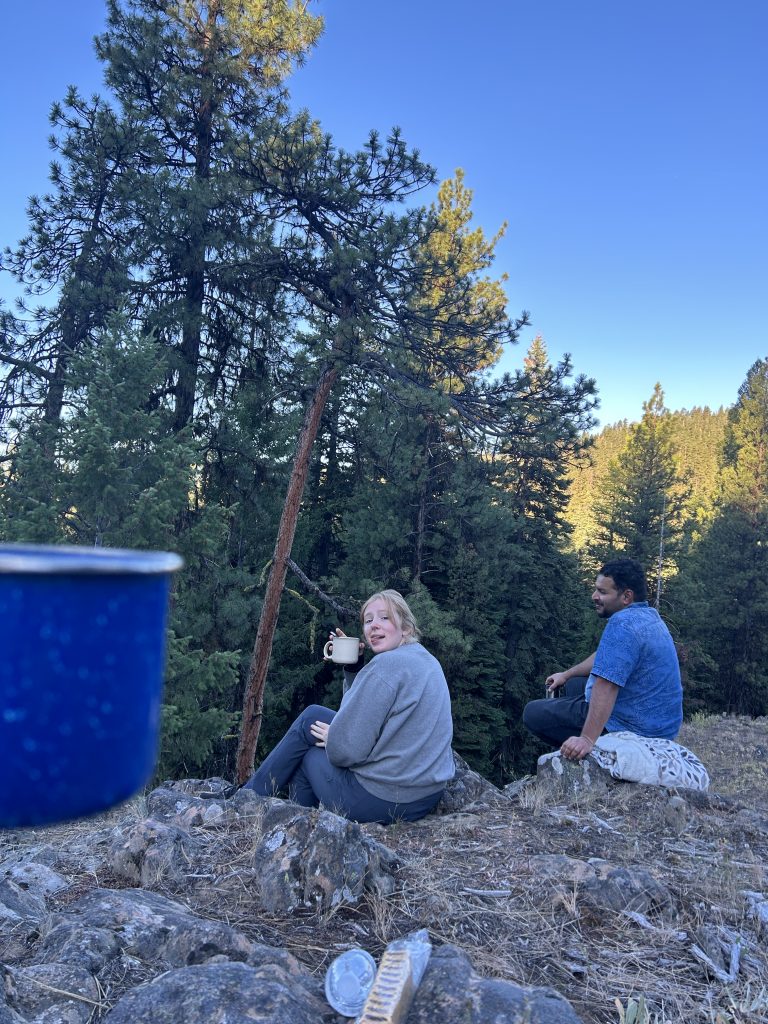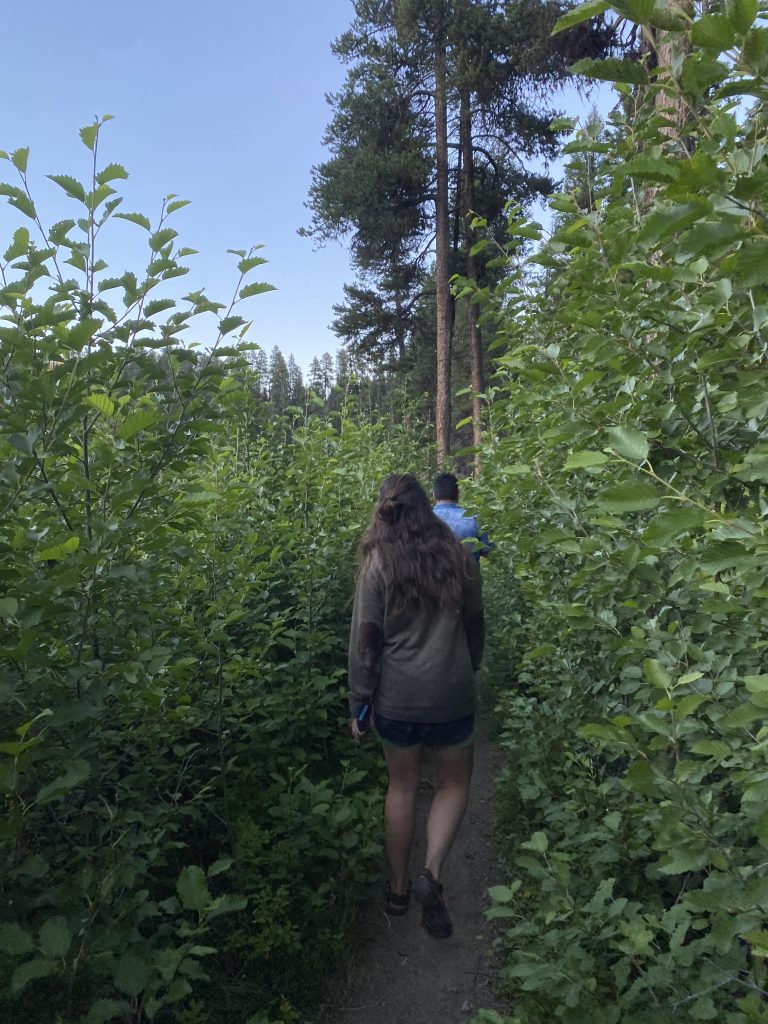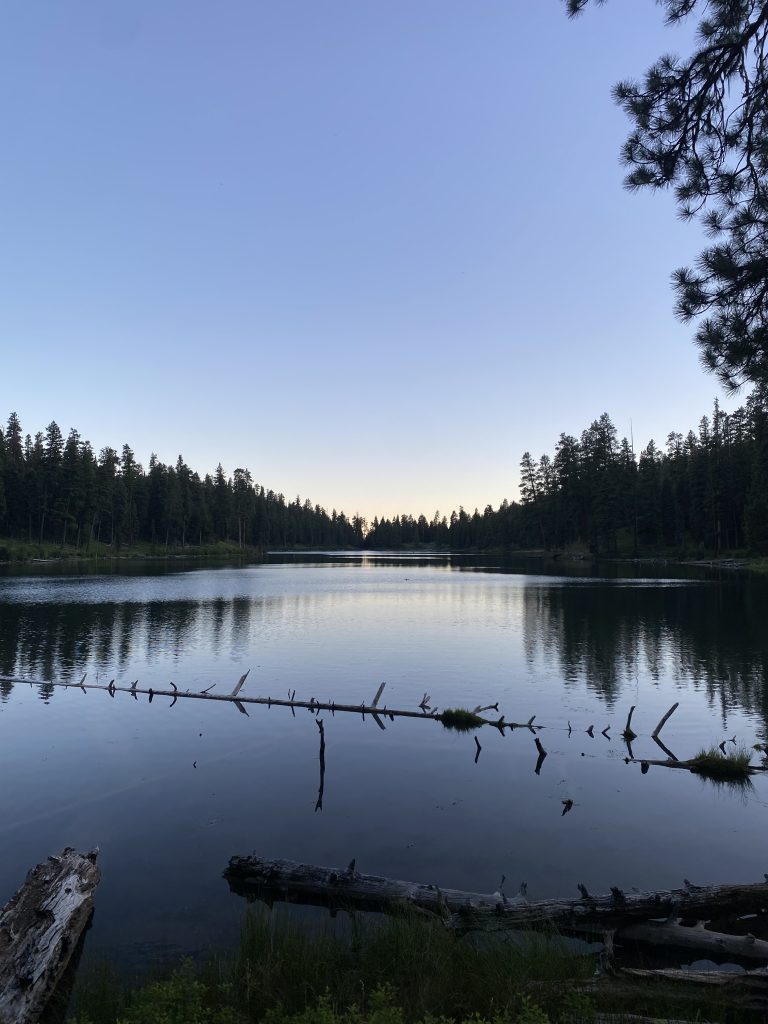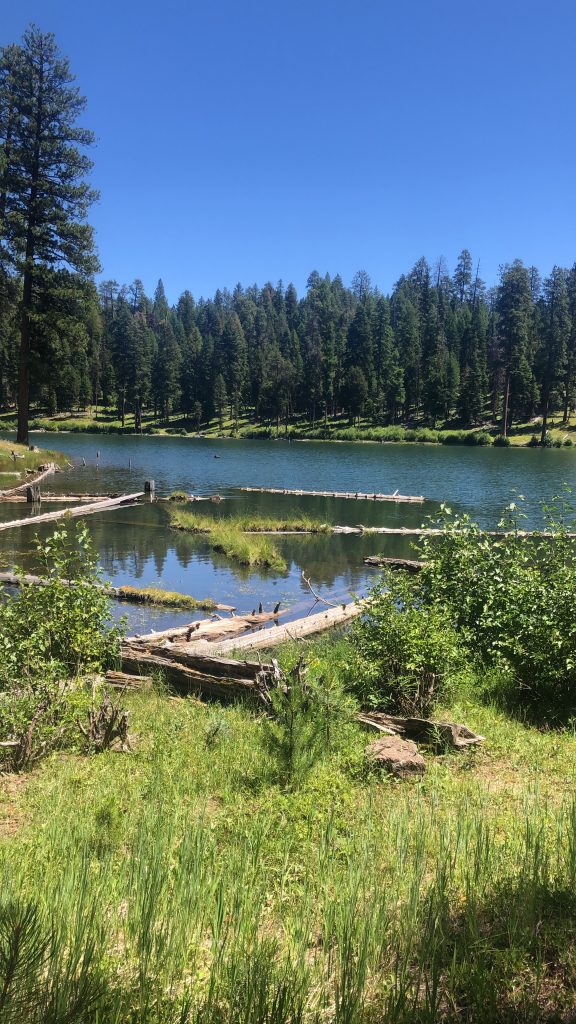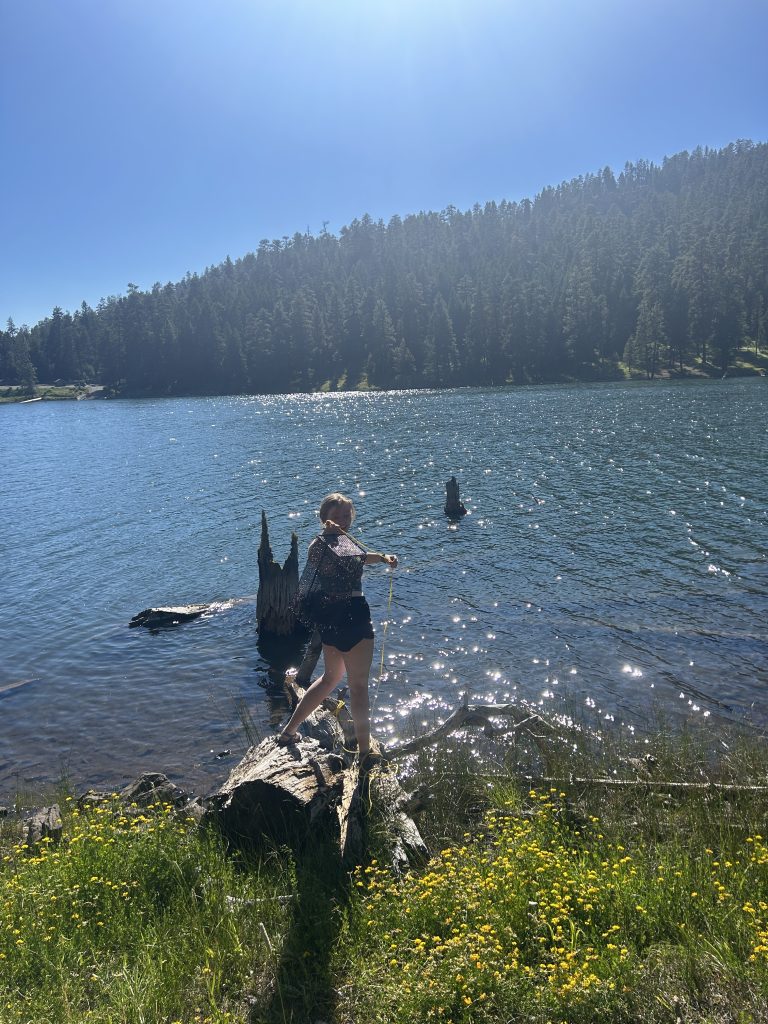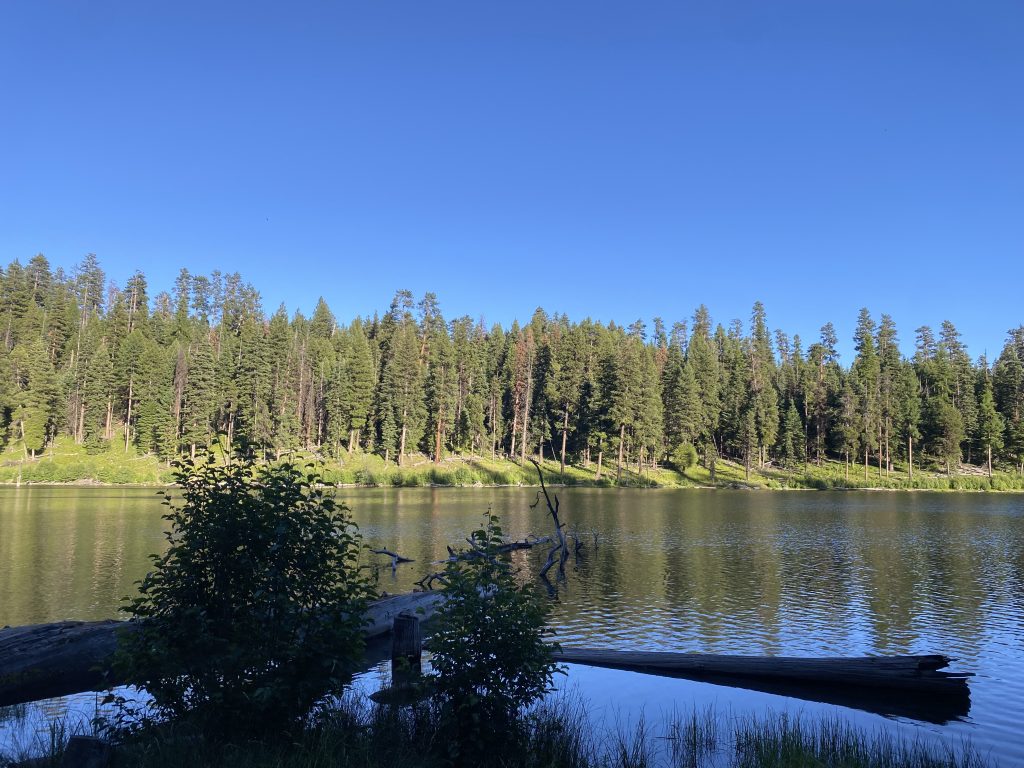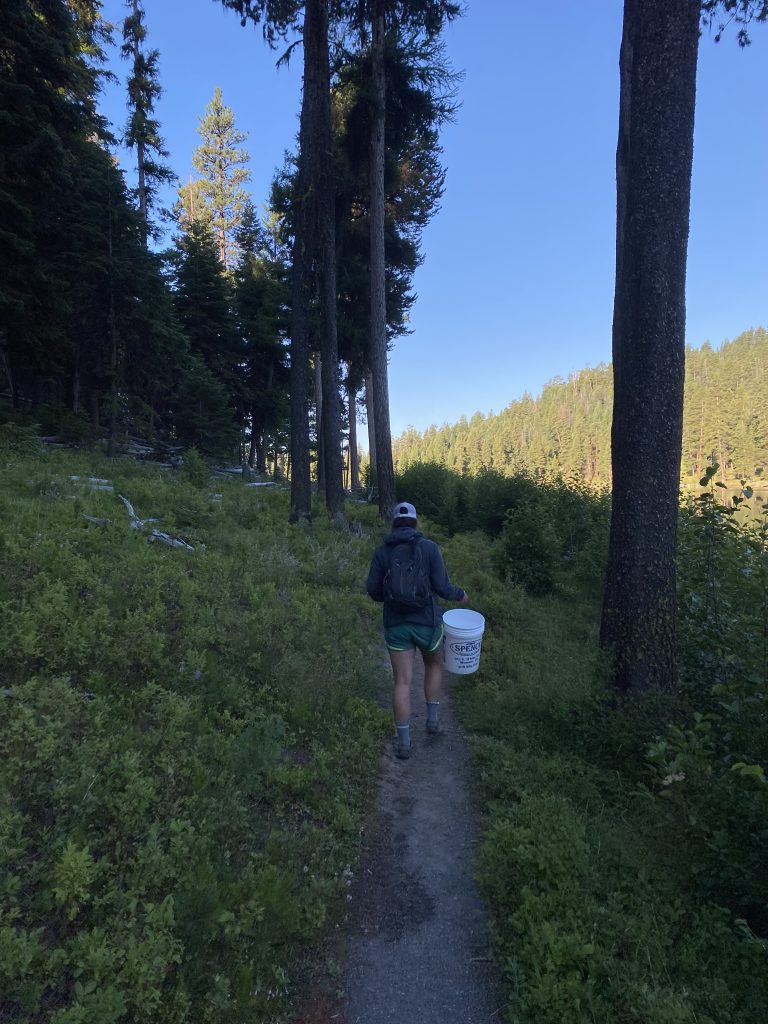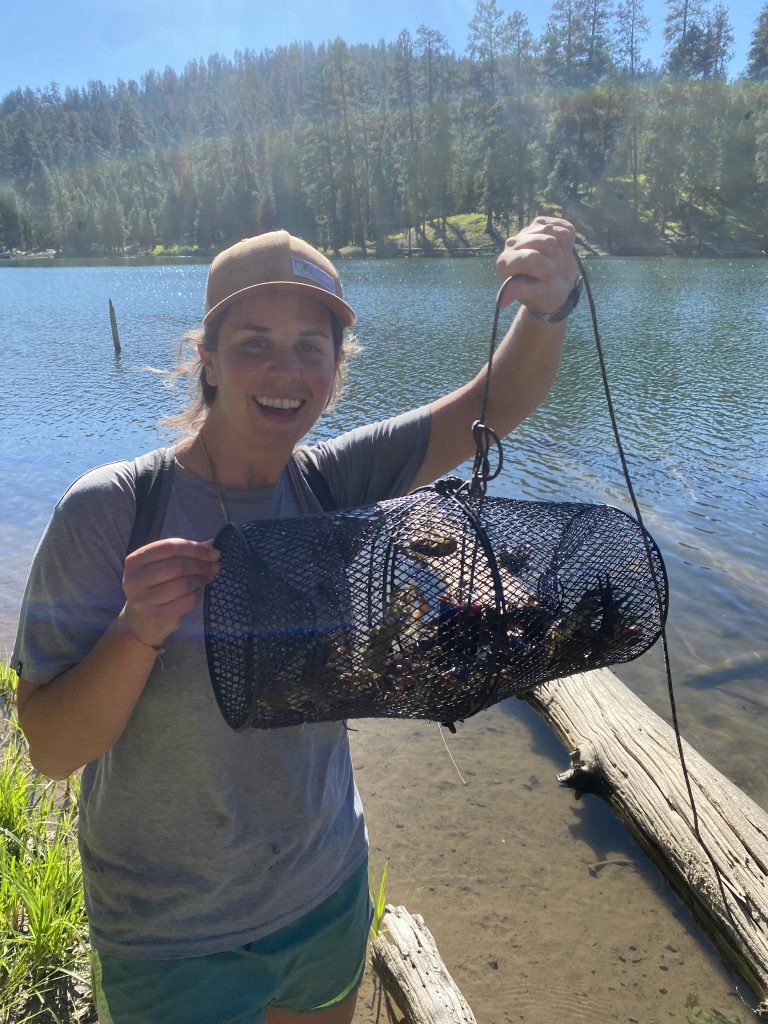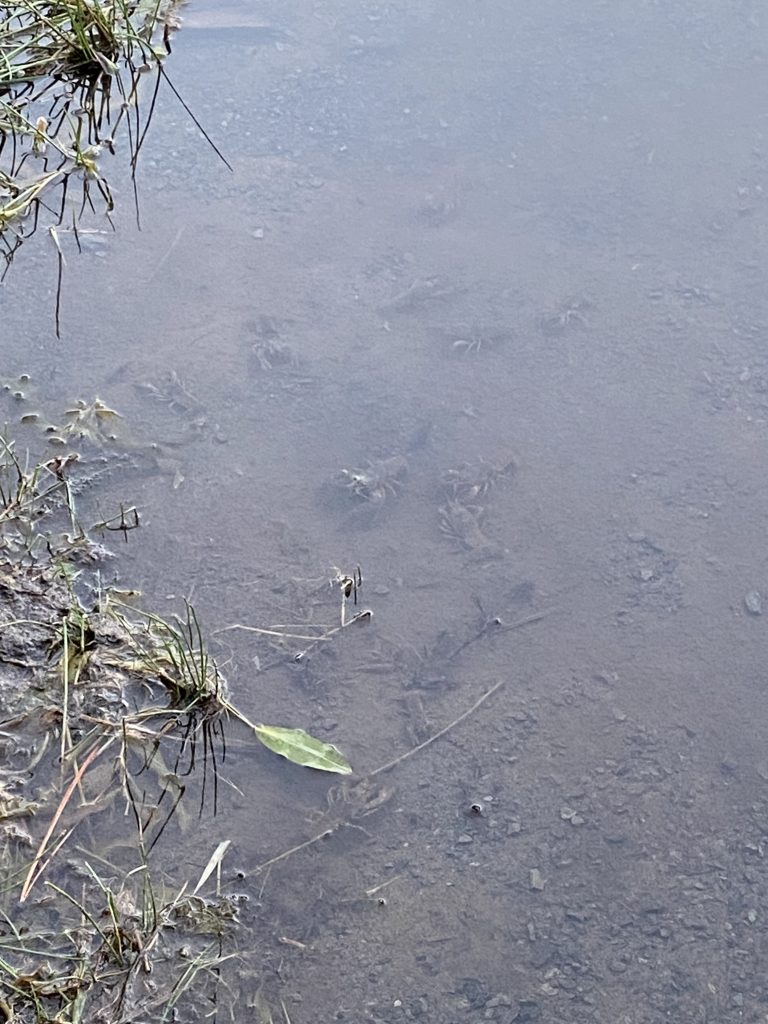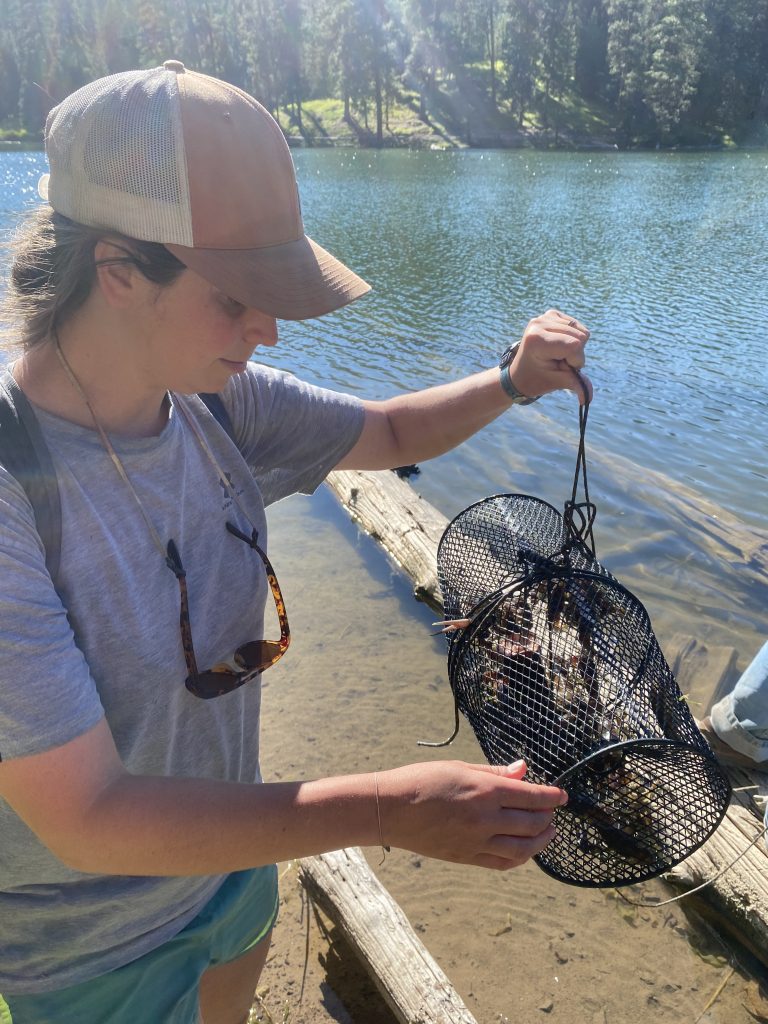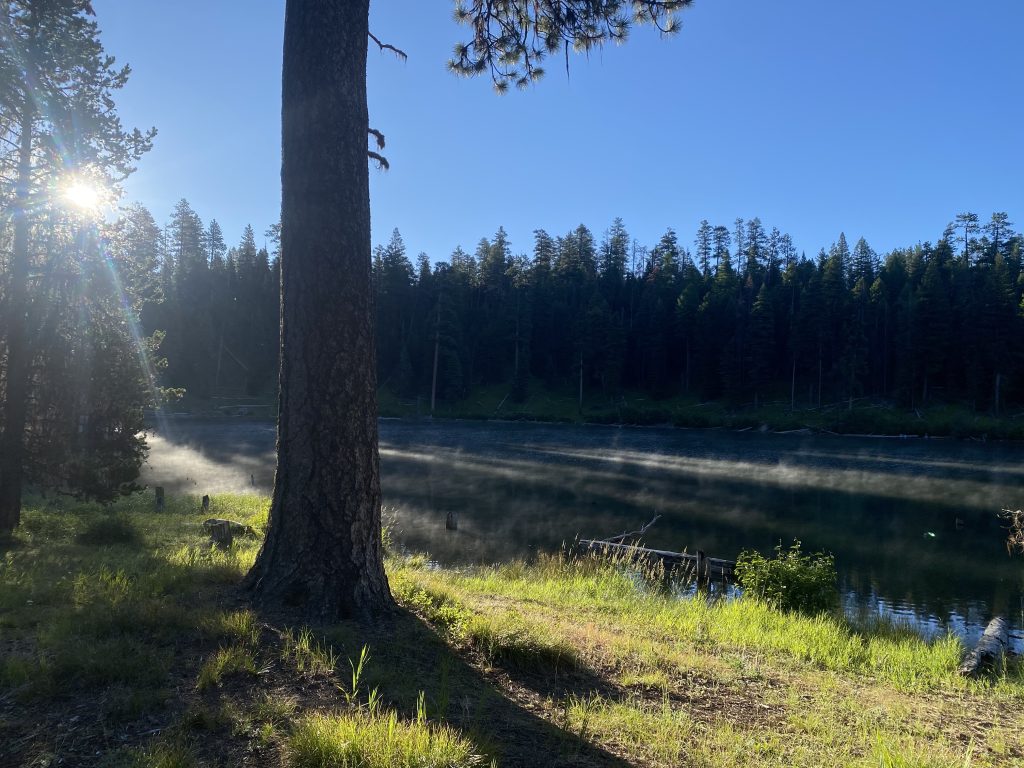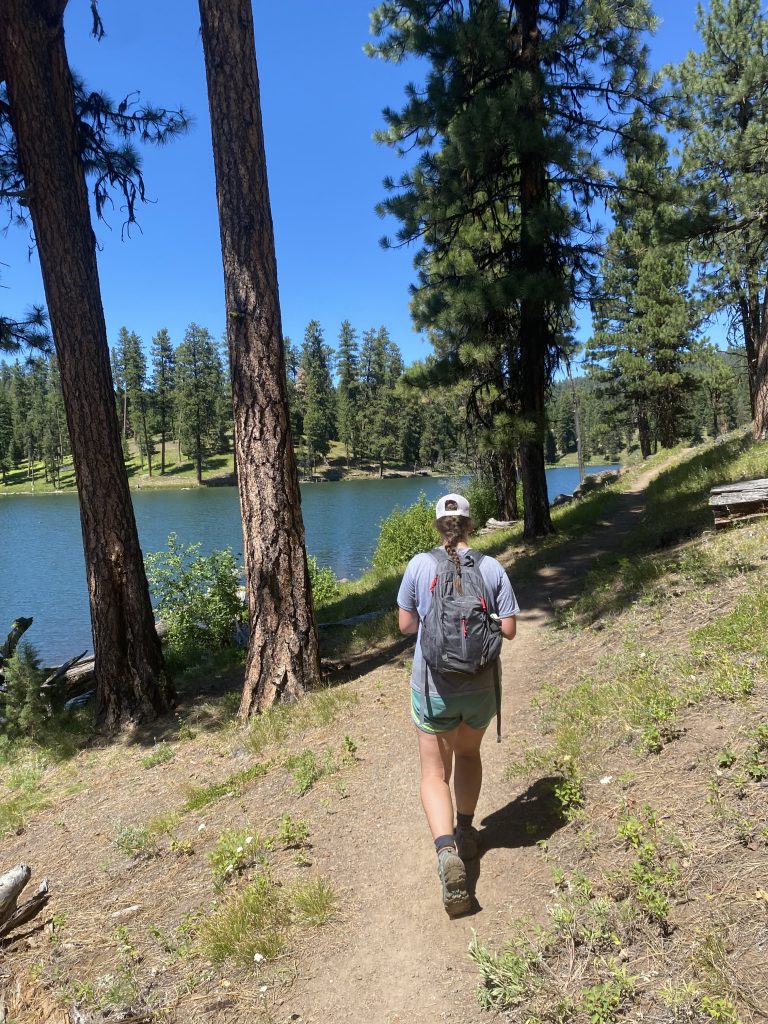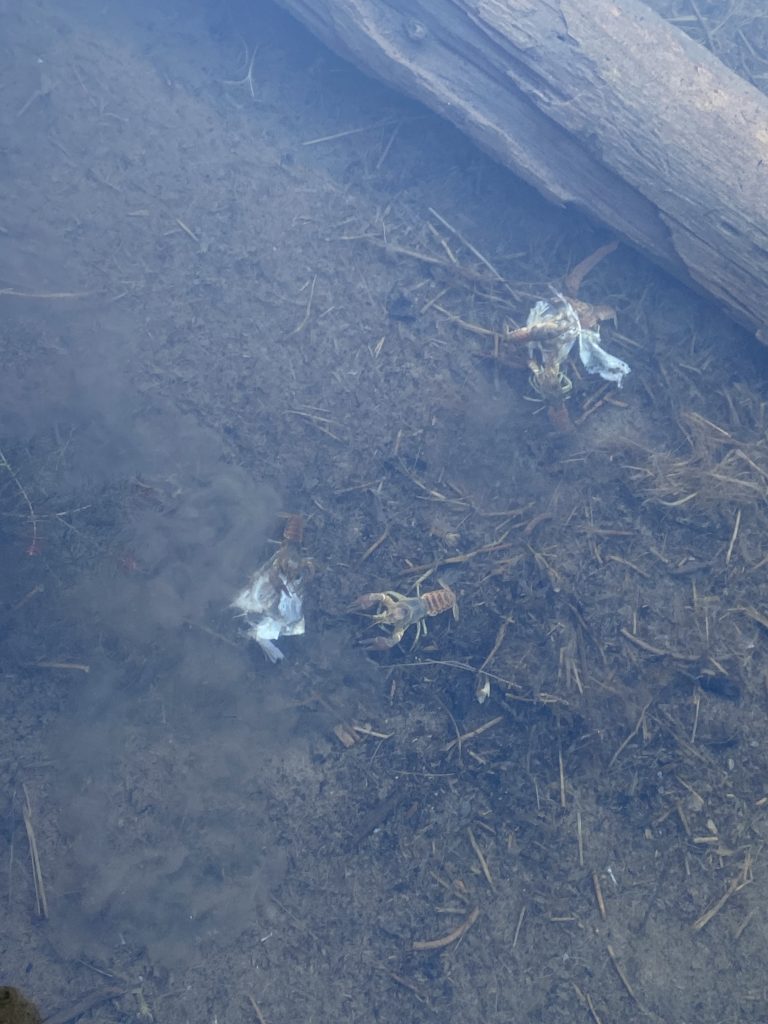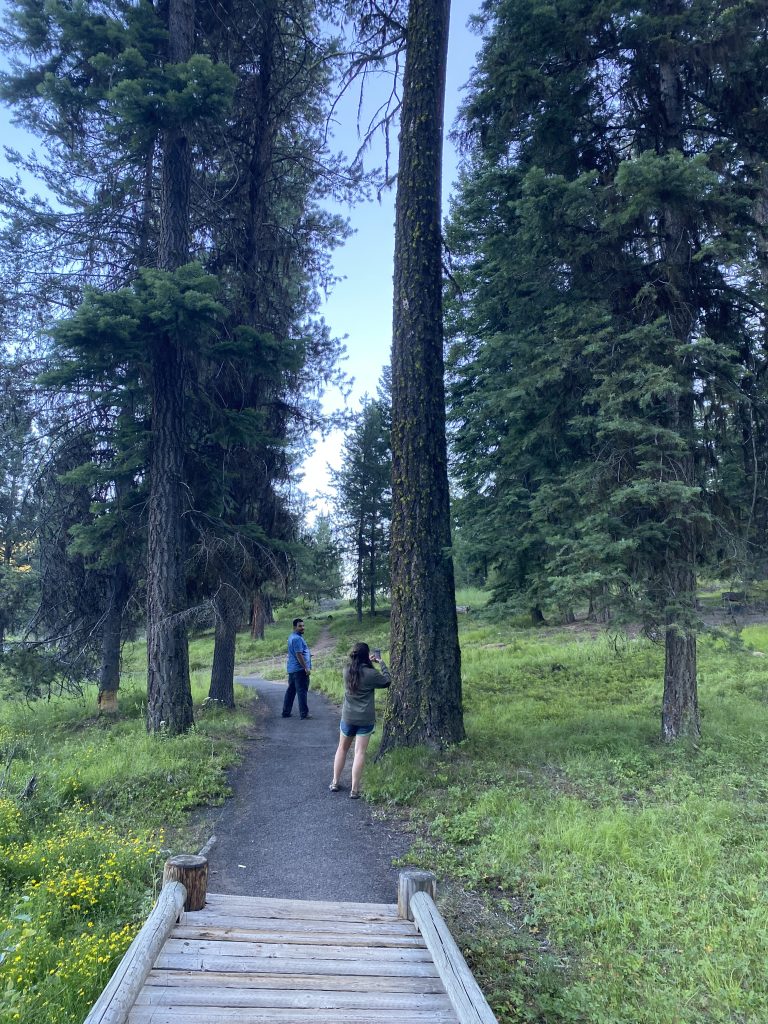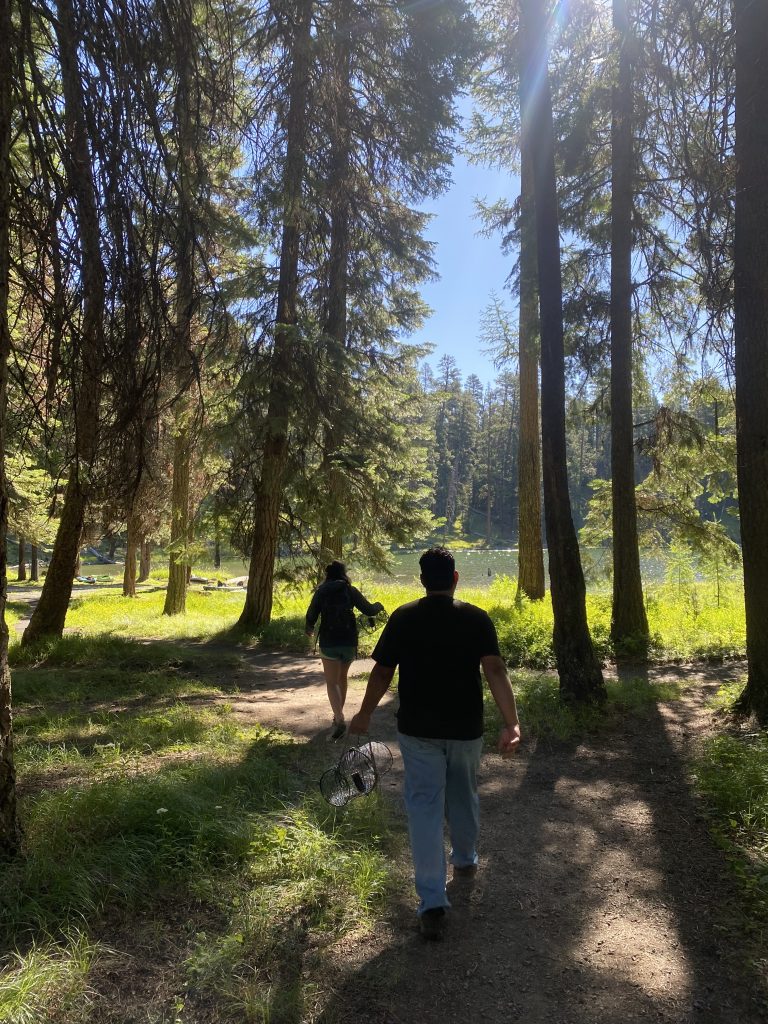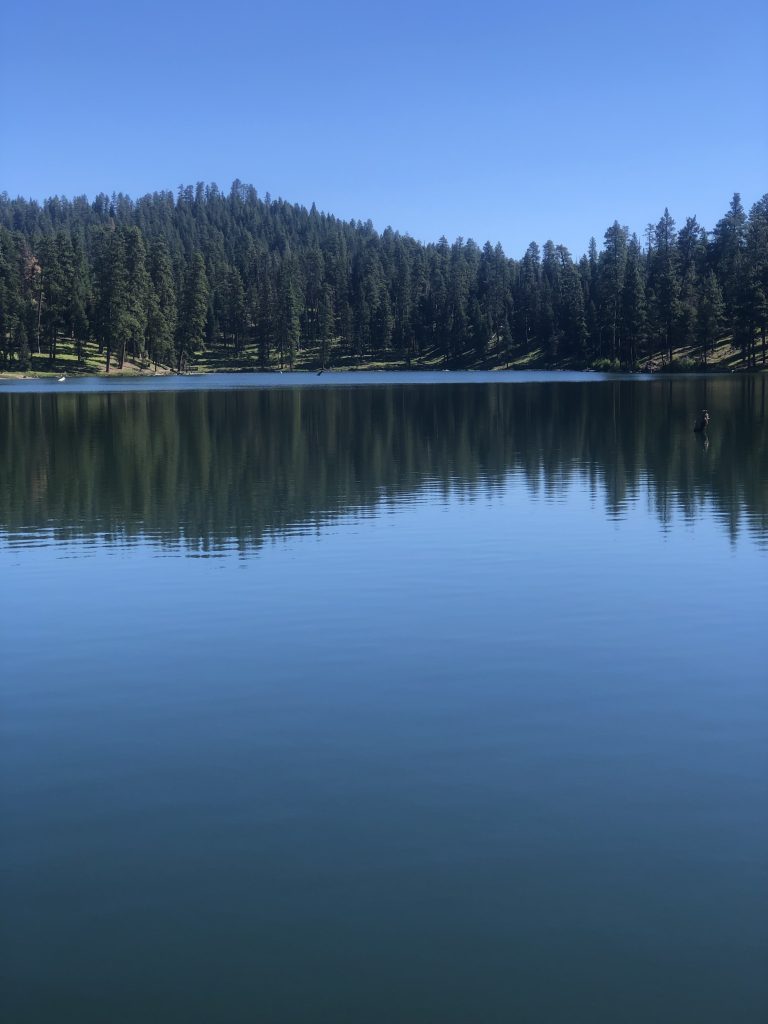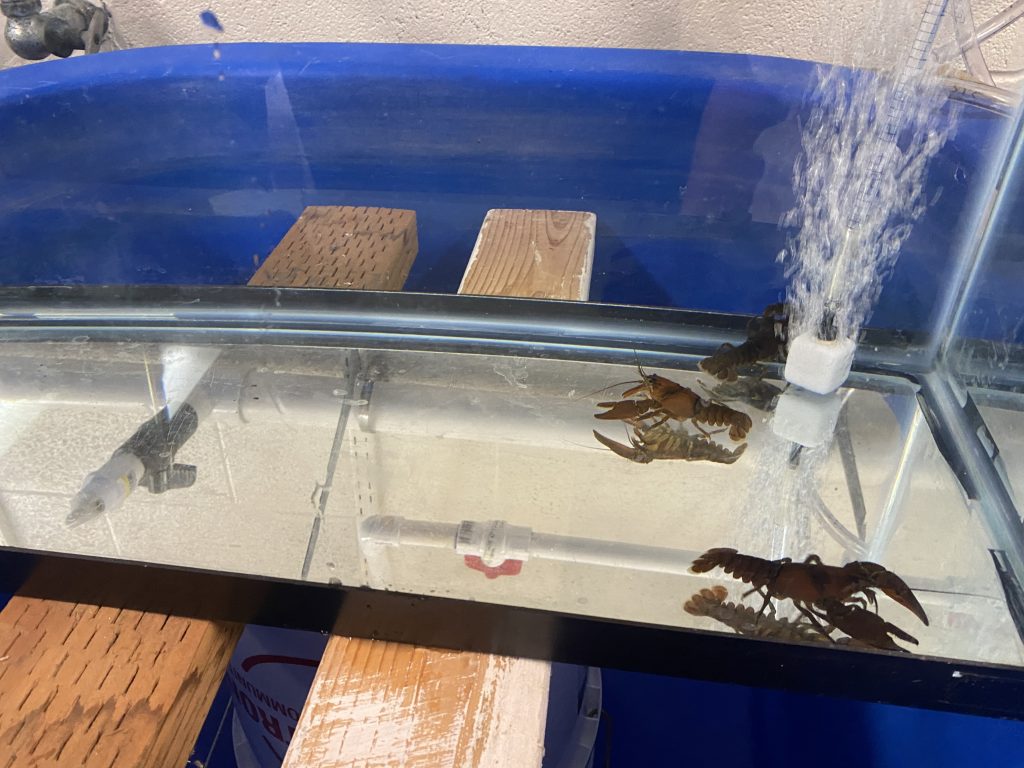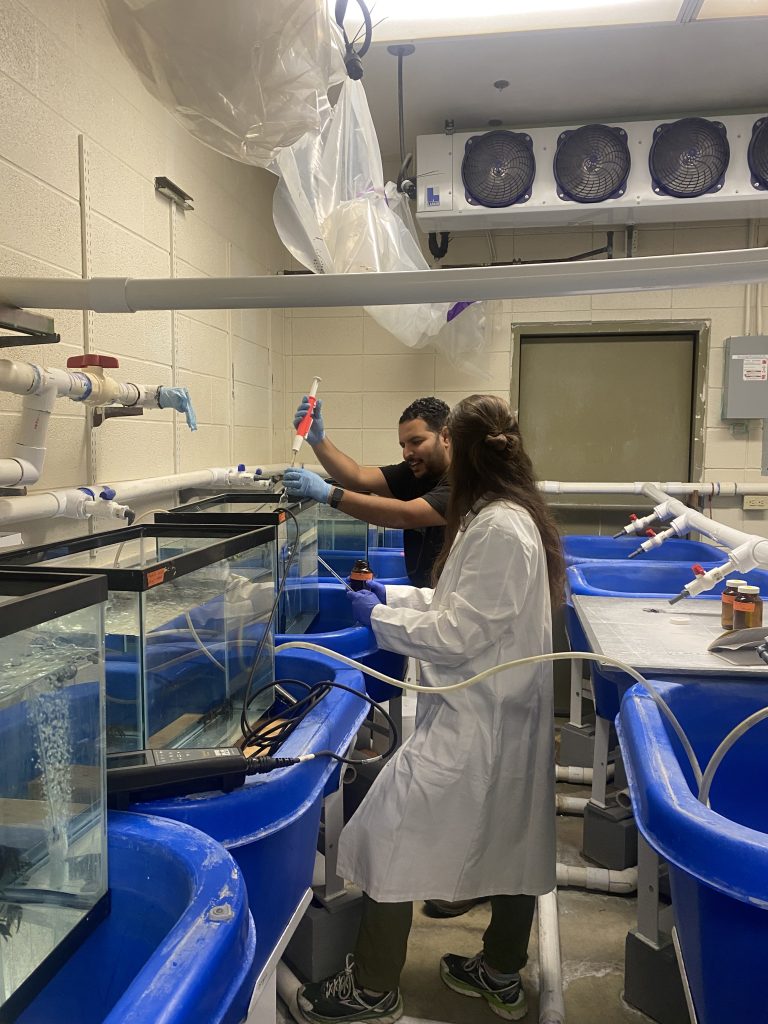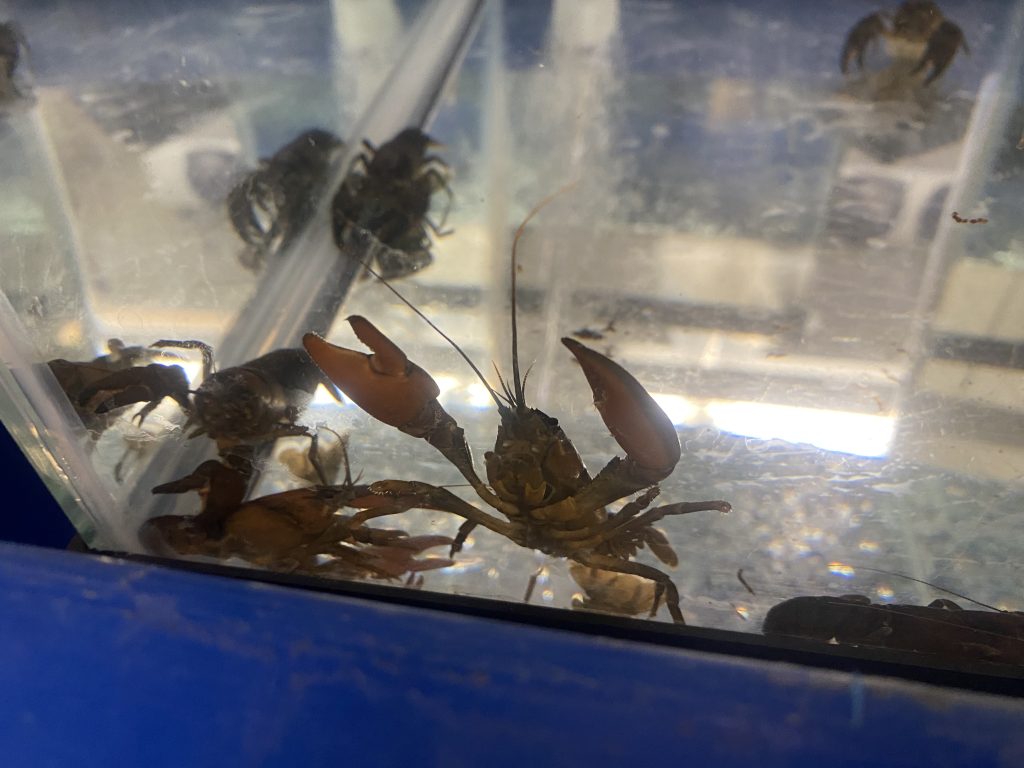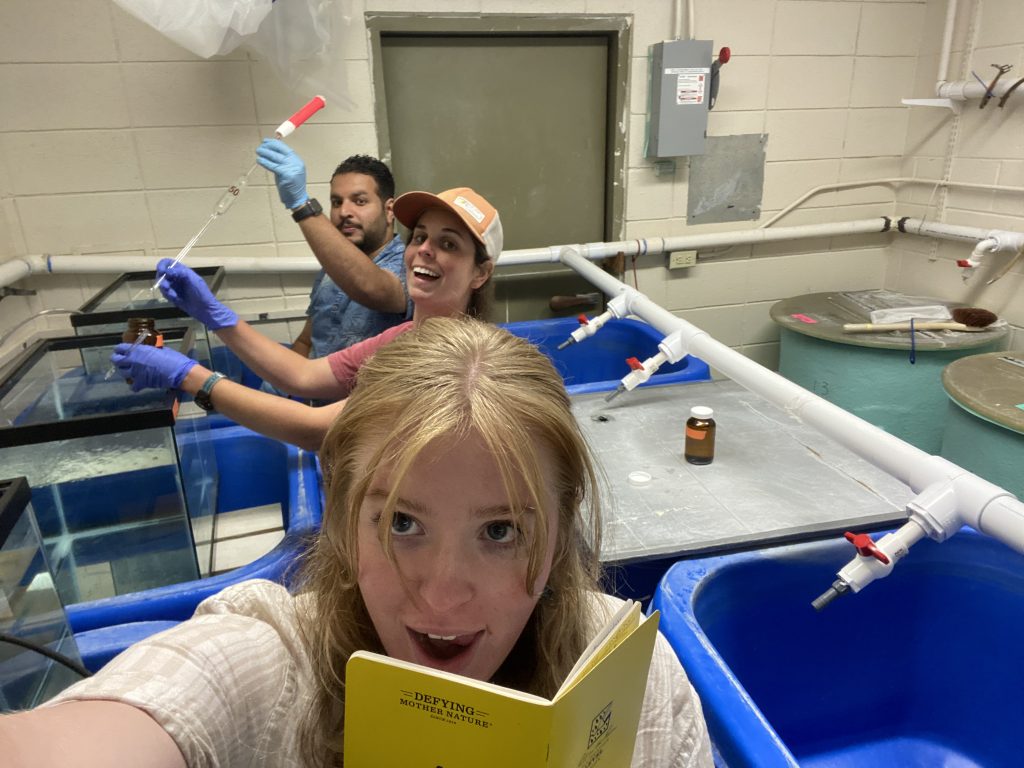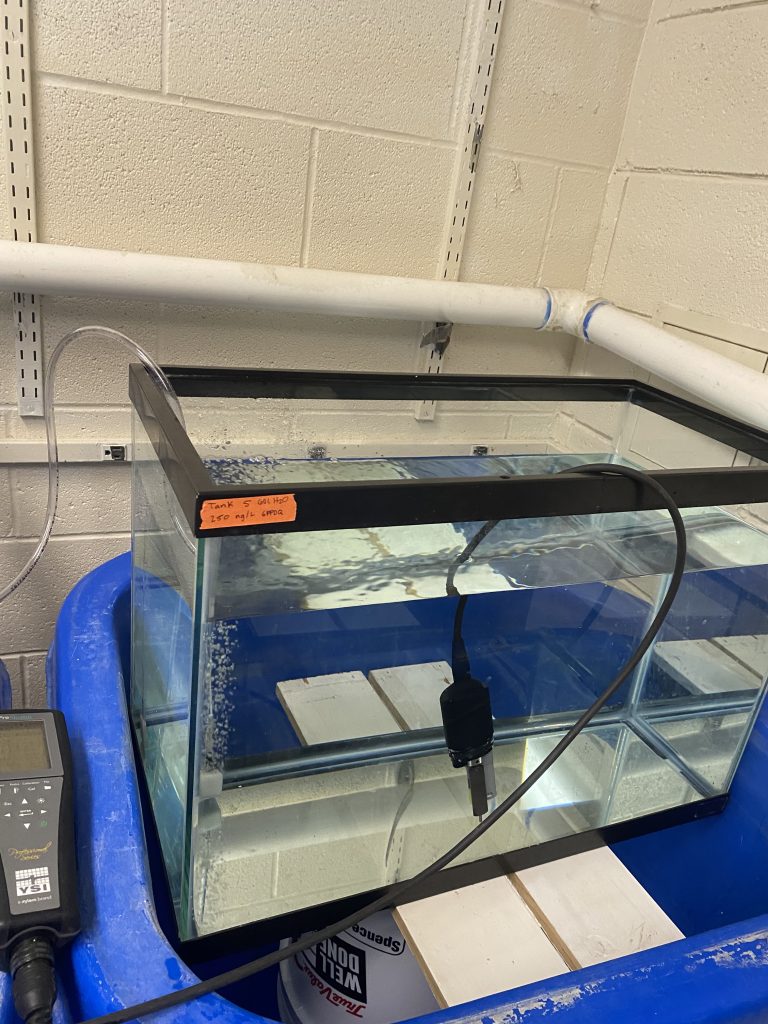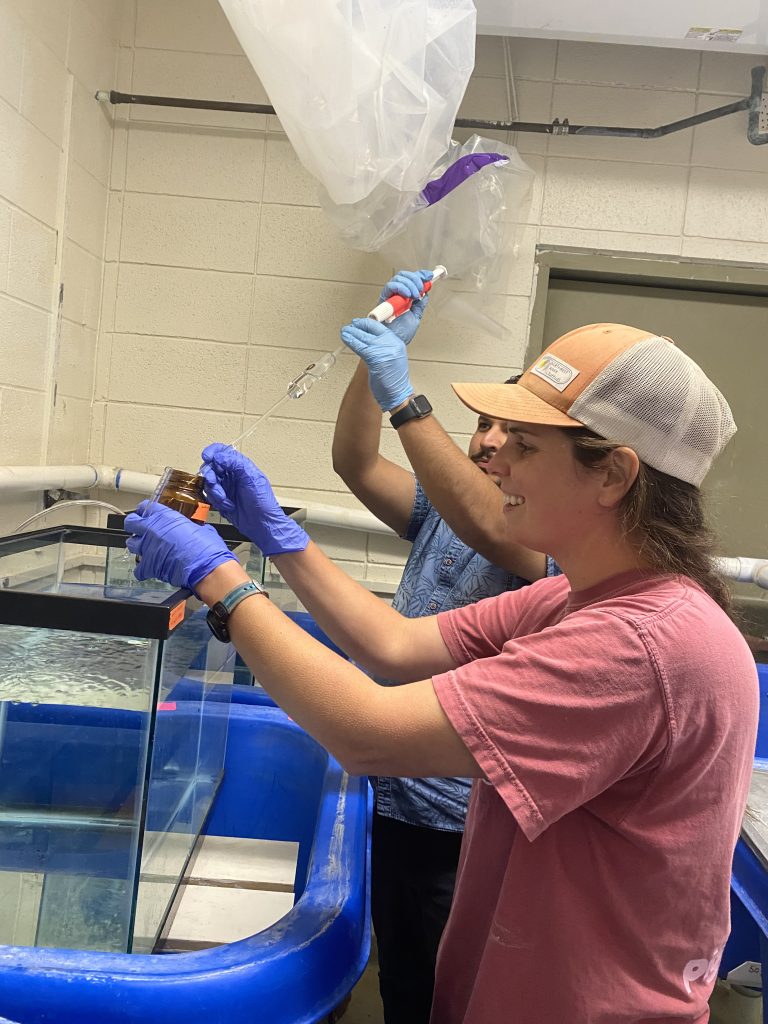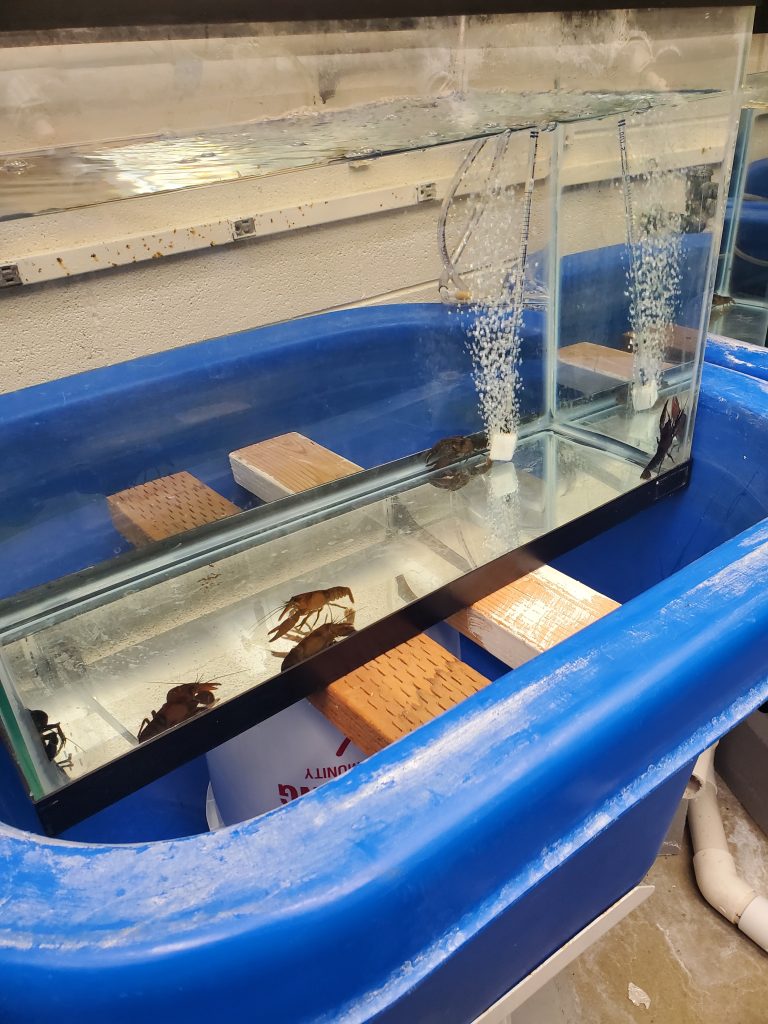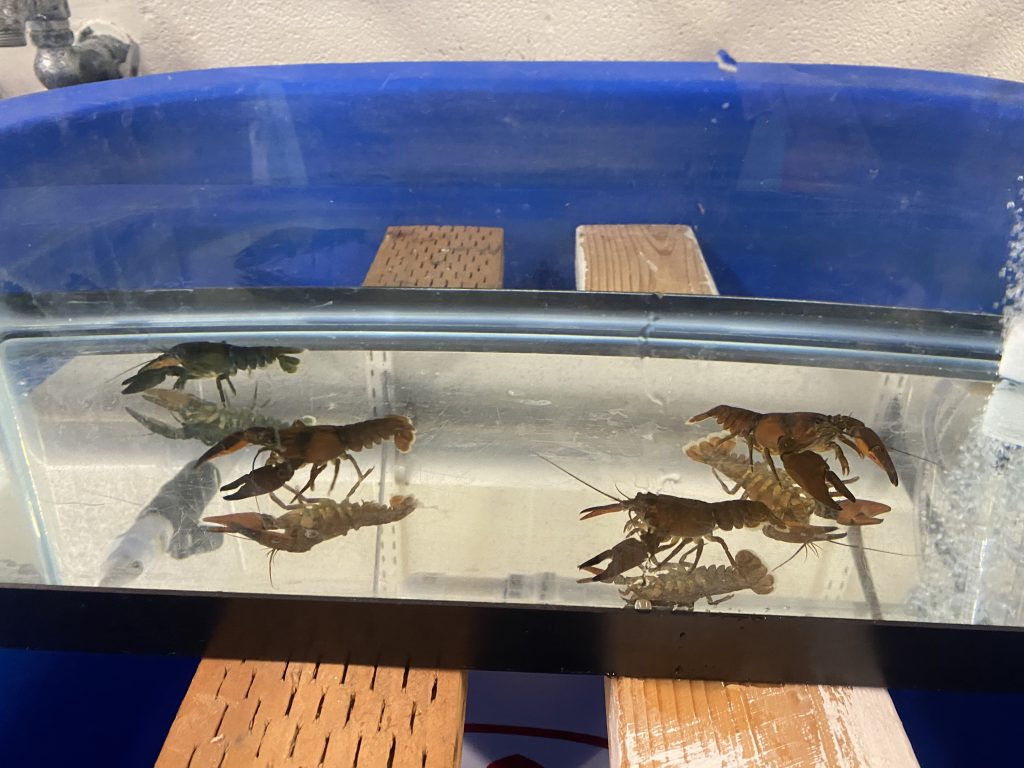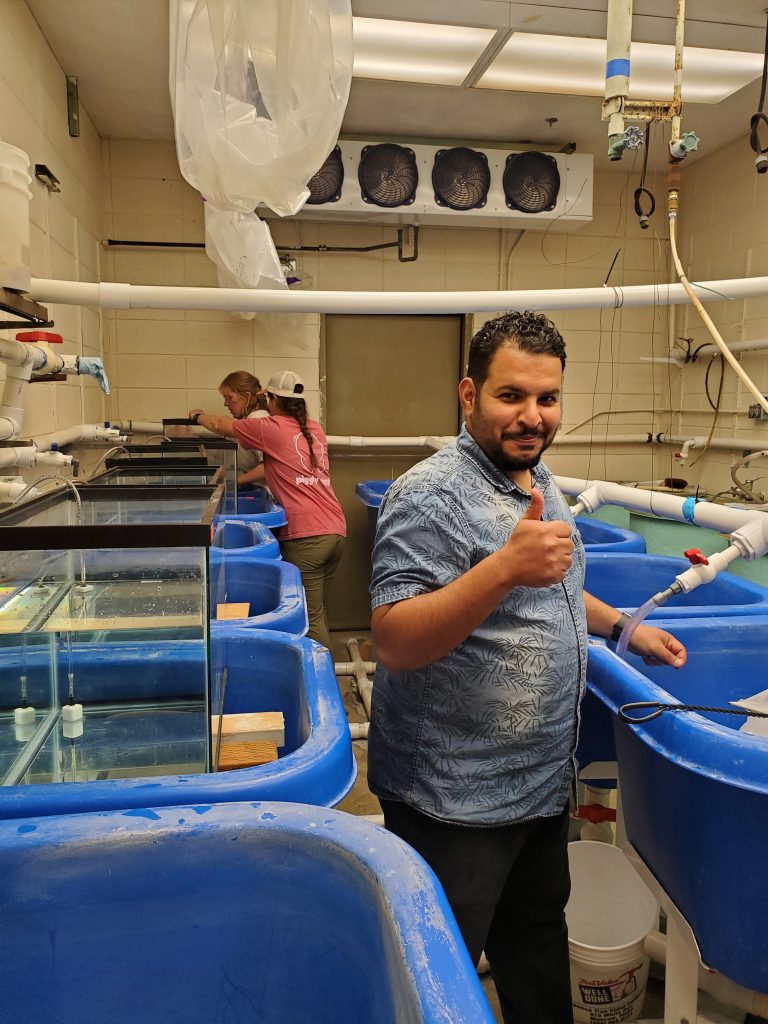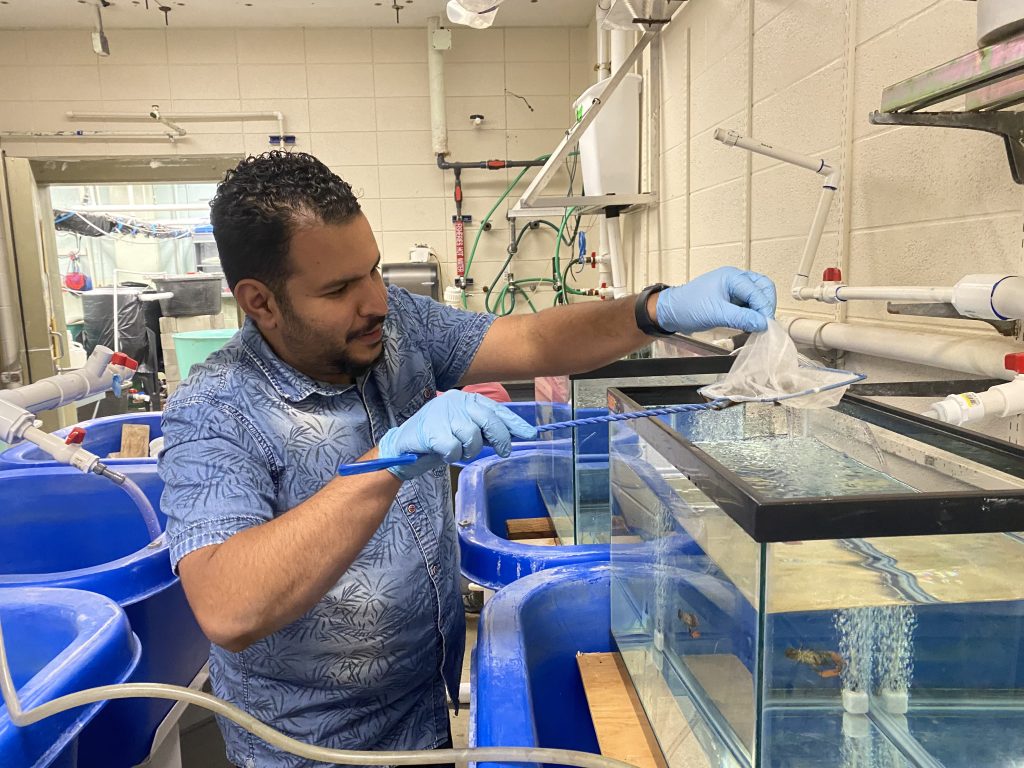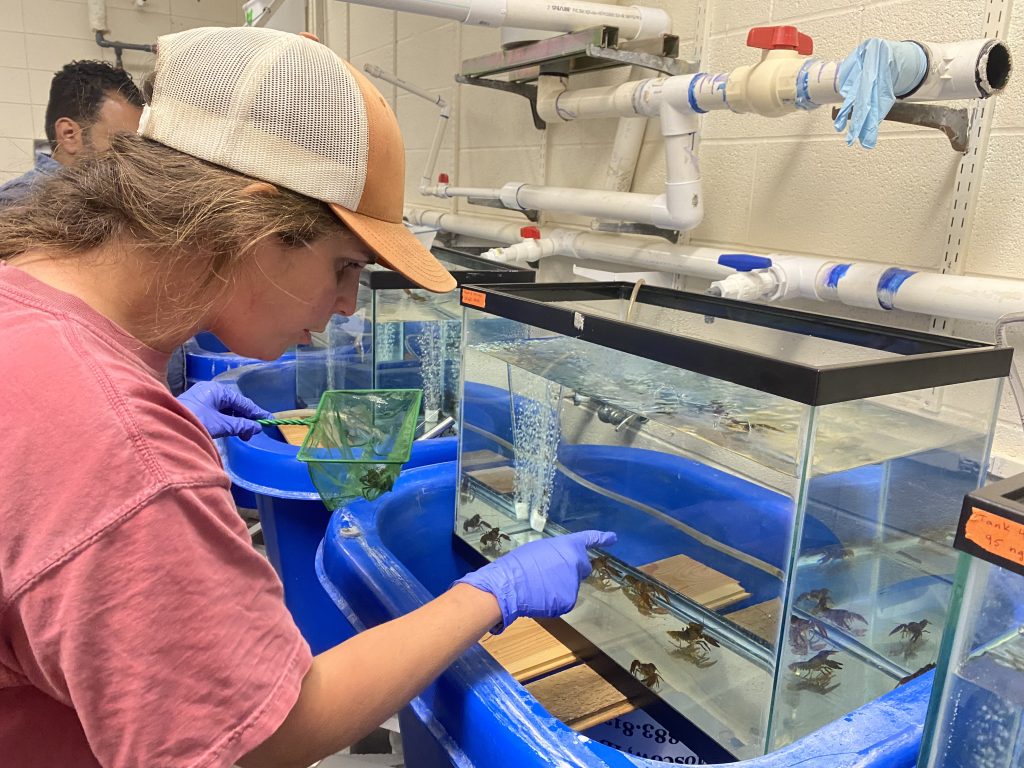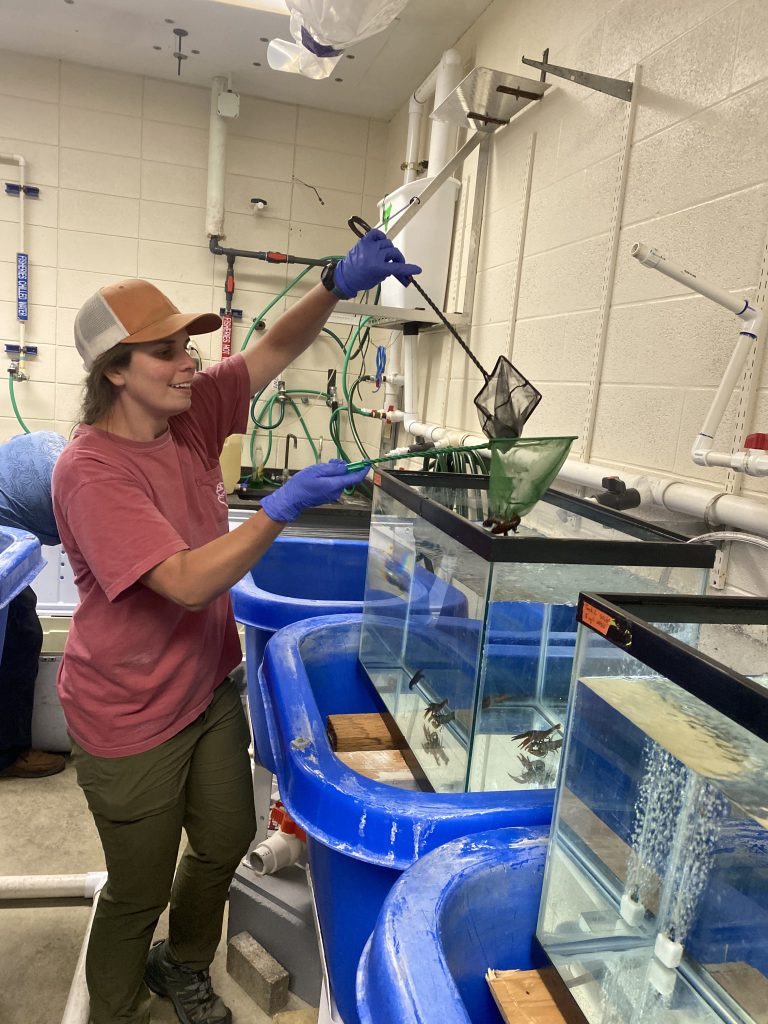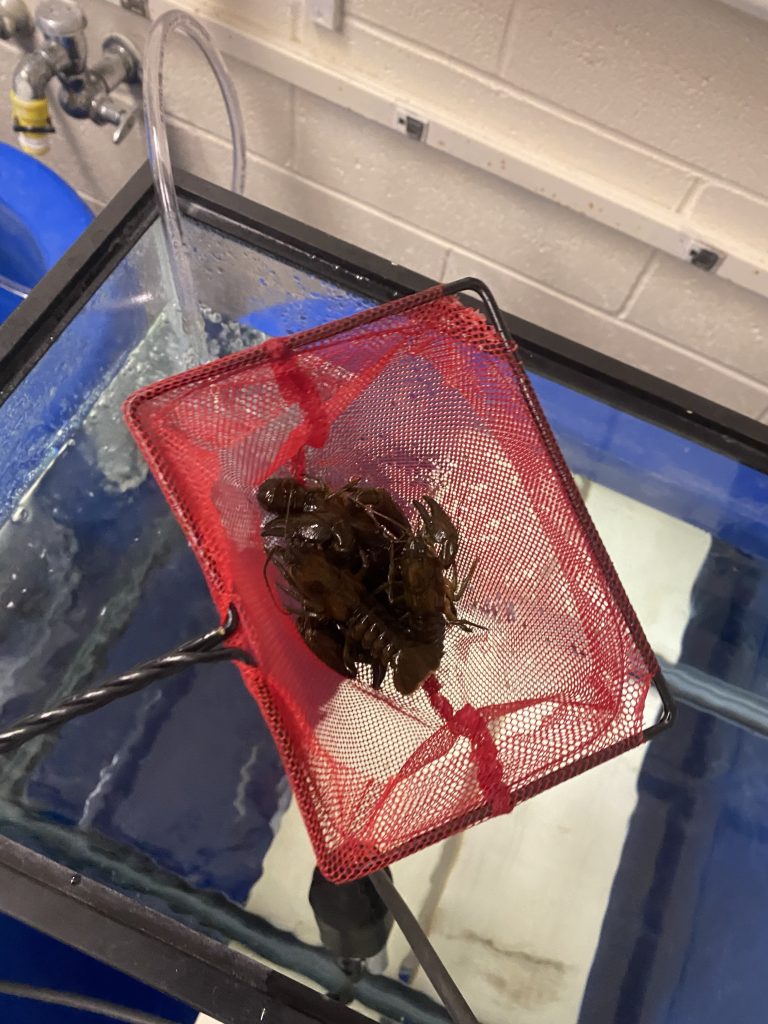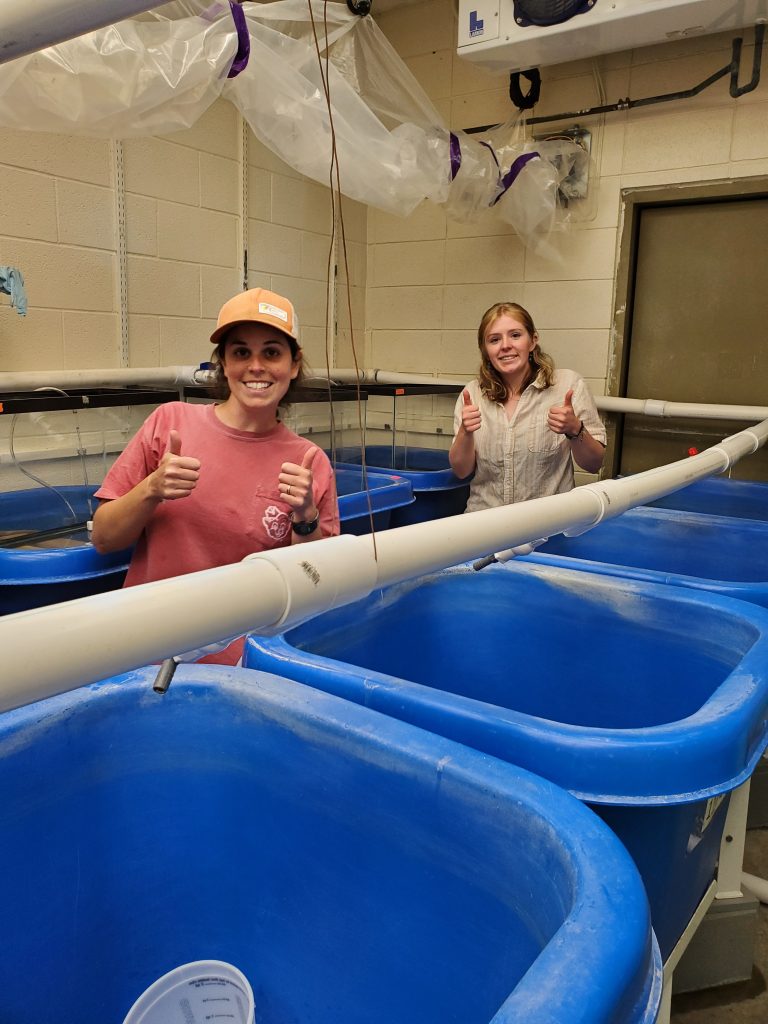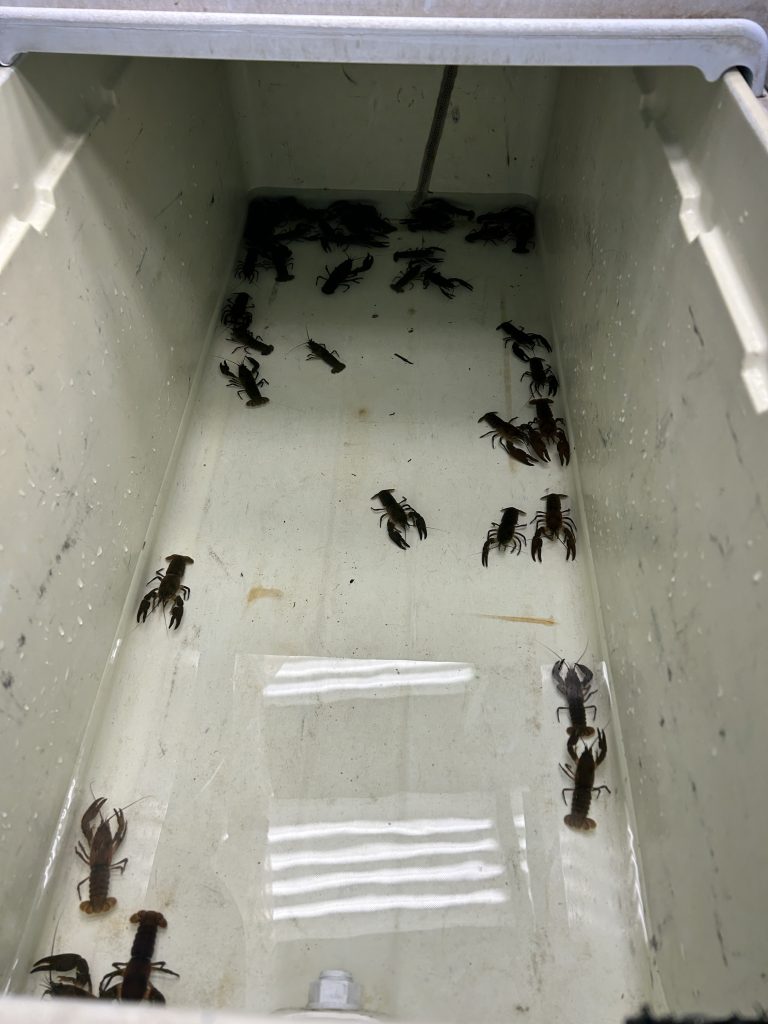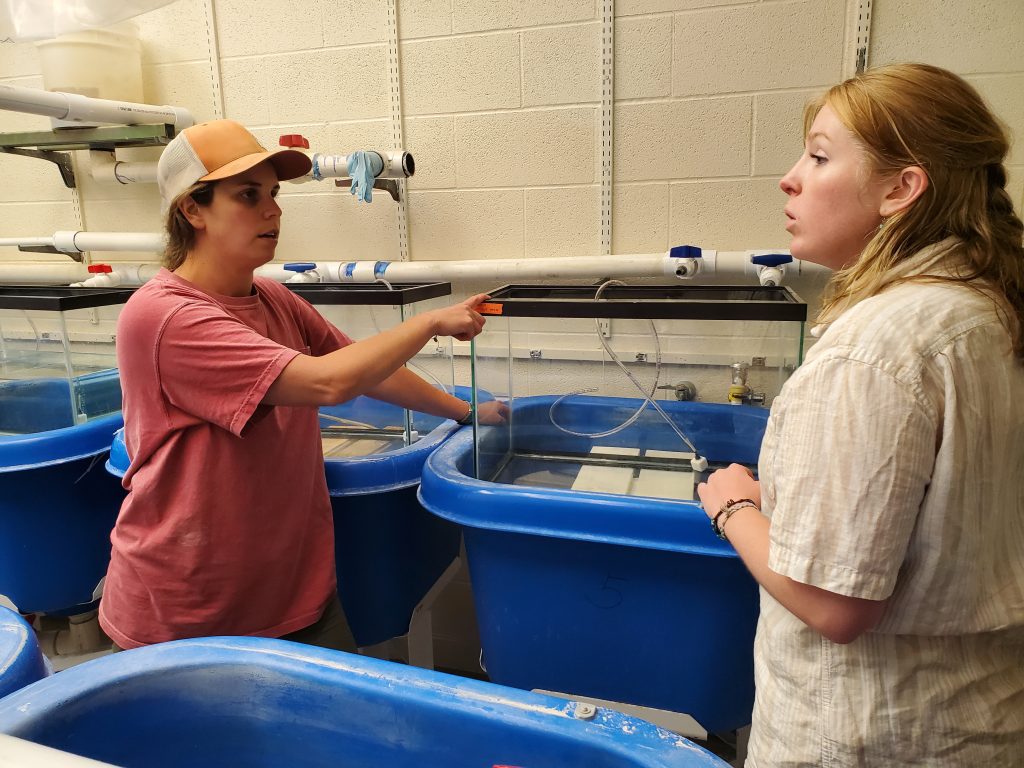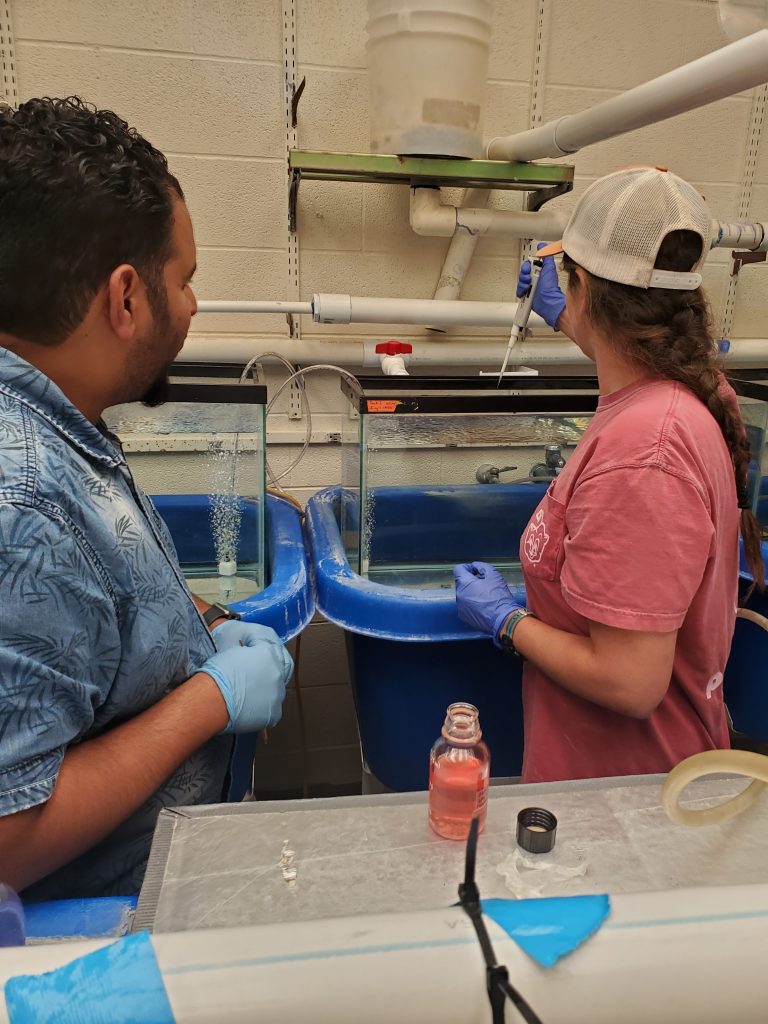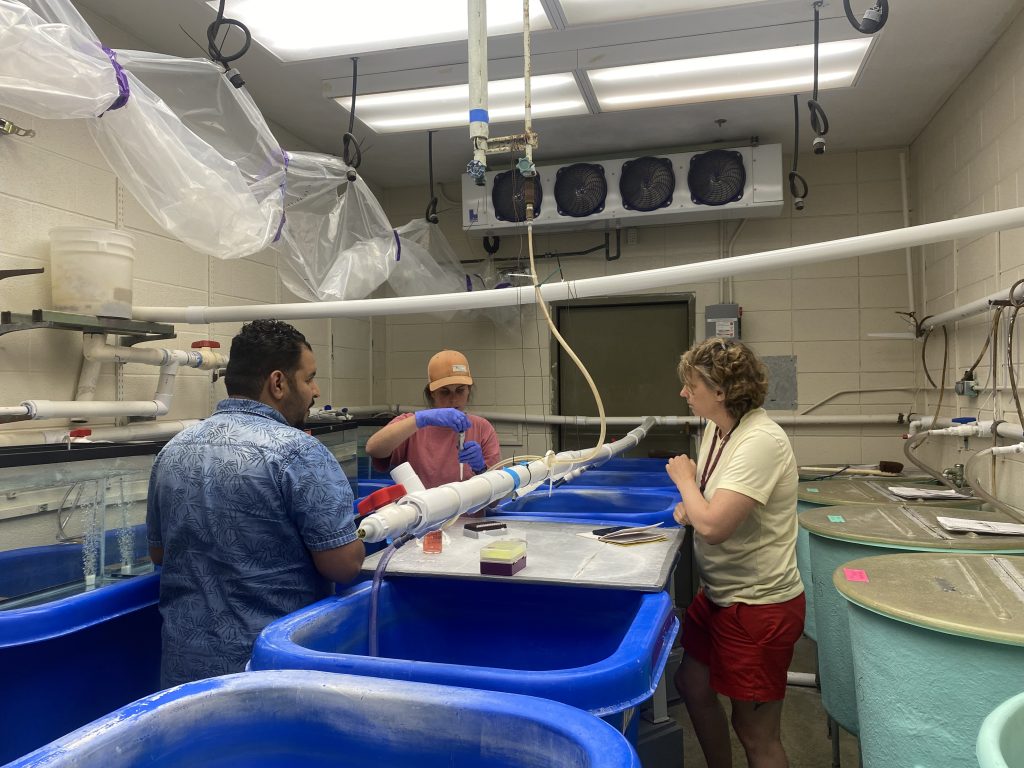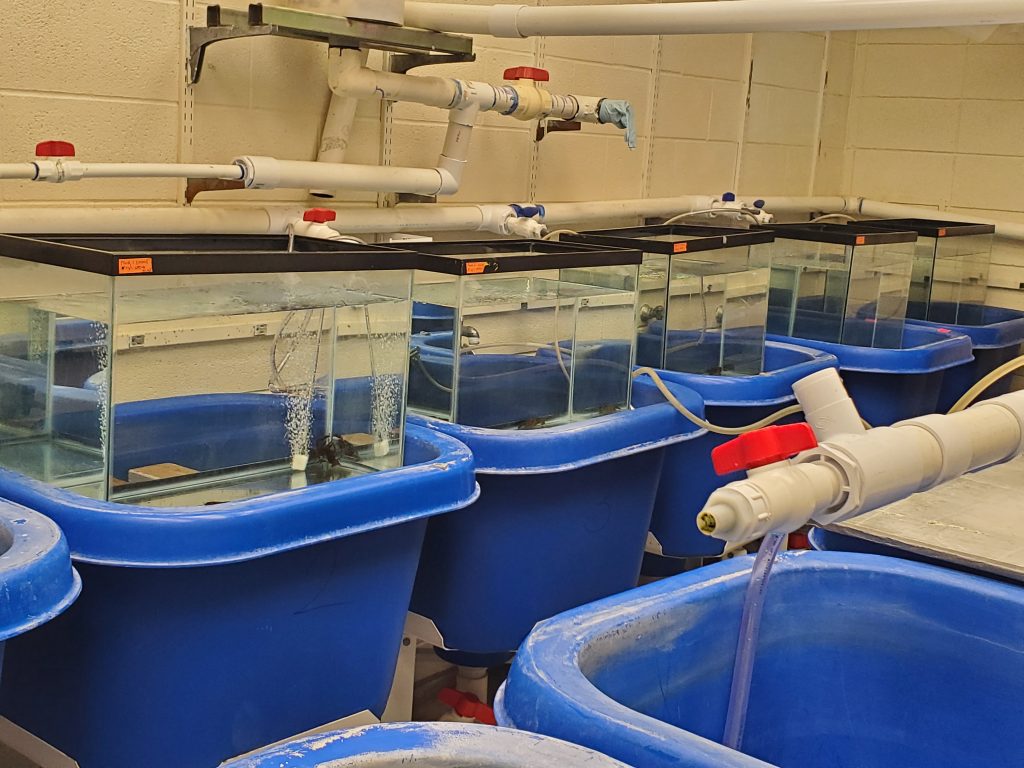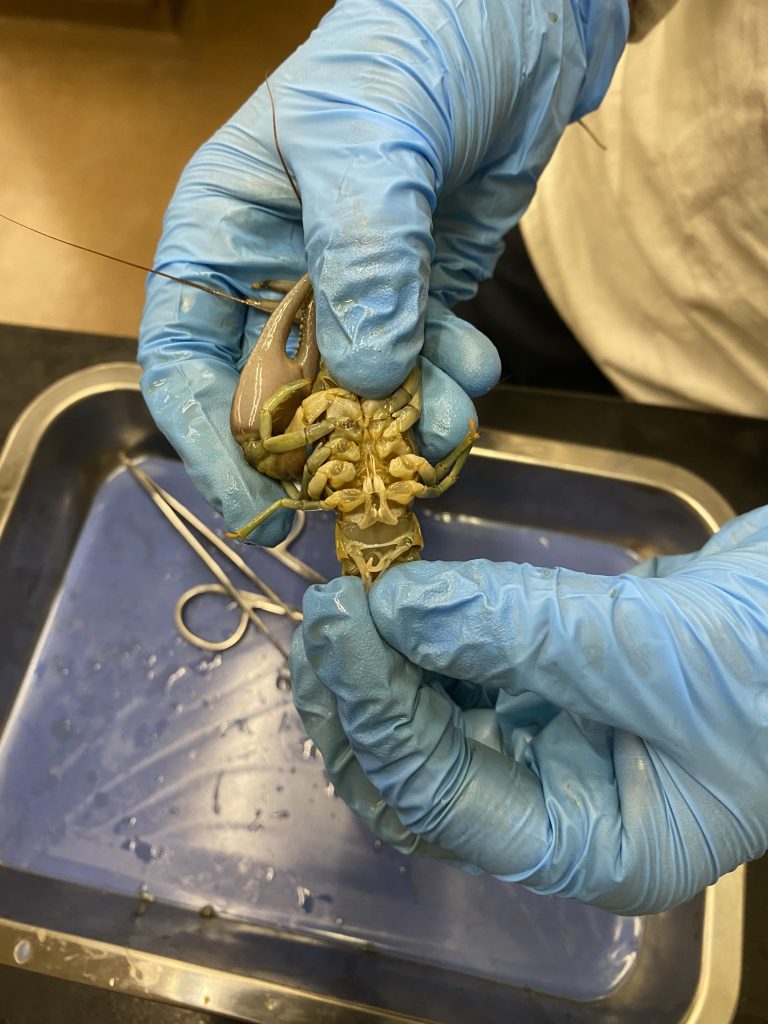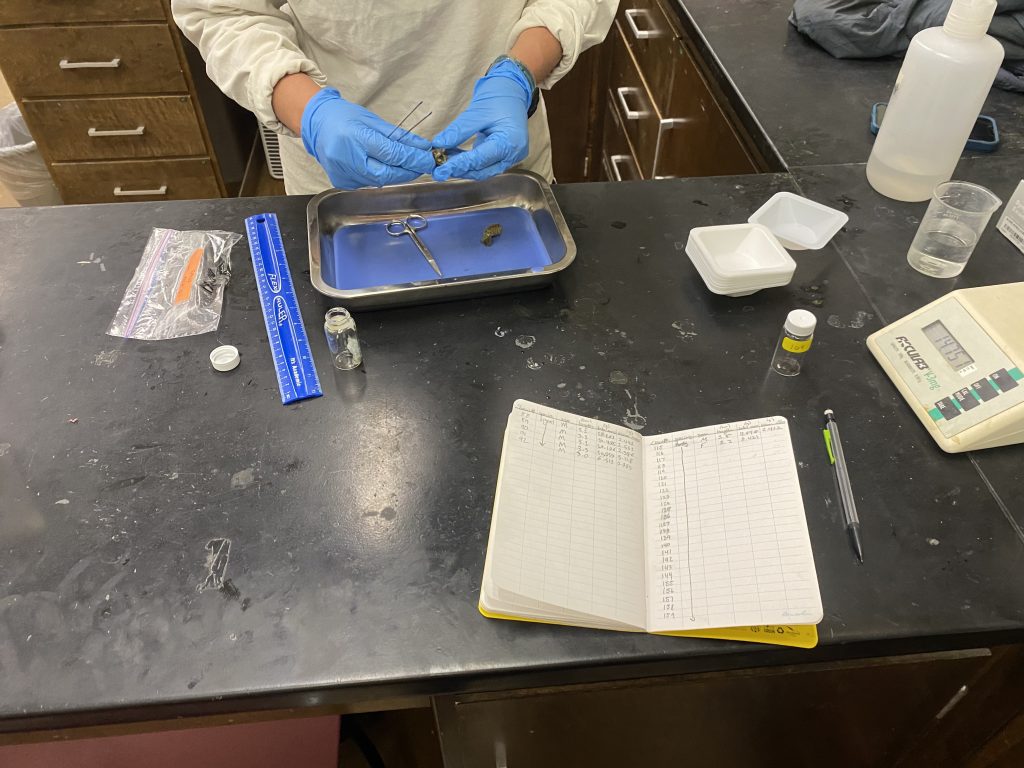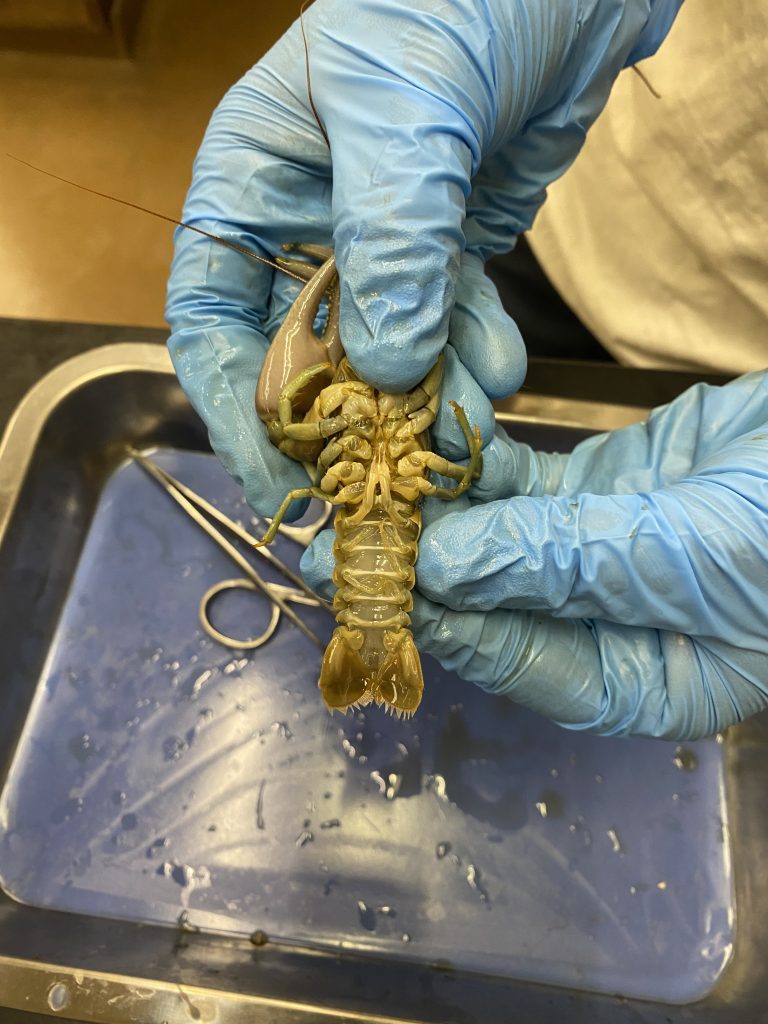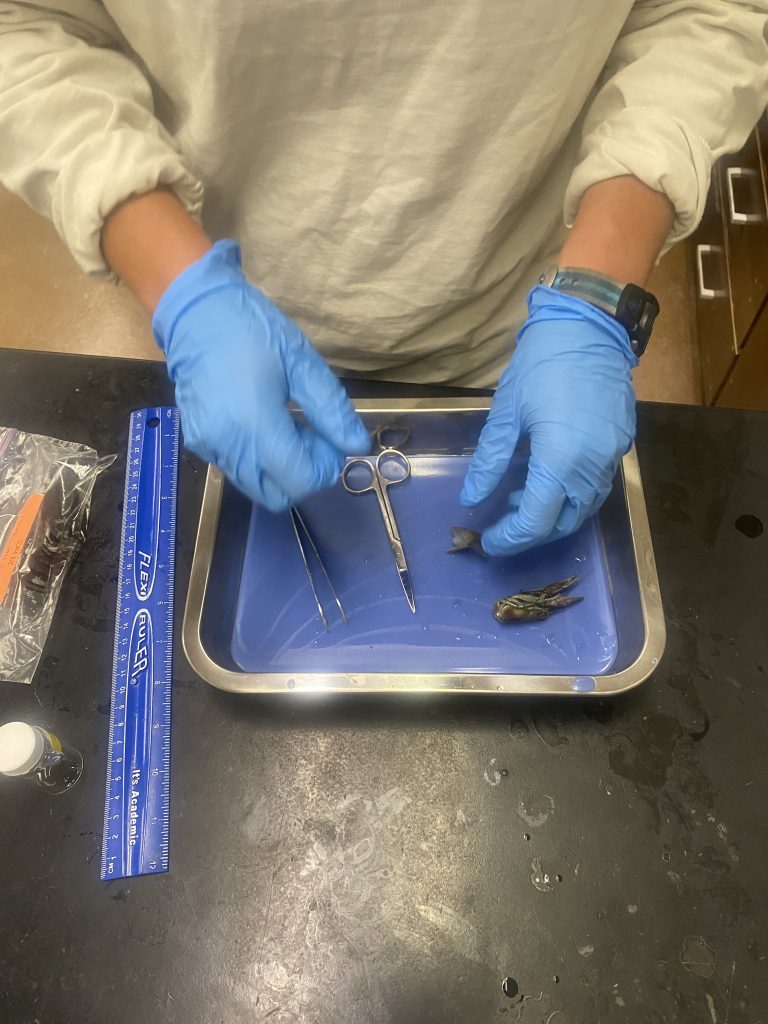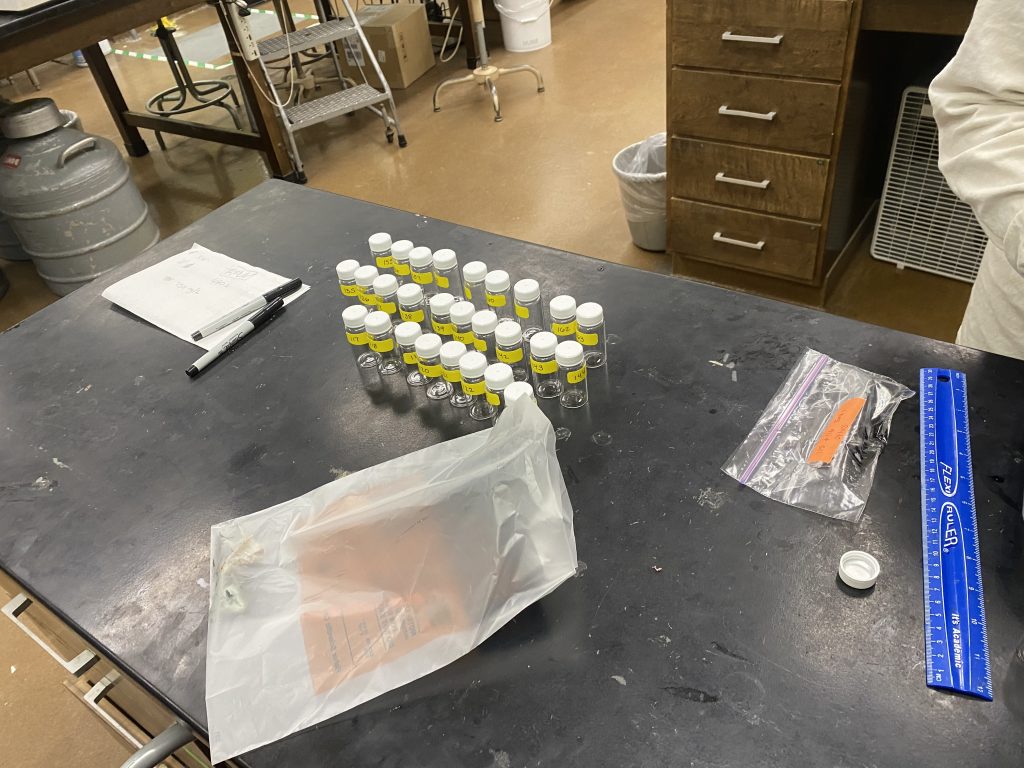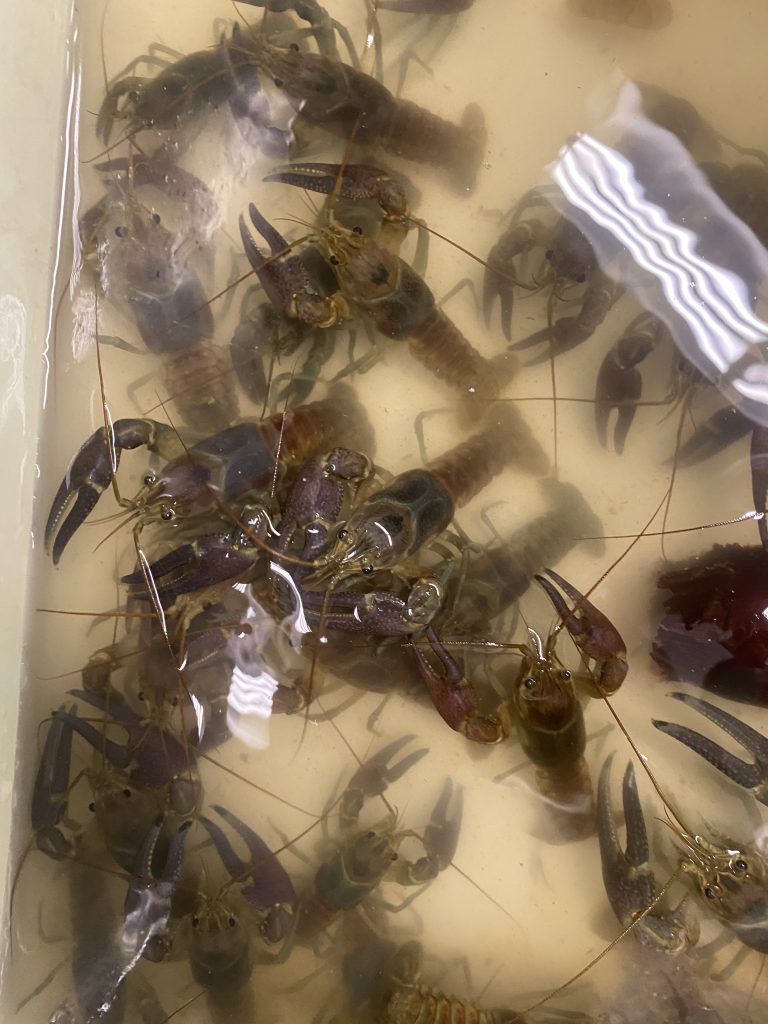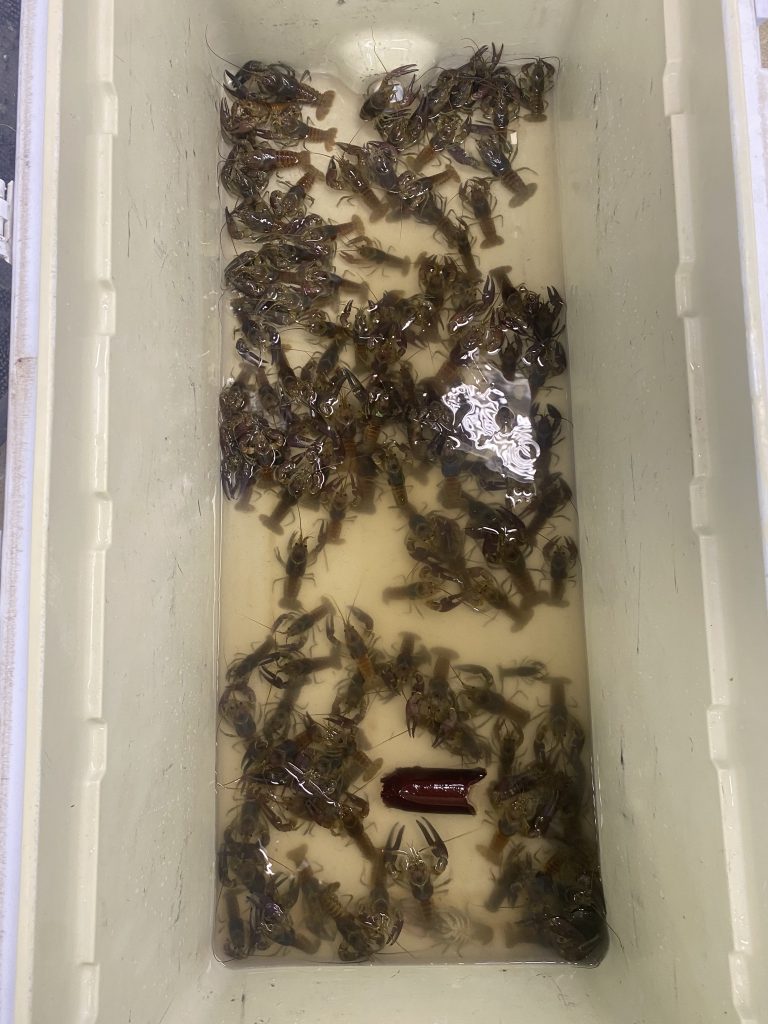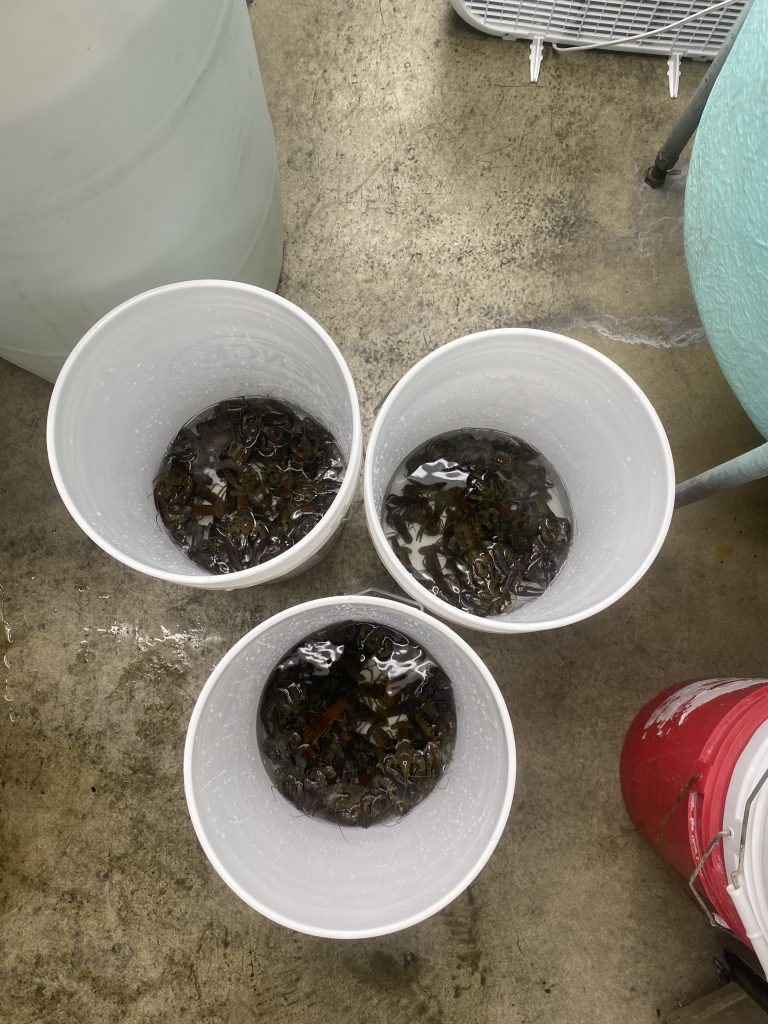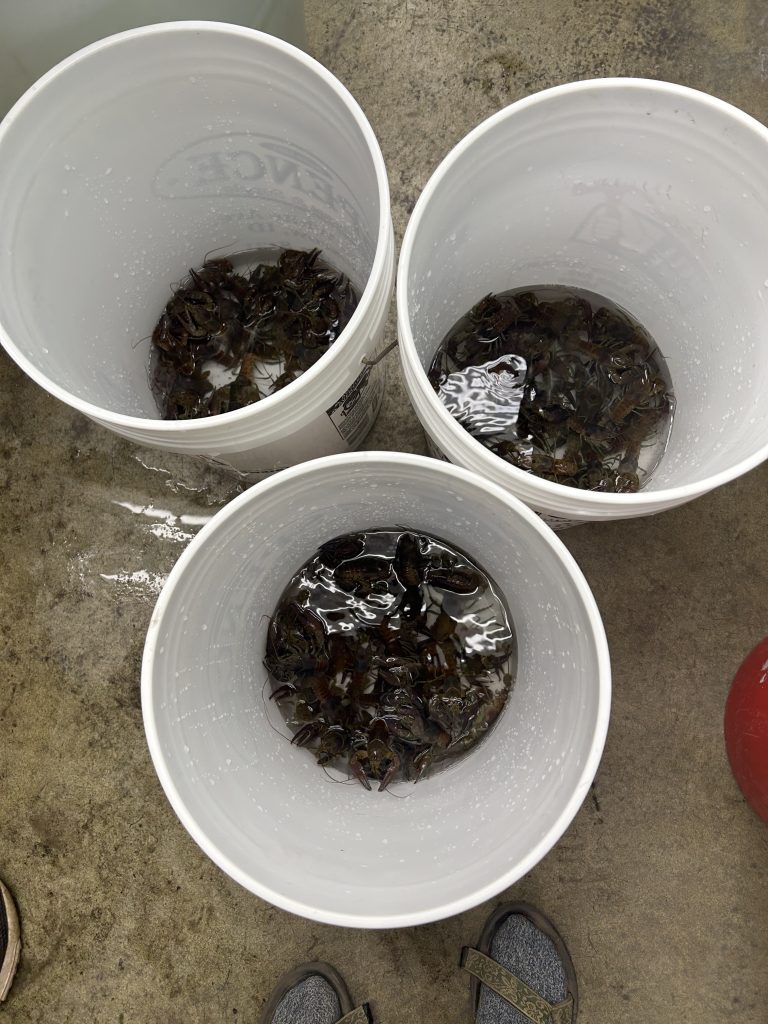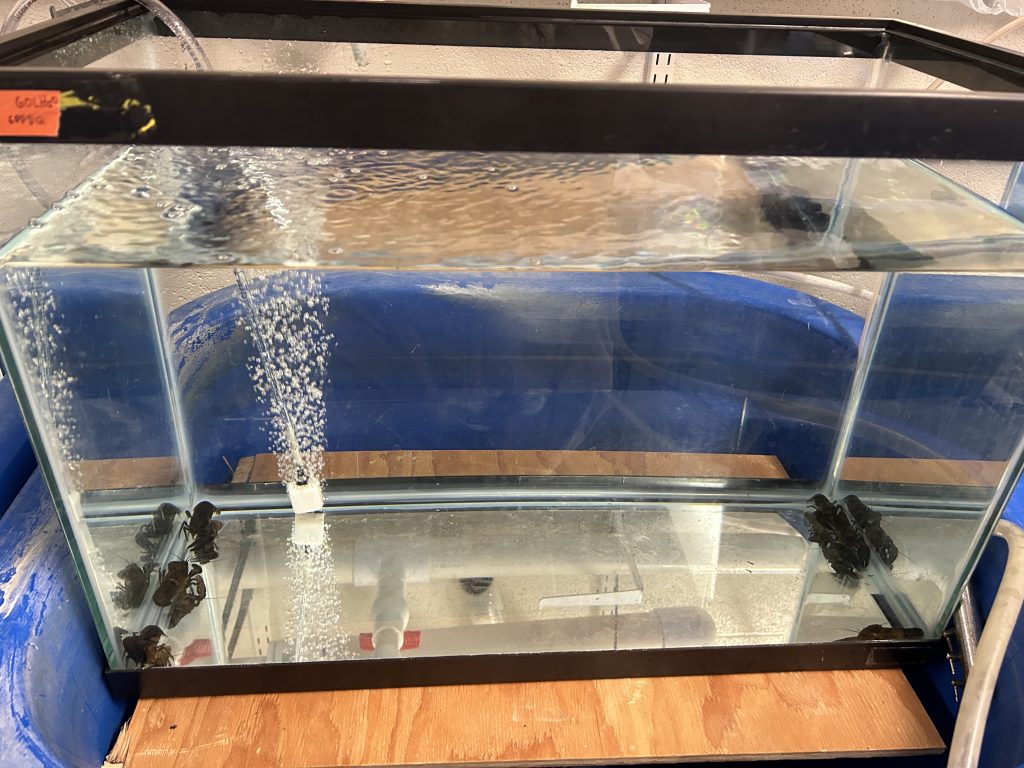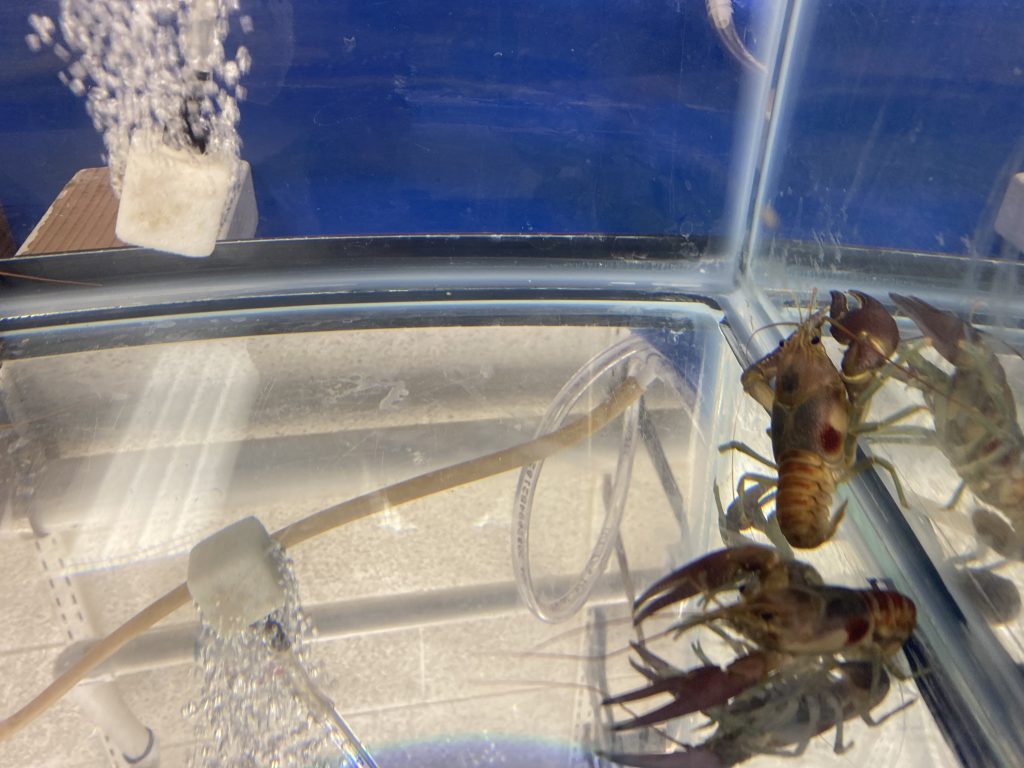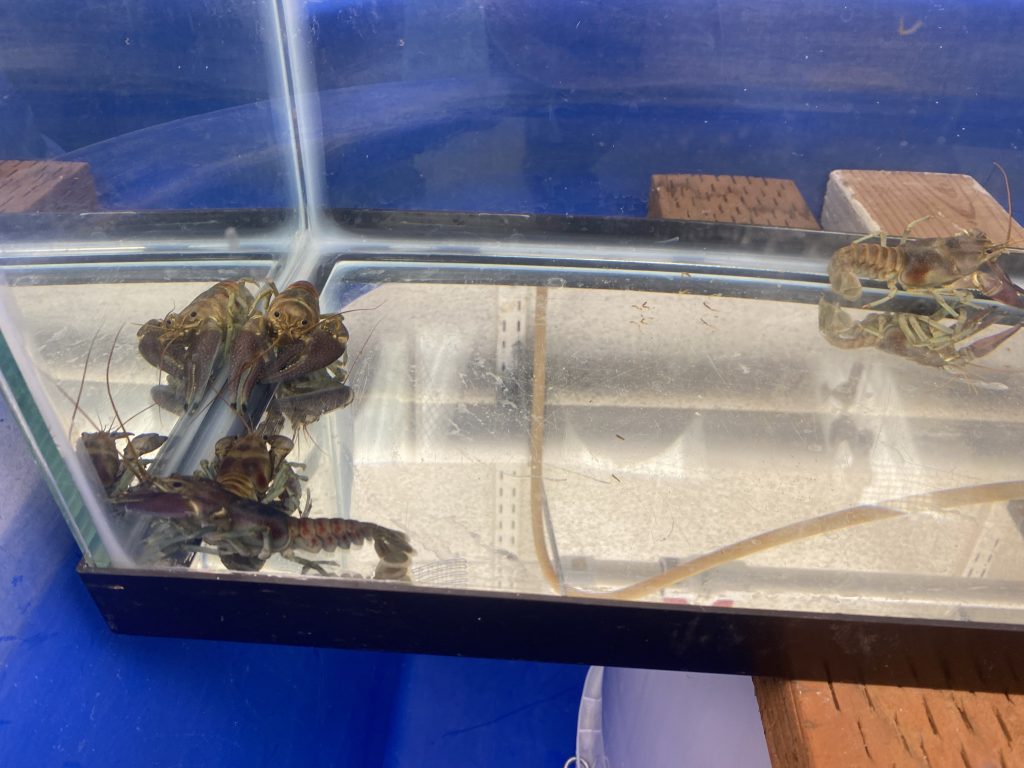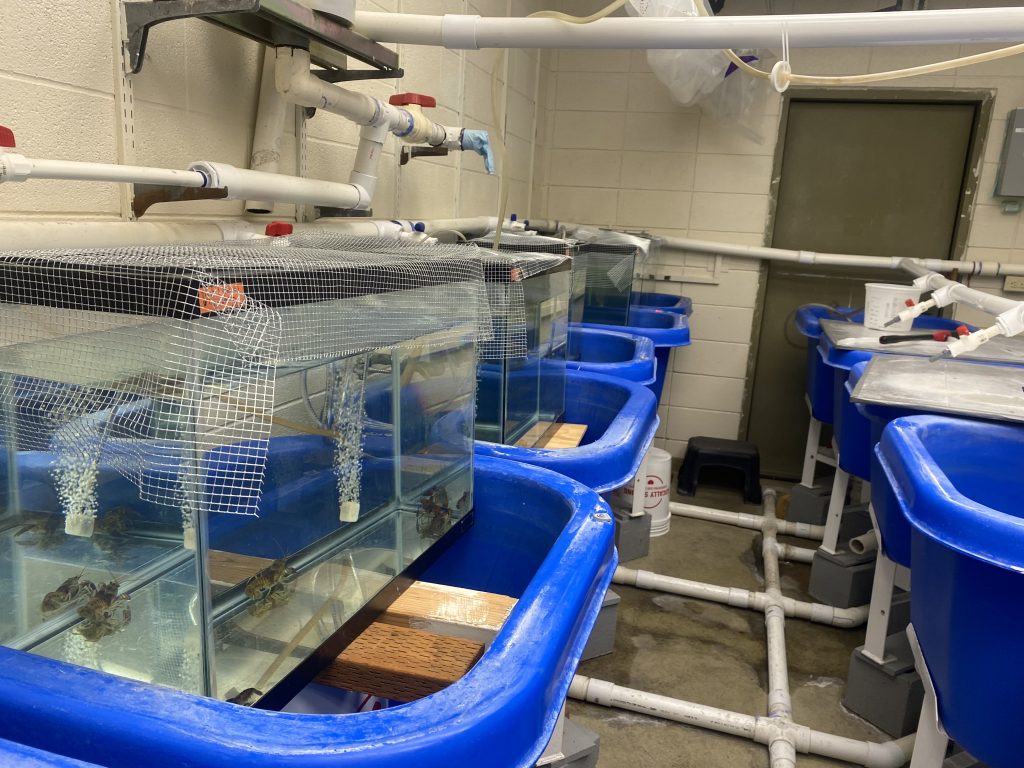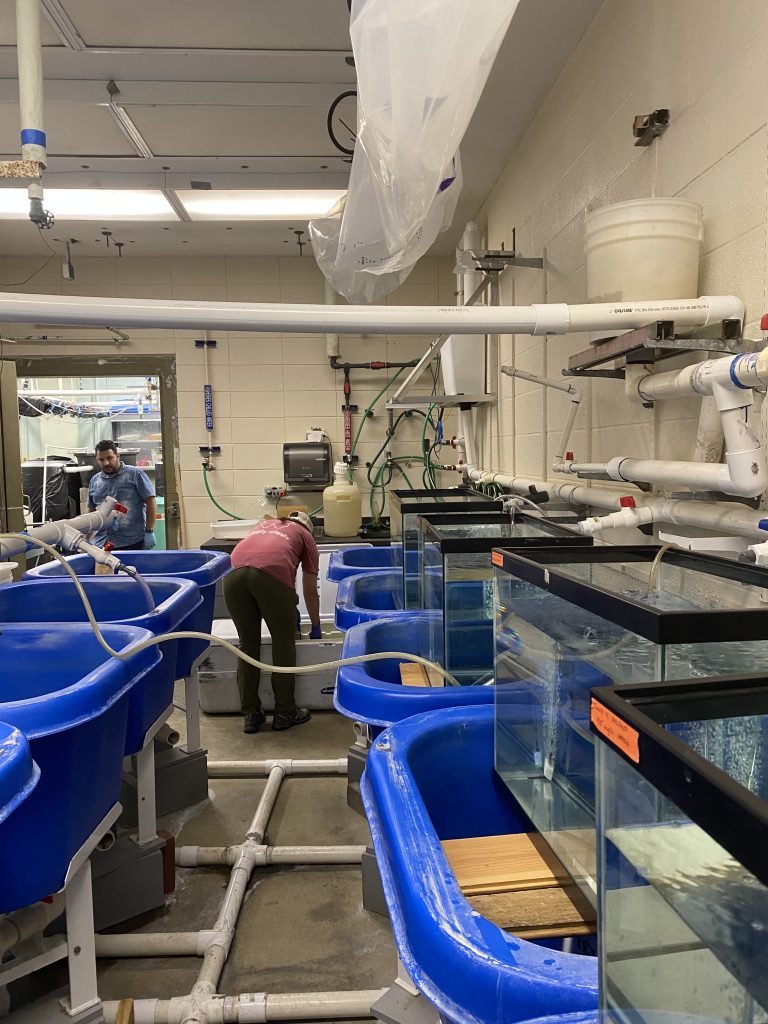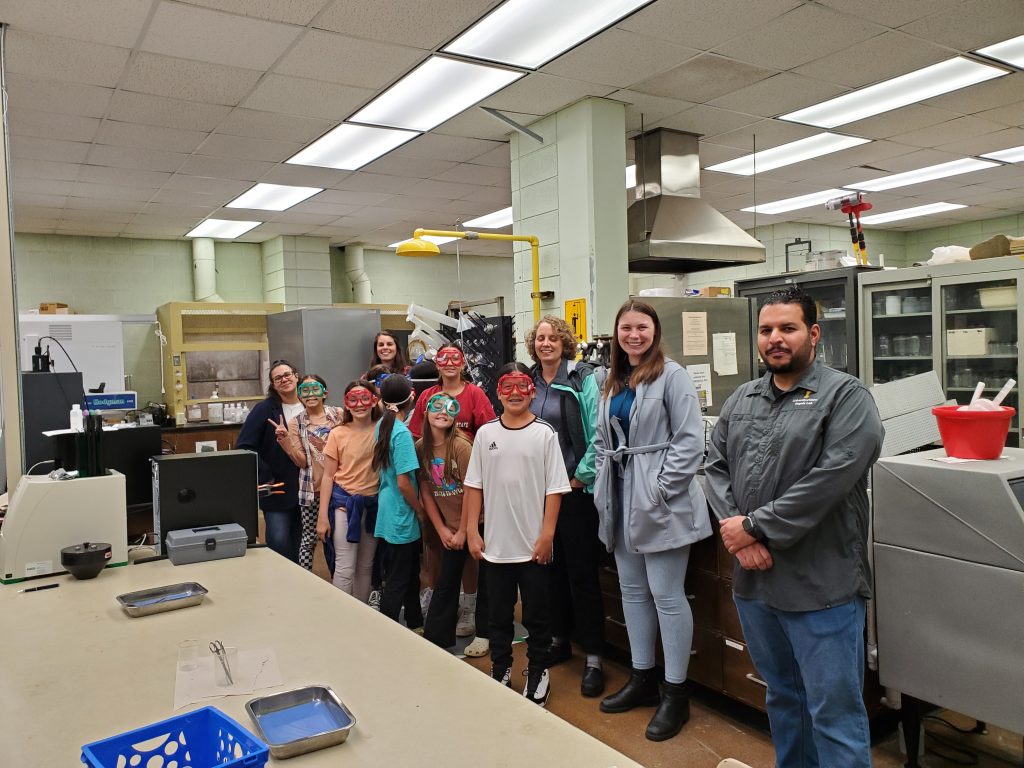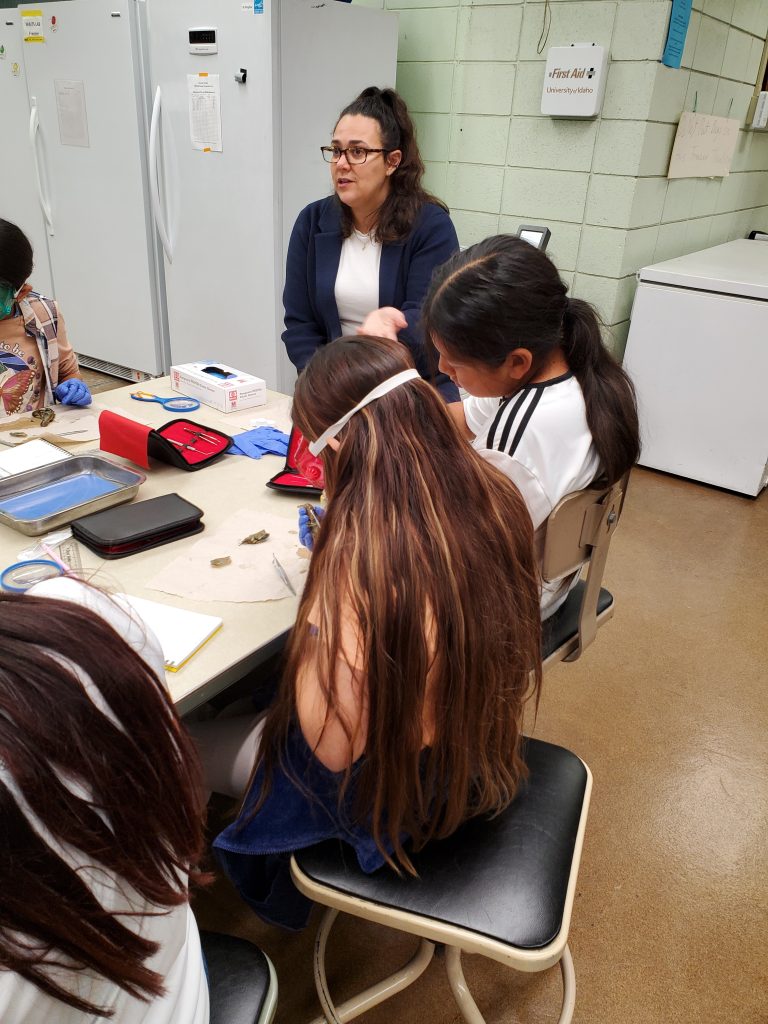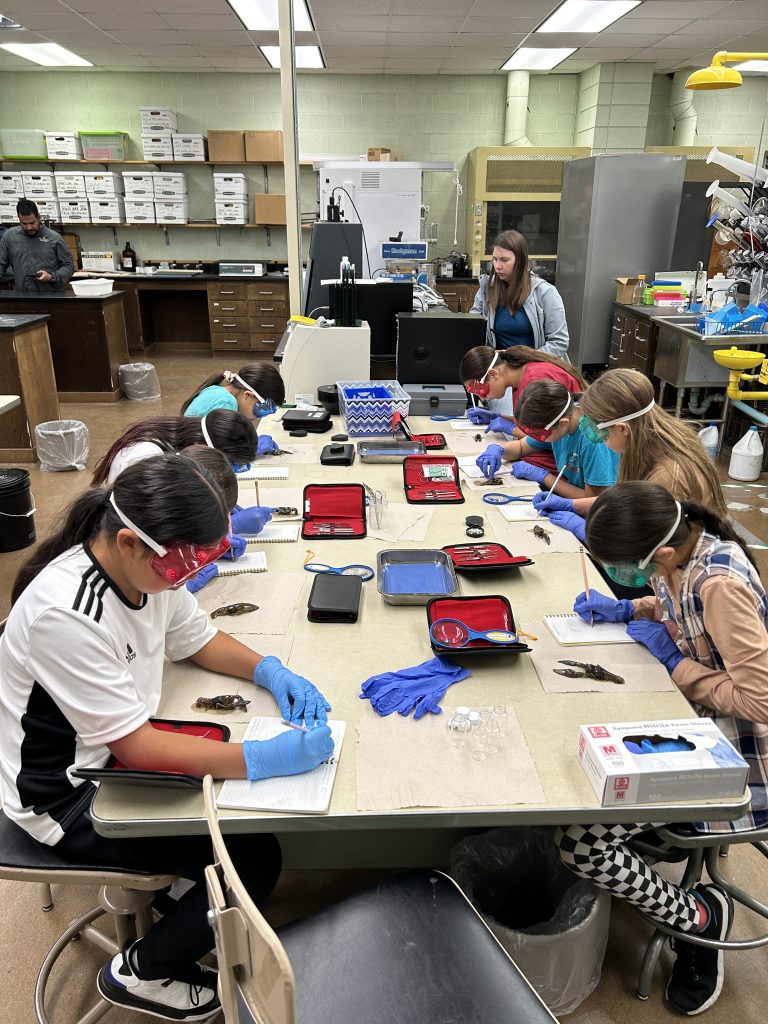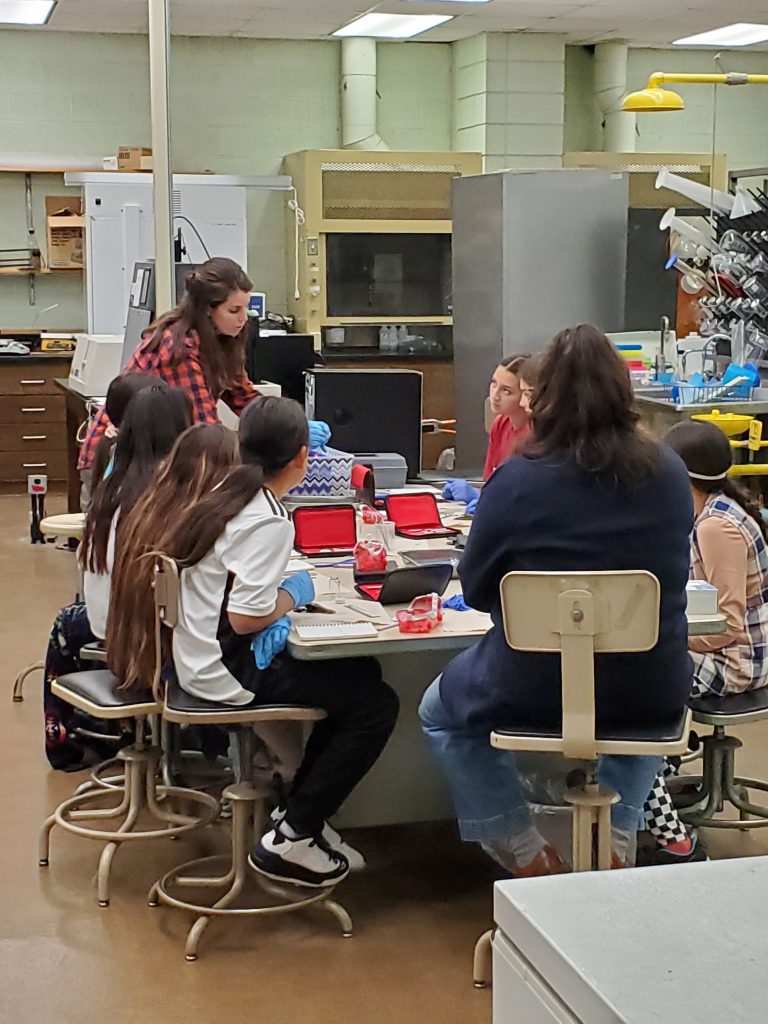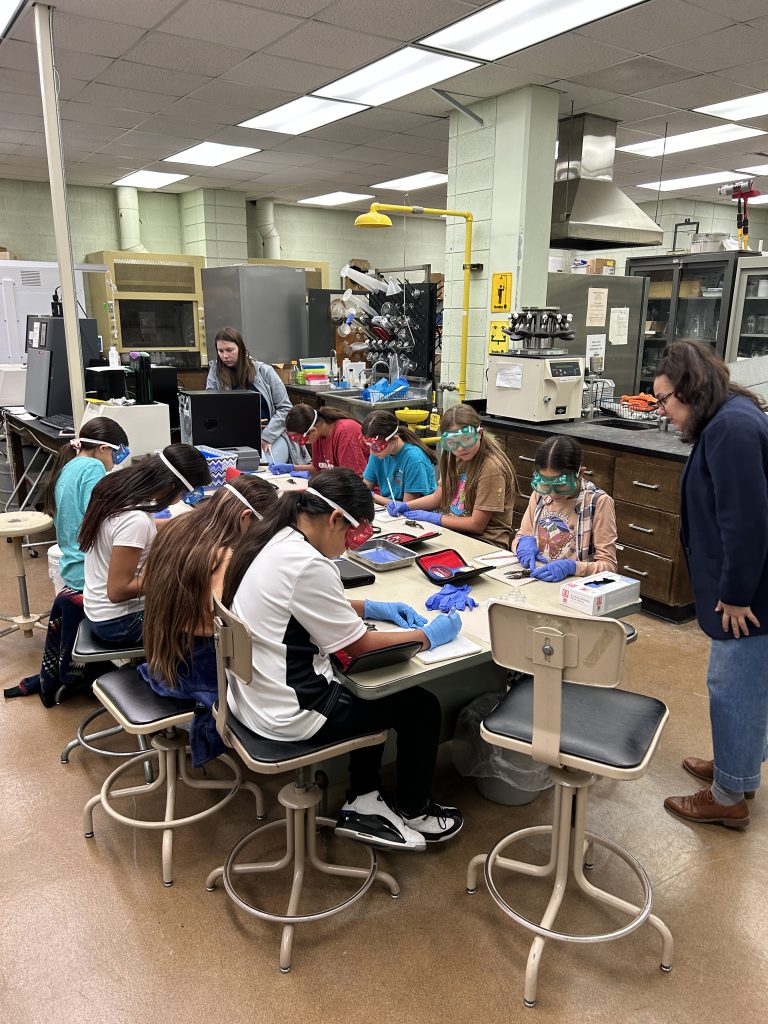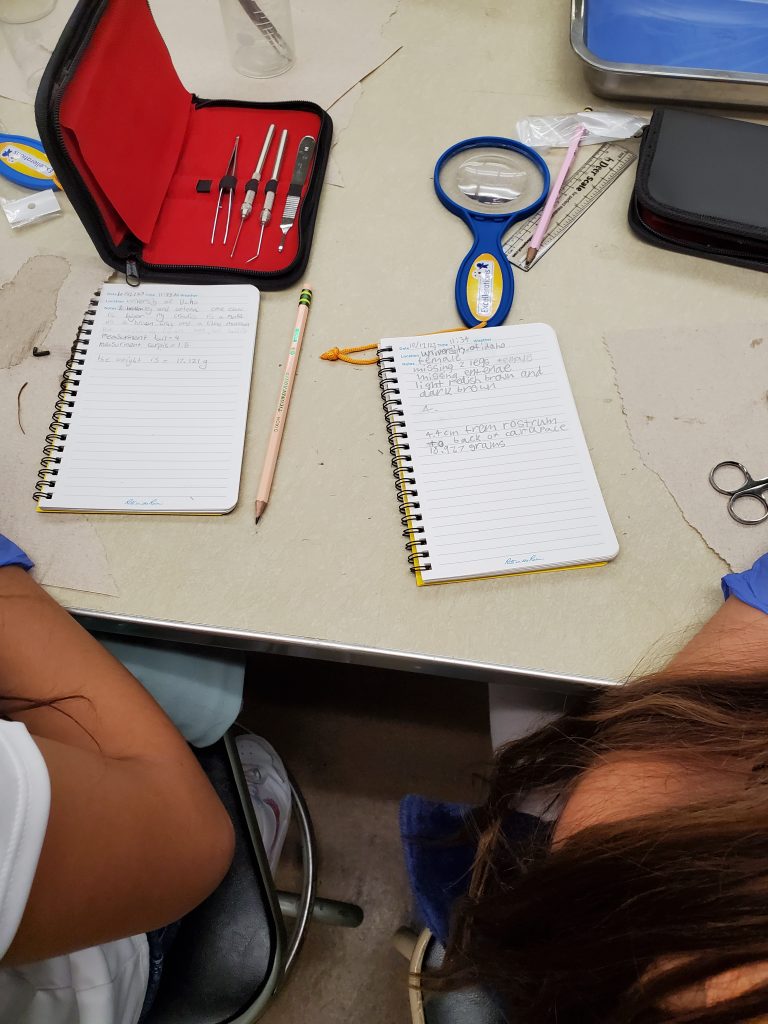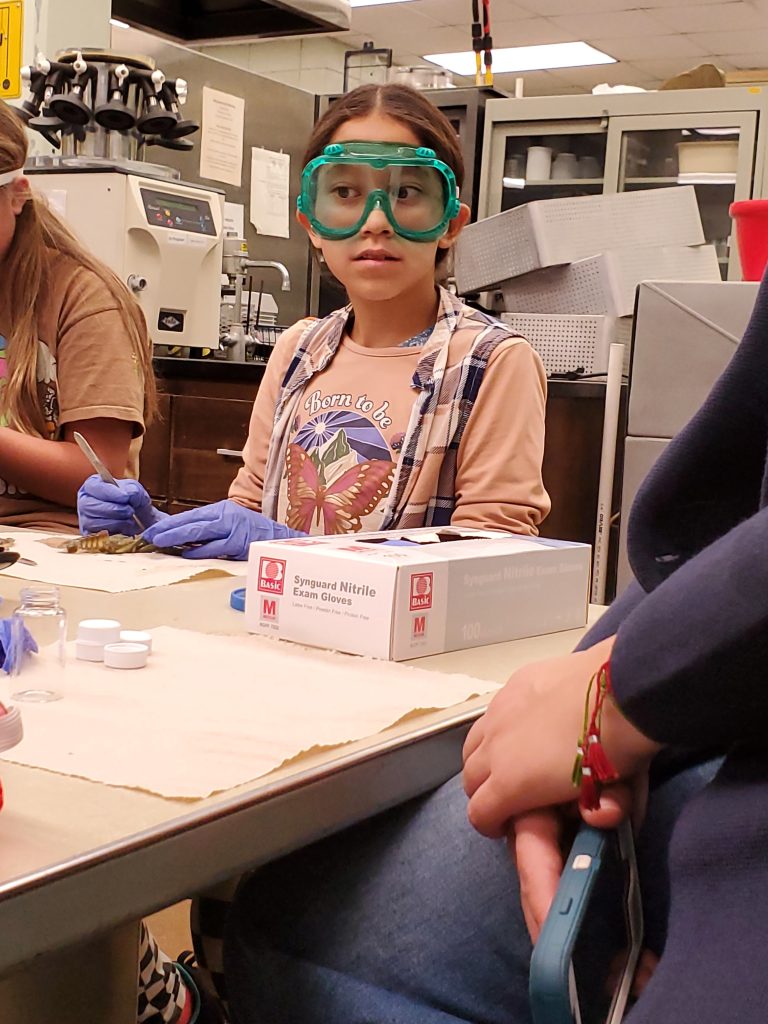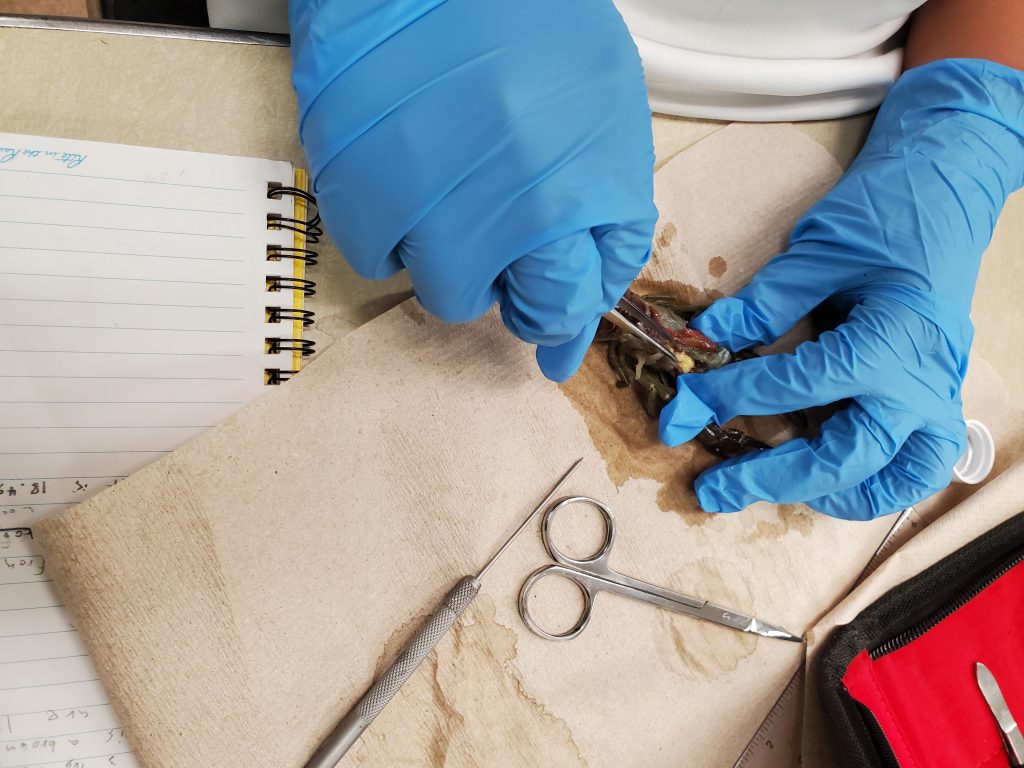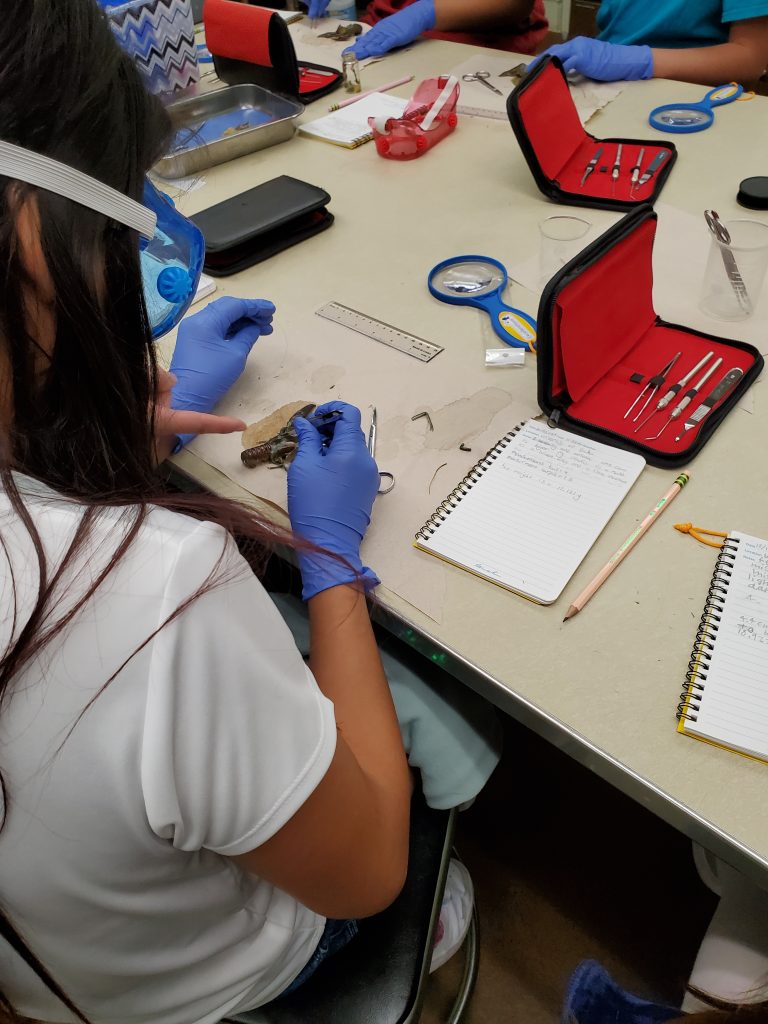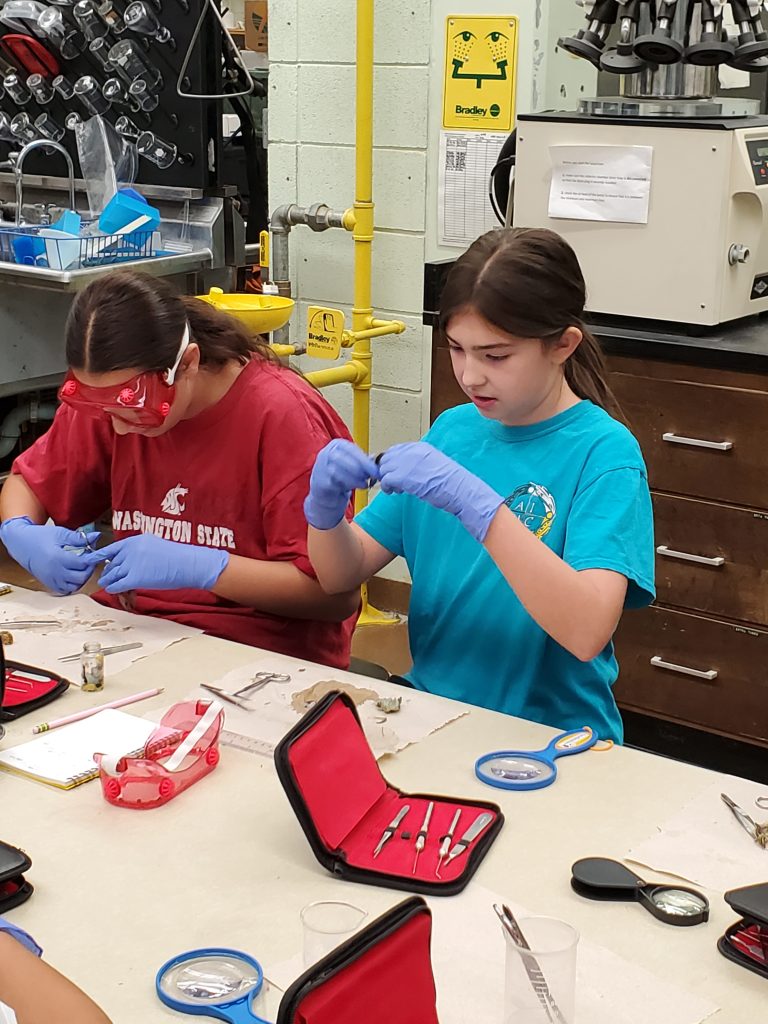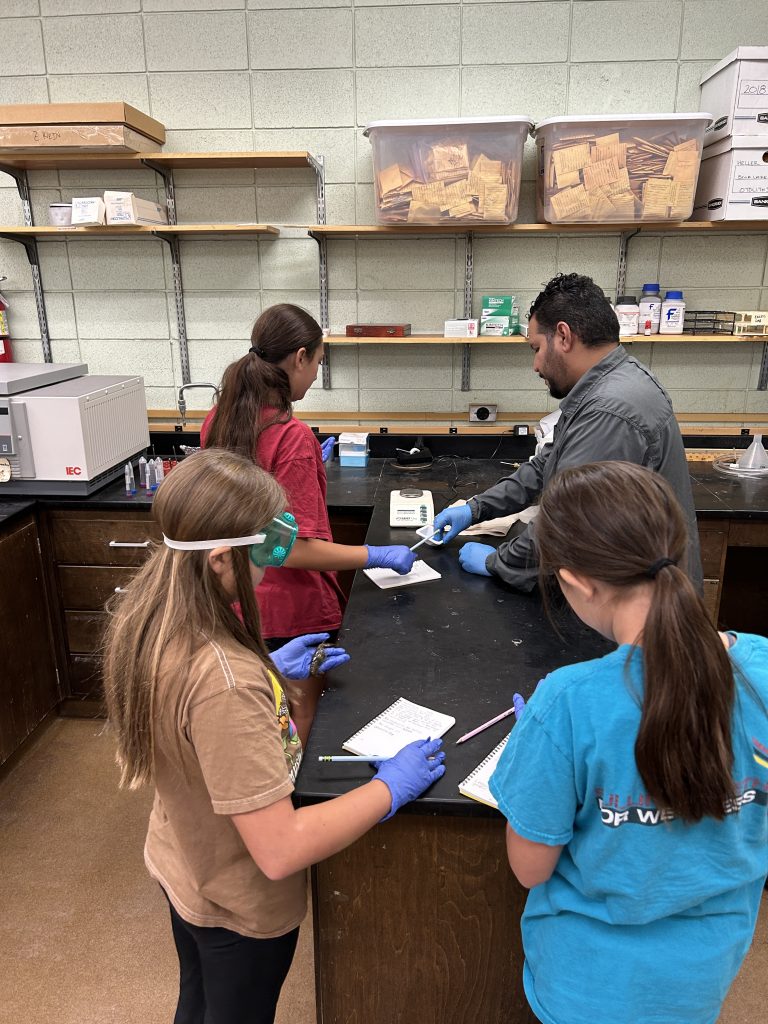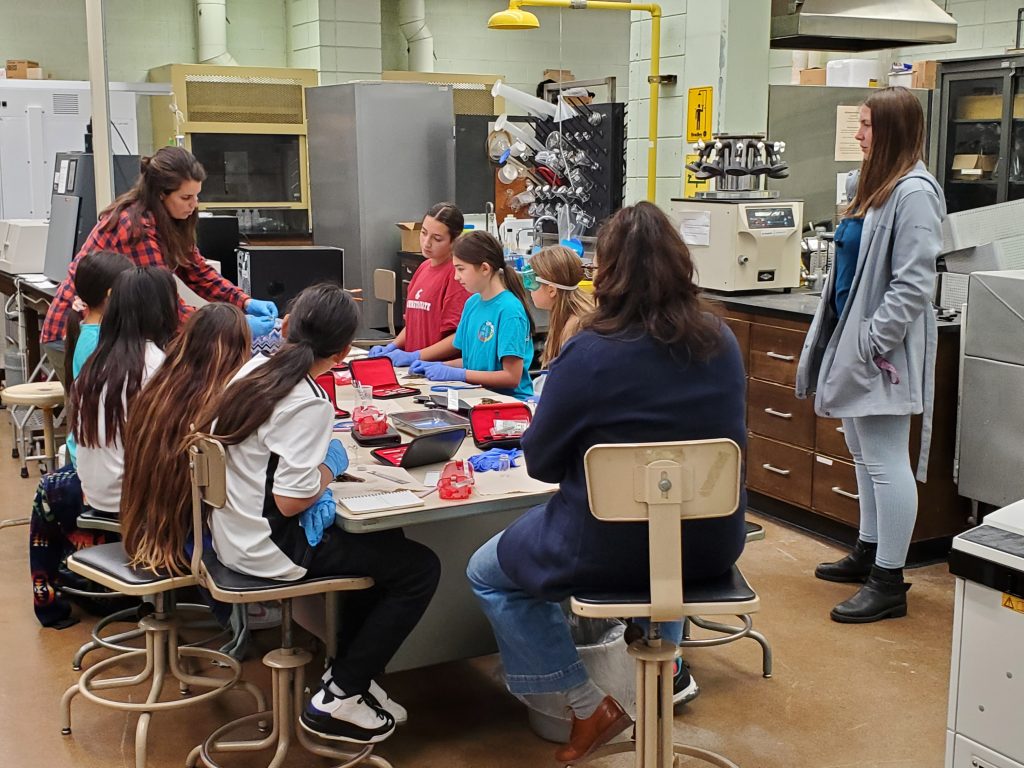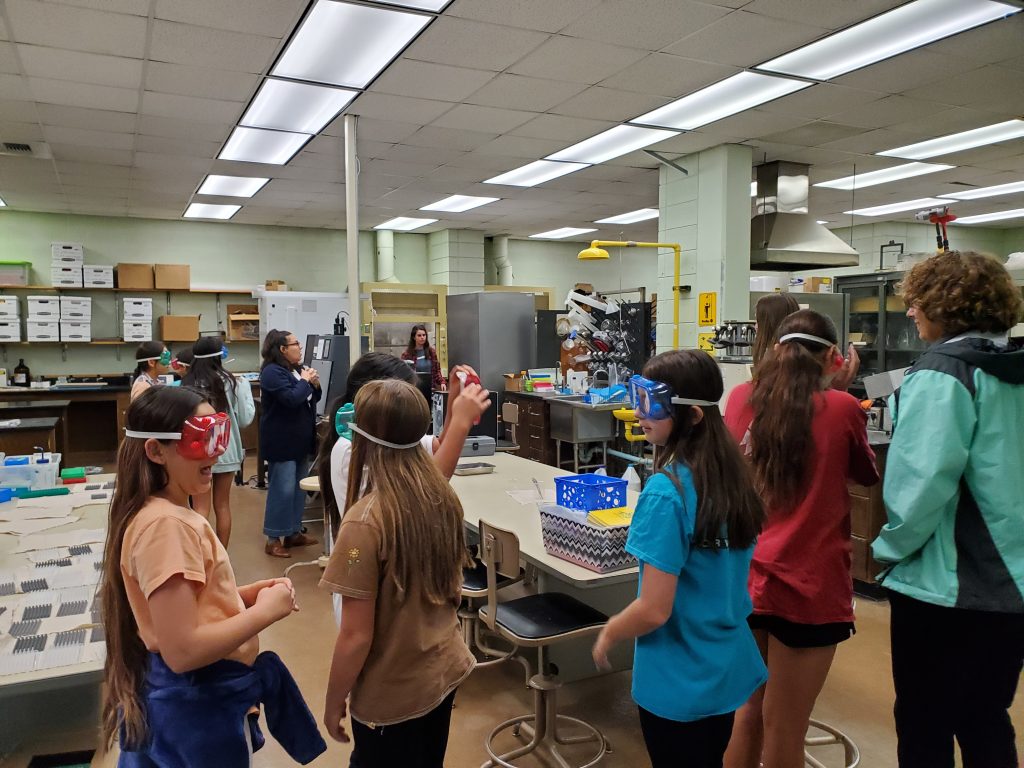For the first signal crayfish sampling trip, the team traveled to Little Boulder Campground by the Potlach River, a few minutes outside of Deary, ID. They spent time determining the exact sampling, recording, and labeling methods they would use for the rest of the field season. Out of the two sampling sites on the Potlach River, the team initially caught only a handful of signal crayfish, which are characterized by distinct turquoise/white patches at the base of their claws. So, they decided to set up some crayfish traps to be collected the next day.
The other two signal crayfish sampling sites were at Plantes Ferry in Spokane, WA, and downriver of Spokane’s Riverside Park Water Reclamation Facility. These areas – both near the Spokane River – are much closer to potential sources of 6PPD-Q (i.e. highly trafficked roads, urban areas, etc.) than the sampling sites on the Potlatch River. Sampling from a variety of different areas gave the team a more inclusive sample size and increased the chances of detecting significant levels of 6PPD-Q in the crayfish and water samples. Also, the signal crayfish caught in the Spokane River were notably larger than those caught in the Potlach River, meaning more tissue material could be extracted and tested for 6PPD-Q.
To make sure they caught enough rusty crayfish for the experiments, the team went to Magone Lake near John Day, OR. Characterized by a reddish-brown color and striking, rust-colored spots on their backs, rusty crayfish are extremely invasive; they’ll eat anything they can get their claws on, which can have huge impacts on the ecosystems they are invading (i.e. Magone Lake). This lake is overrun with rusty crayfish, so the team had no trouble catching more than enough for the experiments.
For the experiments, the team filled up five tanks with sixty liters of water each. Each tank was dosed with different amounts of 6PPD-Q: the first with 0 ng/L (since it was the control tank), the second with 5 ng/L, the third with 25 ng/L, the fourth with 95 ng/L, and the fifth with 250 ng/L. After letting the 6PPD-Q mix with the water in the tanks for an hour, the team put six signal crayfish in each tank. Over three days, two crayfish and water samples were taken from each tank every 24 hours, along with water quality data from the YSI. After the three days, the team dissected the crayfish and put the tissues in sample bottles to be processed for 6PPD0-Q.
After the excursion to Magone Lake, the team returned to Moscow to set up for the next few days of experiments. Same as with the signal crayfish experiments, the team filled up five tanks with sixty liters of water each with 6PPD-Q levels of 0 ng/L, 5 ng/L, 25 ng/L, 95 ng/L, and 250 ng/L. After letting the 6PPD-Q mix with the water in the tanks for an hour, the team put six rusty crayfish in each tank. Over three days, two crayfish and water samples were taken from each tank every 24 hours, along with water quality data from the YSI. After three days, the team dissected the crayfish and put the tissues in sample bottles to be processed for 6PPD0-Q.
The Salish School of Spokane is one of our partners in this research project. They are working to preserve Salish culture and raise awareness about dangerous pollutants in the Columbia River Basin that threaten humans and the environment. On October 12th, 2023, the SSS took a trip to the University of Idaho campus in Moscow, ID to learn about our project. The kids dissected some rusty crayfish (caught in Magone Lake) and learned about crayfish anatomy, their role in aquatic food webs, and how they make good bioindicators for tire wear pollution.
